

Talk tomorrow,
Kathy
Filed under: Advice, authors and illustrators, Courses, demystify, How to, inspiration, opportunity, revisions Tagged: Free Writing Video Series, Lexa Hillyer, Lin Oliver


Talk tomorrow,
Kathy
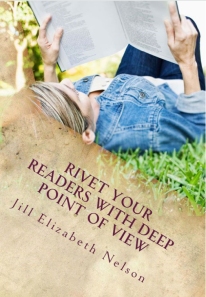 I added Jill Elizabeth Nelson, Rivet Your Readers with Deep Point of View to my writing library and want to recommend that you check it out. The information is good and the price is right – $3.99 on Kindle and $5.39 in paperback. You can take a look at Jill’s romantic suspense novels by clicking this link to her website. http://www.jillelizabethnelson.com/
I added Jill Elizabeth Nelson, Rivet Your Readers with Deep Point of View to my writing library and want to recommend that you check it out. The information is good and the price is right – $3.99 on Kindle and $5.39 in paperback. You can take a look at Jill’s romantic suspense novels by clicking this link to her website. http://www.jillelizabethnelson.com/
Below are just a few things that Jill explains in her book. She gets more in depth during the book.
In fiction writing, the position from which anything is considered in any given scene should be the character through whose head we are viewing events. That character’s psyche – his or her very soul – is the standpoint from which everything else in the scene is presented and evaluated. This particular character is the point-of-view character or POVC.
In order to remain firmly inside the POVC’s head, nothing in a scene can be presented for reader consideration that is outside that character’s awareness.
First Person:
Requires that nothing can be heard, seen, or experienced except through the senses of the character relating the story. However, a first-person narrative does allow for the viewpoint character to skip ahead in the sequence of events, and make a comment like, “If I had known…”, but you should weigh the moment and decide if the segue into telling is worth the loss of immediacy.
You may ask, “Isn’t first person automatically deep POV? No. It is possible to write “Shallow” and “telling” first person.
Second Person:
This viewpoint character is “you”. It is a problematic and difficult POV. Reader want to identify with the characters in a novel; they don’t necessarily want the writer to point the finger at them as the “you” character. Usually is an awkward presentation. Though writer will use this when describing a step-by-step “How to book”.
Third Person, Single POV:
Reqguires the author to remain inside one character throughout the story (much like first person). This creates an excellent opportunity for reader to identify with the main character. A drawback is the limitation in what can be shown. Events that happen outside the POVC’s experience must either be told to him by another character or discovered by that character in another way.
Third Person, Multiple POV:
Using this method, the writer puts the reader into the heads of more than one character during the course of the story. Romances do a lot of this by telling the story through the POV of the male and females protagonist. A scene with multiple POS’s is hard to pull off, unless you are a season writer. Head hopping can be confusing, so you are better off not ping-ponging around in everyone’s head. You will be better served by staying in one POV throughout the scene and conveying the subtleties of the reaction, attitude, and emotion emanating from other characters by employing body language, voice inflection, and mannerisms. By staying in one person head, they can misread the situation, and the misperception creates additional conflict valuable to the story.
Third Person, Omniscient POV:
The viewpoint character is an omniscient narrator who tells a story about a cast of character from an all-knowing position. The narrator himself becomes an unseen character that can share things that even the characters do not know about themselves, so may have a god-like feel. Sweeping epics like Lord of the Rings employ this POV to good effect. The advantage is that this POV helps manage the length of the story and the sheer number of characters. Book Thief with its narrator being Death comes to mind.
Are there any areas where I violate the basic Point-of-View by inserting comments that the POV character cannot know?
Example: Dan turned away and didn’t notice Harry slip out the door. (Dan would not be able to see Harry’s sneaky retreat.)
Here is a rewrite:
Fists clenching and unclenching, Dan gazed around the kitchen. Where was that Louse? He had to be here somewhere.
“Harry, I need to talk to you. Now!”
Silence answered Dan’s shout.
He strode toward the living room. A gentle whoosh of air behind him stopped him in his tracks. Dan whirled. The screen door was settling back in place. The coward was on the run.
Now the reader knows that Harry slipped out the door, but we haven’t left Dan’s POV in order to convey that information. Plus, by refusing to take the lazy way out and “tell” the information through a POV violation, the story becomes much more immediate and exciting.
Love her examples. I think you will, too.
Talk tomorrow,
Kathy
 I added Jill Elizabeth Nelson, Rivet Your Readers with Deep Point of View to my writing library and want to recommend that you check it out. The information is good and the price is right – $3.99 on Kindle and $5.39 in paperback. You can take a look at Jill’s romantic suspense novels by clicking this link to her website. http://www.jillelizabethnelson.com/
I added Jill Elizabeth Nelson, Rivet Your Readers with Deep Point of View to my writing library and want to recommend that you check it out. The information is good and the price is right – $3.99 on Kindle and $5.39 in paperback. You can take a look at Jill’s romantic suspense novels by clicking this link to her website. http://www.jillelizabethnelson.com/
Below are just a few things that Jill explains in her book. She gets more in depth during the book.
In fiction writing, the position from which anything is considered in any given scene should be the character through whose head we are viewing events. That character’s psyche – his or her very soul – is the standpoint from which everything else in the scene is presented and evaluated. This particular character is the point-of-view character or POVC.
In order to remain firmly inside the POVC’s head, nothing in a scene can be presented for reader consideration that is outside that character’s awareness.
First Person:
Requires that nothing can be heard, seen, or experienced except through the senses of the character relating the story. However, a first-person narrative does allow for the viewpoint character to skip ahead in the sequence of events, and make a comment like, “If I had known…”, but you should weigh the moment and decide if the segue into telling is worth the loss of immediacy.
You may ask, “Isn’t first person automatically deep POV? No. It is possible to write “Shallow” and “telling” first person.
Second Person:
This viewpoint character is “you”. It is a problematic and difficult POV. Reader want to identify with the characters in a novel; they don’t necessarily want the writer to point the finger at them as the “you” character. Usually is an awkward presentation. Though writer will use this when describing a step-by-step “How to book”.
Third Person, Single POV:
Reqguires the author to remain inside one character throughout the story (much like first person). This creates an excellent opportunity for reader to identify with the main character. A drawback is the limitation in what can be shown. Events that happen outside the POVC’s experience must either be told to him by another character or discovered by that character in another way.
Third Person, Multiple POV:
Using this method, the writer puts the reader into the heads of more than one character during the course of the story. Romances do a lot of this by telling the story through the POV of the male and females protagonist. A scene with multiple POS’s is hard to pull off, unless you are a season writer. Head hopping can be confusing, so you are better off not ping-ponging around in everyone’s head. You will be better served by staying in one POV throughout the scene and conveying the subtleties of the reaction, attitude, and emotion emanating from other characters by employing body language, voice inflection, and mannerisms. By staying in one person head, they can misread the situation, and the misperception creates additional conflict valuable to the story.
Third Person, Omniscient POV:
The viewpoint character is an omniscient narrator who tells a story about a cast of character from an all-knowing position. The narrator himself becomes an unseen character that can share things that even the characters do not know about themselves, so may have a god-like feel. Sweeping epics like Lord of the Rings employ this POV to good effect. The advantage is that this POV helps manage the length of the story and the sheer number of characters. Book Thief with its narrator being Death comes to mind.
Are there any areas where I violate the basic Point-of-View by inserting comments that the POV character cannot know?
Example: Dan turned away and didn’t notice Harry slip out the door. (Dan would not be able to see Harry’s sneaky retreat.)
Here is a rewrite:
Fists clenching and unclenching, Dan gazed around the kitchen. Where was that Louse? He had to be here somewhere.
“Harry, I need to talk to you. Now!”
Silence answered Dan’s shout.
He strode toward the living room. A gentle whoosh of air behind him stopped him in his tracks. Dan whirled. The screen door was settling back in place. The coward was on the run.
Now the reader knows that Harry slipped out the door, but we haven’t left Dan’s POV in order to convey that information. Plus, by refusing to take the lazy way out and “tell” the information through a POV violation, the story becomes much more immediate and exciting.
Love her examples. I think you will, too.
Talk tomorrow,
Kathy
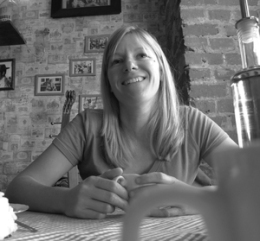 Anna Guillotte is an American illustrator, designer, and writer living in Heidelberg, Germany. With a degree in graphic design, Anna worked as a graphic artist in the corporate world for seven years. Though she was also a mural artist and painter throughout that time, she began illustrating in 2010 when she attended a mentor program for artists in San Diego, California where she lived at the time. Through this program she realized her true calling for storytelling. She has since joined the SCBWI, attended numerous SCBWI conferences and her illustrations have been published internationally. She enjoys creating whimsical, funny, touching, and beautiful art for the advertising, book, and animation markets.
Anna Guillotte is an American illustrator, designer, and writer living in Heidelberg, Germany. With a degree in graphic design, Anna worked as a graphic artist in the corporate world for seven years. Though she was also a mural artist and painter throughout that time, she began illustrating in 2010 when she attended a mentor program for artists in San Diego, California where she lived at the time. Through this program she realized her true calling for storytelling. She has since joined the SCBWI, attended numerous SCBWI conferences and her illustrations have been published internationally. She enjoys creating whimsical, funny, touching, and beautiful art for the advertising, book, and animation markets.
Here is Anna showing one of her techniques:
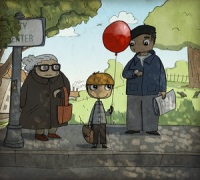 There’s something about light and shadows that really soothes the eye. I guess I could do research on the scientific reason as to why us humans are attracted to depth in images, but I already spend too much time on the net. I’m guessing since that we live in a 3-dimensional world our eyes are built to receive and digest lovely indications of depth (i.e. shadows, light vs. dark, cool vs. warm colors) and by nature we crave that. I tend to indulge in lighting my illustrations so I thought I would share how I go about doing that – from sketch to finished image.
There’s something about light and shadows that really soothes the eye. I guess I could do research on the scientific reason as to why us humans are attracted to depth in images, but I already spend too much time on the net. I’m guessing since that we live in a 3-dimensional world our eyes are built to receive and digest lovely indications of depth (i.e. shadows, light vs. dark, cool vs. warm colors) and by nature we crave that. I tend to indulge in lighting my illustrations so I thought I would share how I go about doing that – from sketch to finished image.
The key here is to make the scene believable, even if it’s not 100% accurate. So I guess in a sense you become a car salesman convincing a customer that not only is the Hyundai Elantra a great car, but the most awesome car you will ever buy in your life.
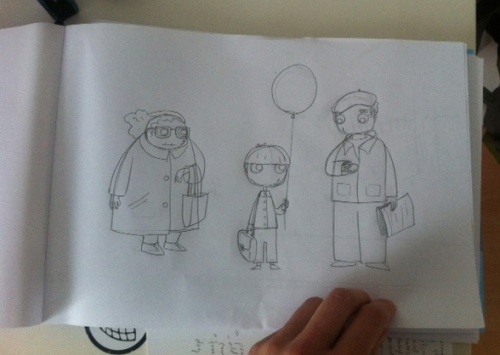
I start with a hand-drawn sketch. Why not go digital? Eh, the tablet doesn’t feel right and I guess I need to feel paper and pencils in my hand. I then scan the drawings in Photoshop.
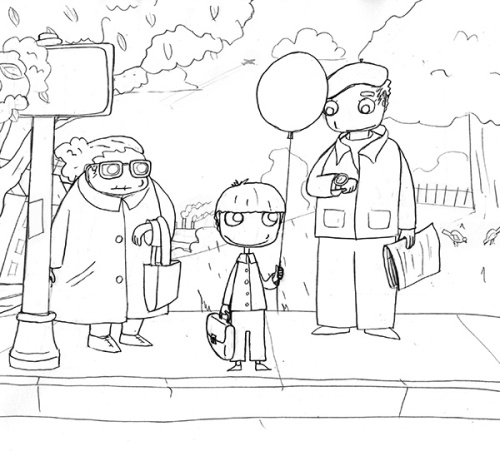
In Photoshop I clean up the images and create separate layers for the different visual elements. This allows for more control over placement, size, coloring, and opacity. For example, in the image below I have a layer for each character, the background, and several additional details I added in later (the plane, smokestacks, birds, fence, and sticker on signpost). Keep in mind that all the coloring layers are in the “multiply” blend mode – and the texture layers are in “color burn” and “overlay” blend mode. I suggest playing around with those settings and see what you come up with : )
Here is a video tutorial on How to use Blending mode in Photoshop CC.
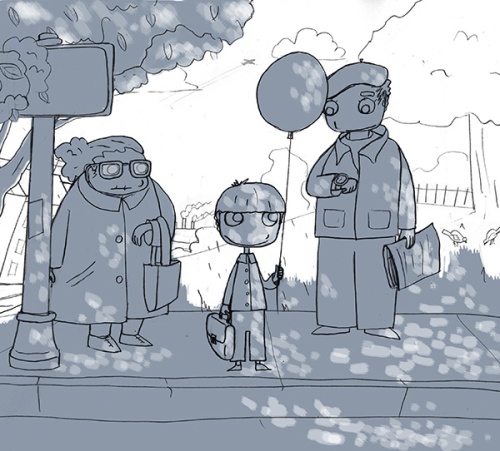
Now I block in the foreground shade. I imagined this bus stop scene taking place under a large tree. And as we have all observed – shade from trees are not one massive blob, but a shadow dance of many, many leaves. I made a layer of a dark blue and masked it out. Then I removed bit by bit the “shadow dance” until I thought it was convincing. Sometimes I consult with Google Images to make sure the lighting is believable.
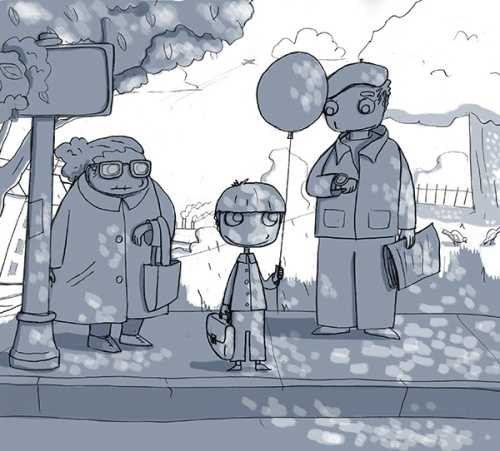
I added additional shadowing on a separate layer.
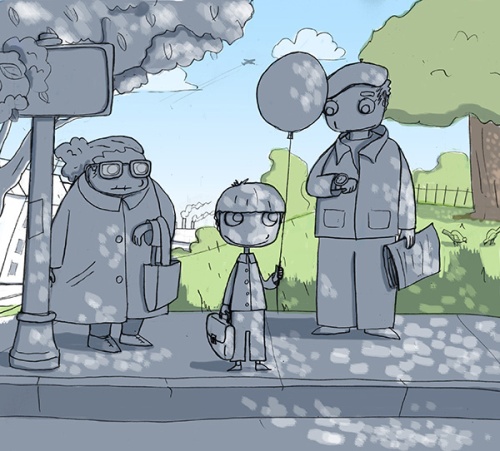
And now the color! We begin with the background color. The blue sky on a separate layer from the tree/grass.
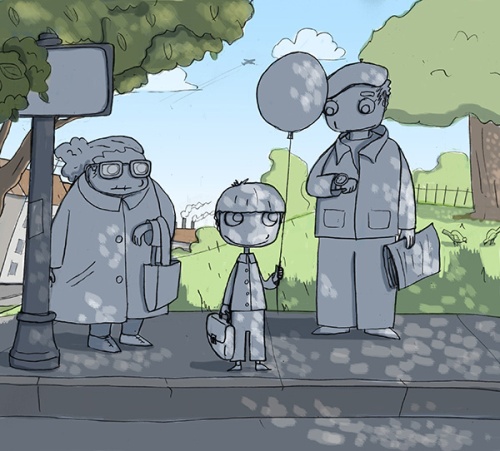
Another layer is added for the foreground objects.
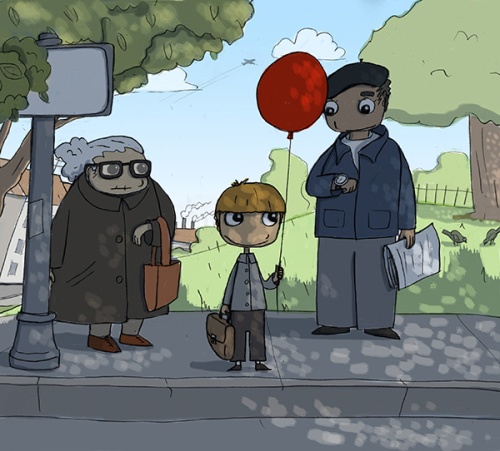
Now the characters are colored in on another layer.
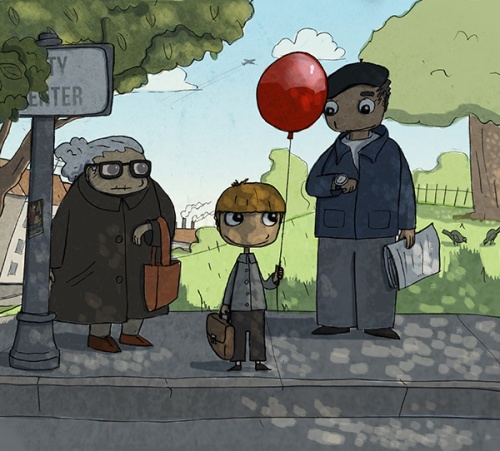
One of the biggest challenges of working in Photoshop is to make the images not look so “Photoshoppy”. So I have added a yellow layer (6%) and a water color image to add “texture”. I have also added several details, such as the balloon reflection, text on the bus sign and the little sticker on the sign post. As the image comes to life, I have fun adding in little details – this also helps with the “believability” factor.
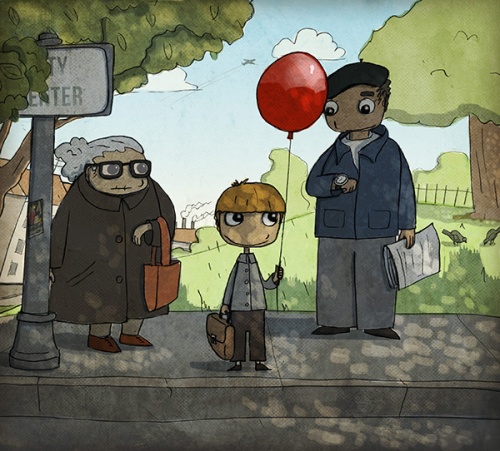
Additionally, I have added another “texture” layer (image of paint strokes on canvas) and a faint shadow around the edge of the image to give a more old-photo look.

How long have you been illustrating?
I started focusing on illustrating in 2010, but I have been painting for over 20 years. My paintings were very illustrative and often people would ask me “Why don’t you go into children’s book illustration?”
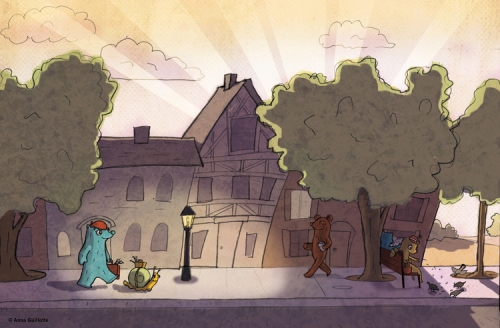
Where did you study graphic design?
I first started my studies at the University of Hartford/Hartford Art School and took every type of art class imaginable except glass blowing and jewelry. Then I studied film for a year, then moved on to multimedia (animation and video) and that’s when I finally decided to major in graphic design. I studied and majored in graphic design at Eastern Connecticut State University – my home state.
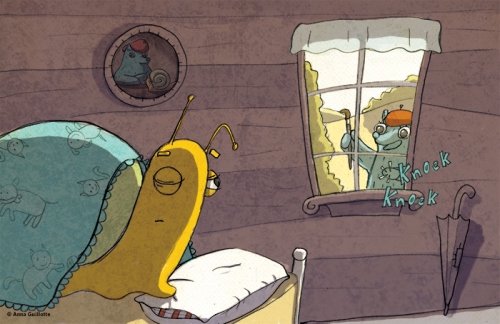
Have you attended other art related courses since studying Graphic Design?
I took a picture book illustration class and also a children’s book writing course at University of California San Diego.
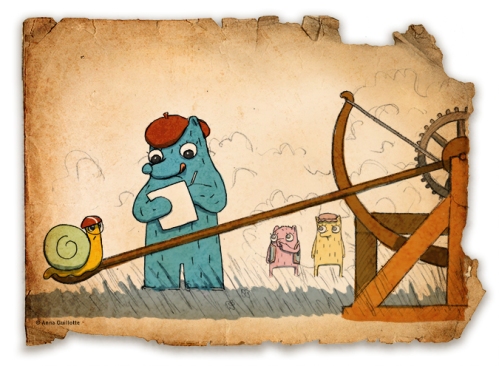
What was the first painting or illustration that you did where someone paid you for your artwork?
I painted an outdoor mural at an Elementary school in Boston.
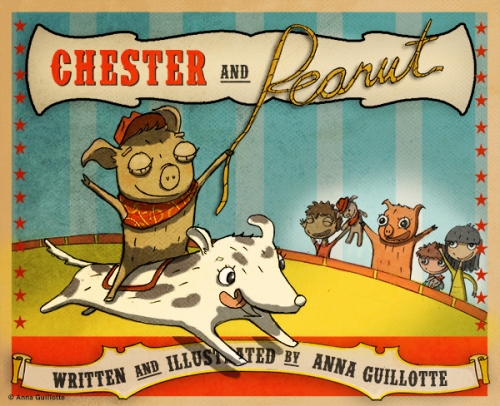
What type of job did you do right after you graduated?
I was hired as a graphic artist at Sonalyst, Inc. in Connecticut. While there, I mostly created graphics and multimedia for US Navy computer-based training, but also did graphics and web design for private companies.
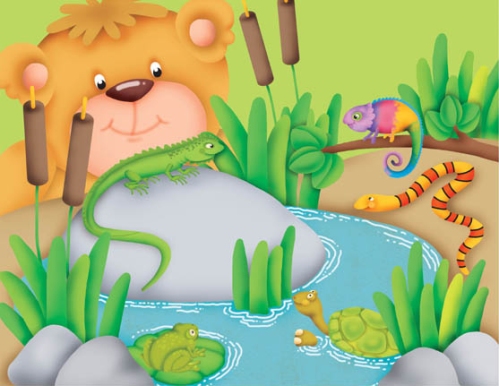
What do you think most influenced your style?
I think a lot of the shows and movies I watched as a kid influenced me. I loved the old cartoons like Tom and Jerry or Looney tunes. I’ve always been a big movie buff – not just the storytelling but also the cinematic style and I think that has carried over to my work.
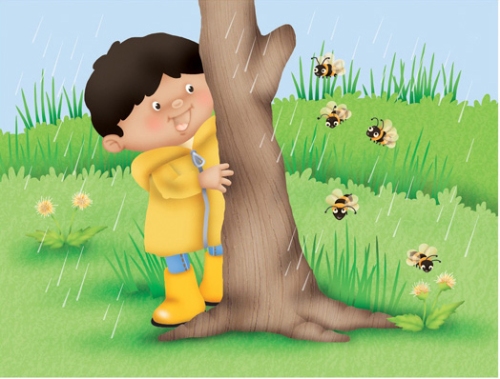
When did you decide you wanted to illustrate for children?
I signed up for an artist mentor program in San Diego in 2010. It was a program designed to help professional artists get unstuck. I was painting and doing murals but I felt my art career lacked a bit of focus. My mentor took one look at my work and suggested children’s book illustration. Her coworker knew Dan Santat from a previous job so we arranged a studio visit at Dan’s home (which Dan so graciously provided). Its funny, because at the time I didn’t know anything about children’s books and had no idea who Dan Santat was. He took the time to show me his work, how he got started, and what its like to work in the industry. After a few hours of the visit, I was sold!
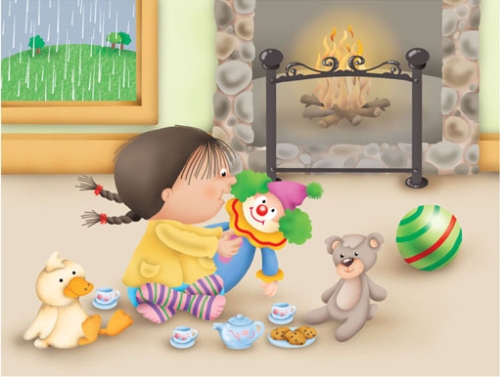
What type of art jobs have you landed?
I have worked as a graphic and multimedia artist, have done many children’s murals, and focusing on illustration work for the children’s book market and editorials.
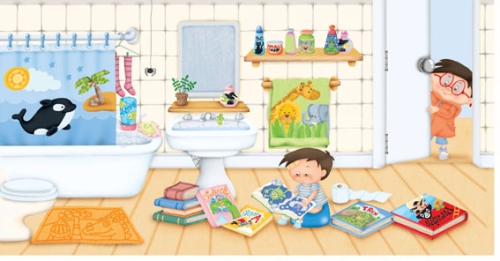
What are you doing to help connect with art directors and editors?
I have gone to many SCBWI conferences and heard art directors, agents and editors speak. It’s really helped me put a face to a name, so it doesn’t feel so abstract when sending my work to them. As far as how I connect – mostly I have sent postcards or emailed my website. I have also sent out a book dummy to several editors. I’ve also just created an email newsletter too for my contact list.
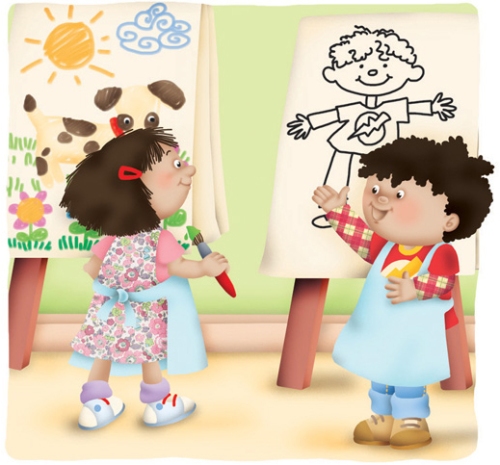
Have you put together a portfolio and or a book dummy?
I found that I have only used the physical portfolio when displaying at a SCBWI conference, otherwise I almost exclusively use my online portfolio. I have several book dummies as well, but they are mostly in digital format (PDF) as opposed to the physical book dummy format.
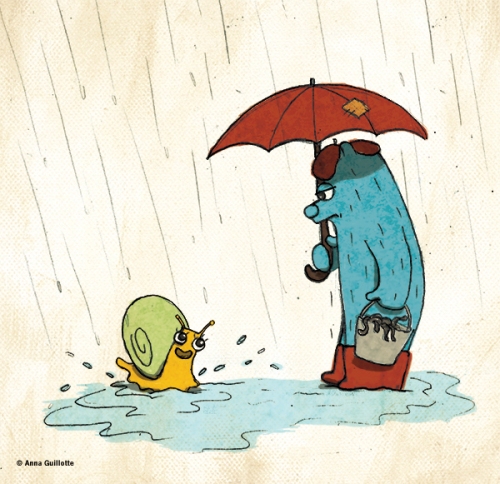
What made you decide to move to Germany?
I had no previous plans to move to Europe, but my partner got a job offer in Germany last year so I moved as well. I wrote about the decision in more detail on my blog: http://annaguillotte.com/blog/2013/11/13/why-i-am-moving-to-germany
It’s been an interesting experience to say the least and has definitely tested my limits at times. But having lived in the US my whole life, now I have the opportunity to live on the other side of the fence. Now I am the immigrant dealing with visa, work, driving, language, and cultural barriers. But since moving, I’ve had the unique opportunity to explore Europe and a experience a different lifestyle, which I think has given me an inspirational spark and influenced my work.
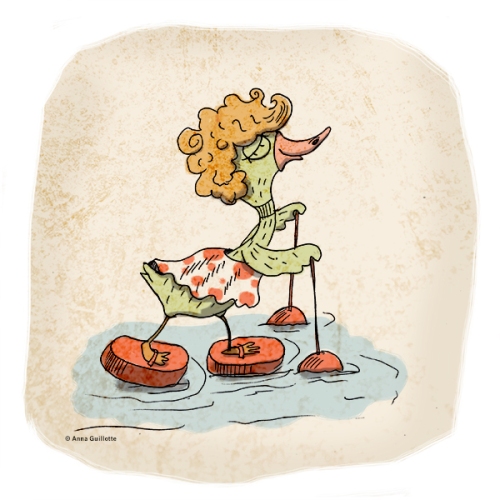
How would you compare the US market to the market for art in Germany?
For one, the German market is much, much smaller and for that reason has more international artists participating. My impression is the US market is so big and has so many talented artists that you don’t see as much artwork from outside the country.
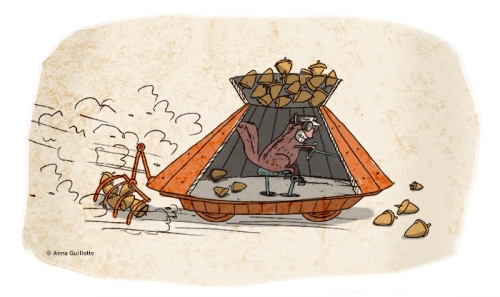
Have you exhibited your illustrations in Germany?
Not yet : )
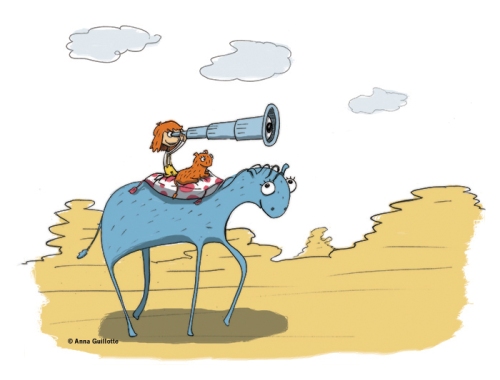
Have you done any illustrating for children’s magazines?
I have done some children’s illustrations for magazines but they were not specifically children’s magazines.
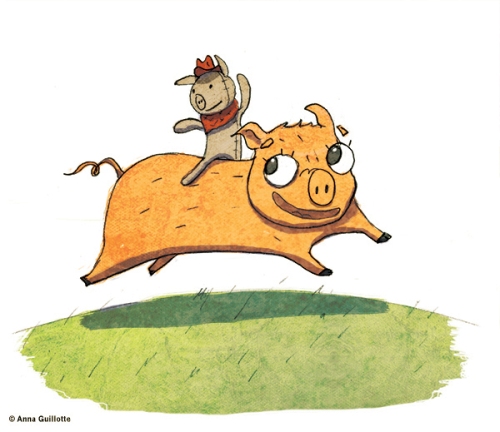
Do you have an Artist Rep. to represent you? If not, would you like to find representation?
I don’t have an artist rep now, but I would like a rep for two reasons: 1. Help with finding illustration projects and marketing so I can spend more time focusing on the creative part 2. To have a sounding board – a mutual, creative and professional relationship with someone where we can share creative ideas on how to make a project even better and enjoy the process. Though I am coming from a visual artist background, I would like to write and illustrate my own stories as well and would ideally like a representative that would work with both my art and writing or allow me to have both an art and literary agent.
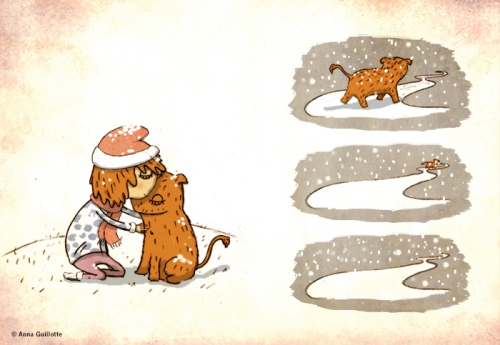
What types of things do you do to find illustration work?
I keep my website updated and have several online portfolios (Behance, LinkedIn, Devianart) so people can find me. I submit my art to magazines and illustration competitions. I also send postcards to art directors and I just made an email newsletter too.
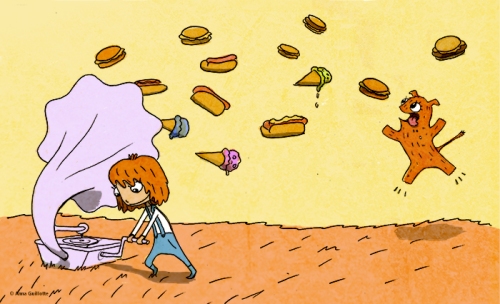
What is your favorite medium to use?
I have gravitated towards mixed media – drawing with pen, pencil, crayon, etc. scanning in and then coloring with Photoshop.
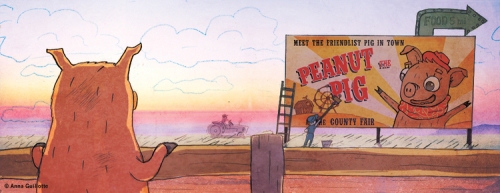
Has that changed over time?
Definitely! I used to paint using oils, then I switched to acrylic paints, then I began to import my paintings into Photoshop to edit them. About two years ago I began using Photoshop exclusively to color and have experimented using different textures to create a more natural look.
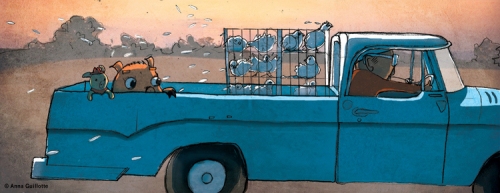
Do you take pictures or do any types of research before you start a project?
If I have a specific pose or lighting that I want to accurately capture, I will either take a photo of myself or search pictures on google images. I like to search google images also for ideas and inspiration.
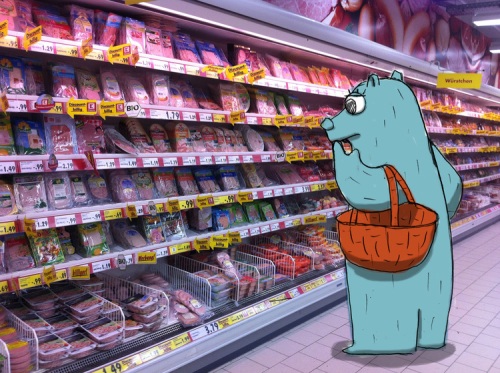
What are you working on now?
This past summer I was working on developing a story idea for one of my characters, Bearonardo. Now, I’m in a marketing mode and fine-tuning the business side of my illustrations. For example, being more consistent with contacting and updating art directors. It’s not the glamorous part, but just as important!
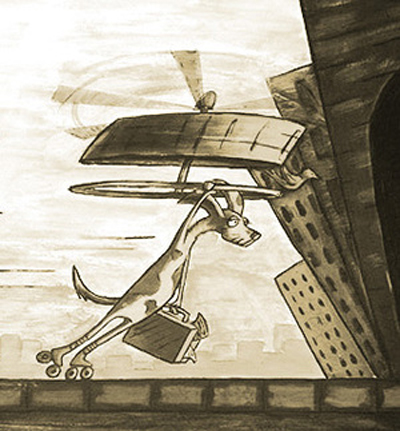
Do you want to write and illustrate a picture book?
I sure do! I have a bunch of stories I’ve written and made book dummies for. I’m definitely open to illustrating stories written by others too if they’re a good fit with me.
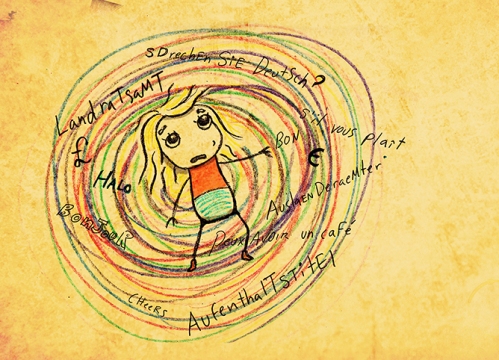 Do you have any material type tips you can share with us? Example: Paint or paper that you love – the best place to buy – a new product that you’ve tried – A how to tip, etc.
Do you have any material type tips you can share with us? Example: Paint or paper that you love – the best place to buy – a new product that you’ve tried – A how to tip, etc.
If you use Photoshop a lot in your illustrations, I would highly suggest experimenting with using different textures and patterns (whether you scan them in or find texture images online) and using the blending mode.

Thank you Anna for sharing you journey and process with us. Please let us know when your new picture books come out. We’d love to see them and cheer you on. You can visit Anna at: http://annaguillotte.com/
If you have a moment I am sure Anna would like to read your comments. I enjoy reading them, too, even if sometimes I don’t have time to reply to all of them. Thanks!
Talk tomorrow,
Kathy
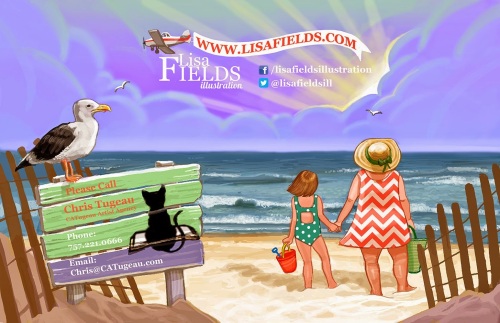
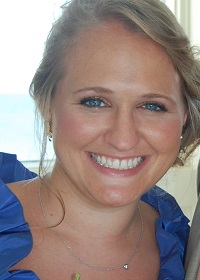 Lisa Fields is an illustrator based out of New York City and is represented by Chris Tugeau.
Lisa Fields is an illustrator based out of New York City and is represented by Chris Tugeau.
She received her BFA in Illustration from the Ringling School of Art and Design in Sarasota, Florida and attended The Illustration Academy.
Lisa is a member of the Society of Children’s Book Writers and Illustrators.
Some clients include:
Boys’ Life
Cobblestone Magazine
Cricket Magazine
Dig Magazine
Faces Magazine
Highlights for Children
Houghton Mifflin
Kaeden Books
Odyssey Magazine
Pelican Publishing
Pinata Books
Ranger Rick Magazine
Tricycle Press
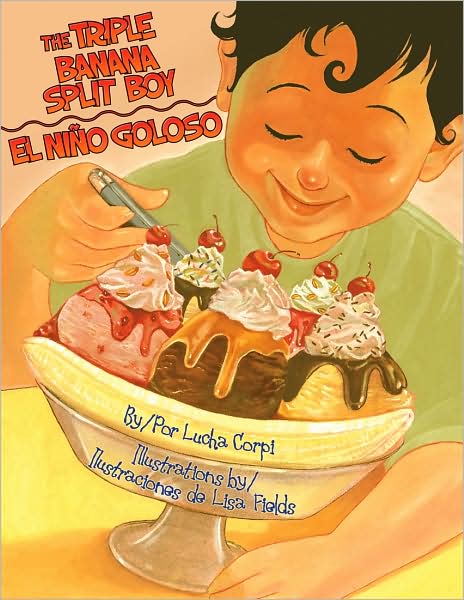
1. How long have you been illustrating?
I graduated from college in 2006. After graduating I moved back home with my parents for a while so I could start my freelance illustration career…but obviously like most artists I have been drawing for as long as I can remember.
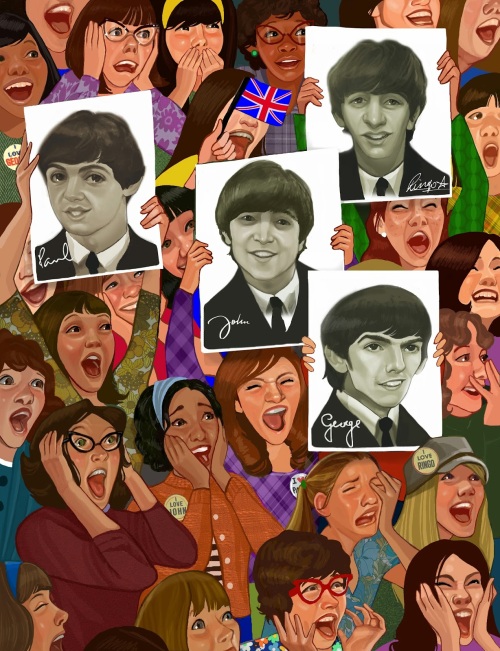
How did you end up attending the Ringling School of Art and Design in Sarasota, Florida to get your BFA?
I can’t remember how exactly I came across Ringling in my art school research. I know I had my portfolio reviewed by them at one of the school fairs. Ringling was rated one of the best art schools and it was in Florida by the beach! As an 18 year old I was very excited about both of those things. I went to visit the school with my mom and after the visit decided that out of all the art schools I had seen it was the best fit for me as a person and as an artist.
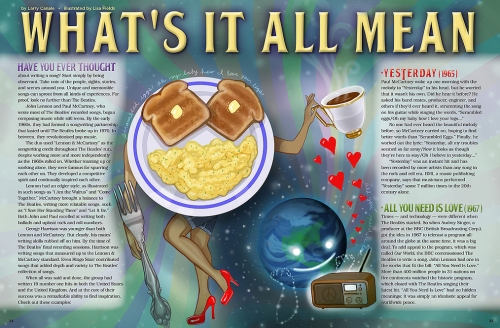
What types of classes did you take that really helped you to develop as an illustrator?
I learned a lot in figure drawing/painting classes. It is amazing how much you learn from drawing from life.
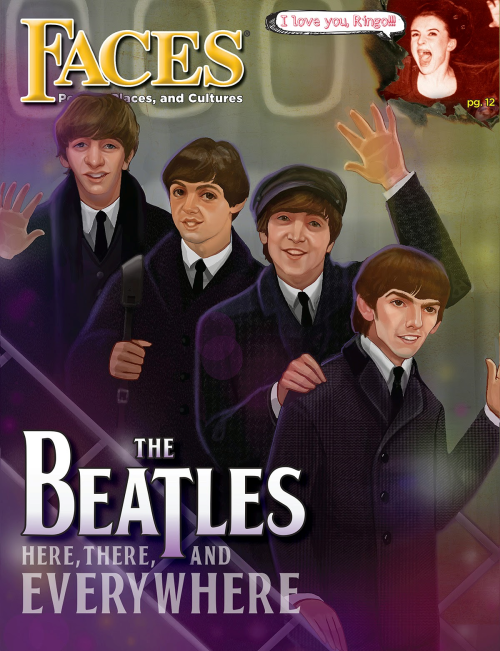
Tell us about the Illustration Academy. Is that an online college?
The illustration Academy really changed my life. It is a summer program that I attended after my junior year and then again after my senior year of College. I found out about it because Ringling actually hosted them for a few years. They gave a presentation to my school and once I saw it I knew that it was something I needed to do. Along with the amazing faculty that stays the entire workshop, every week there is a guest artist that comes in and gives you an assignment, critiques your work and talks about the industry in general. You get to meet, work with, and get advice from the top illustrators in the industry today. I encourage artists of any level to check them out: http://www.artconnectionacademy.com/IllustrationAcademy.aspx.
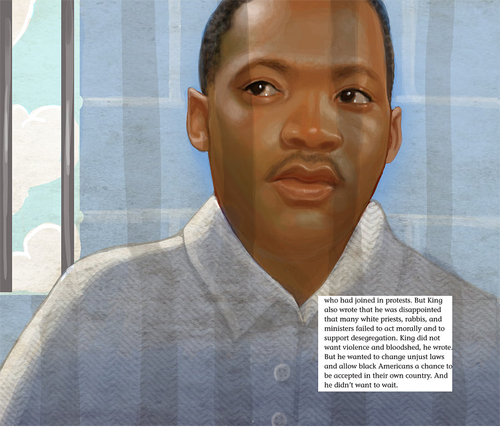
What did attending the Illustration Academy bring to the table for you?
I learned invaluable advice from all the faculty at the illustration academy. They helped me round out my portfolio and gave me a realistic view of what to expect once I got out of school. It was also a great time and REALLY inspiring.
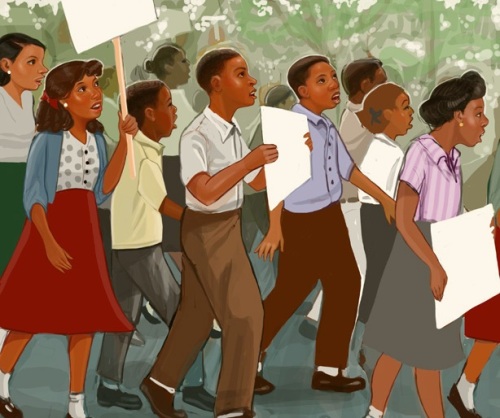

What was the first things you did that you got paid to do?
The first assignment I was paid for was for a Magazine called Las Olas magazine. I illustrated portraits of five local chefs in Fort Lauderdale, Florida.
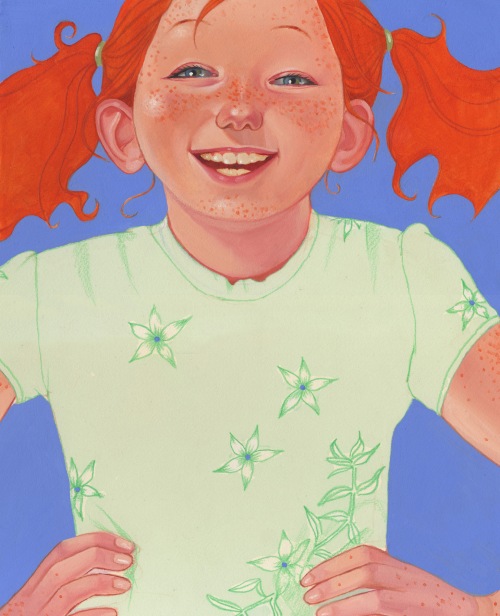
Have any of your college connections ended up helping you get work?
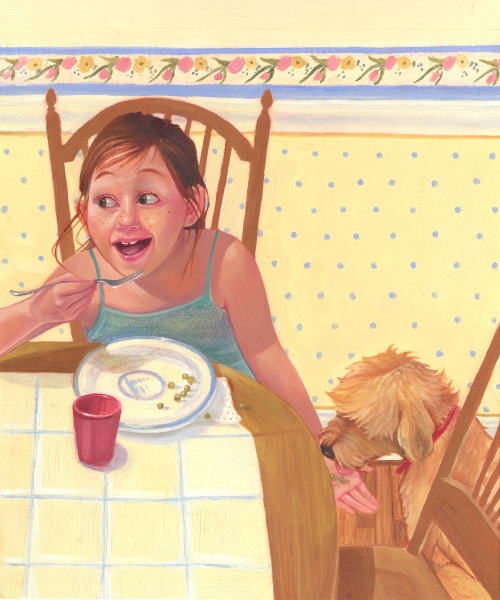
How did you end up leaving in Florida to live in New York?
The first assignment I was paid for was for a Magazine called Las Olas magazine. I illustrated portraits of five local chefs in Fort Lauderdale, Florida.

How and when did you decide that you wanted to illustrate children’s books?
Illustrating children’s books was something that I was always interested in but for some reason coming out of school I really did not have that many images of children in my portfolio. When I got out of school adding more images of kids to my portfolio was one of the first things I worked on.
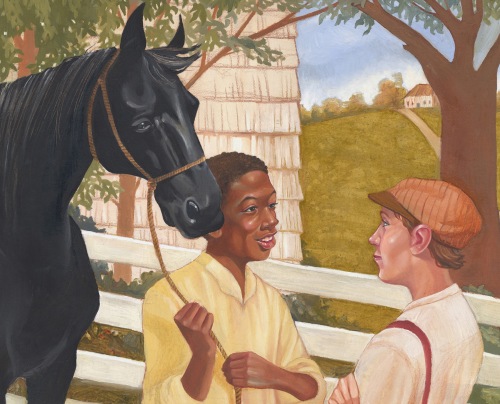
What was the title of your first book? When and how did you get that contract?
The first children’s book I illustrated was The Triple Banana Split Boy with Pinata books. The art director contacted me after a promotional mailing that I did. I would send out postcards every couple of months to a mailing list that I had created. The mailing list was mostly compiled from this book: http://www.amazon.com/2014-Childrens-Writers-Illustrators-Market/dp/159963726X/ref=sr_1_1?ie=UTF8&qid=undefined&sr=8-1&keywords=childrens+book+artist+guide.
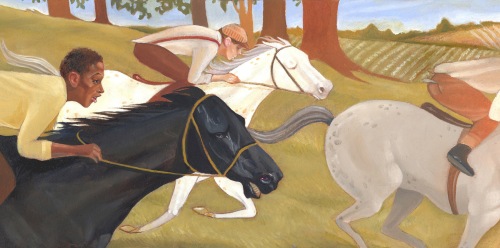
How long have your been represented by Christina Tugeau? How did the two of you connect?
I am fairly new to Chris’ agency. I have been represented by her for a little over a year now. One of her former artists that she used to represent was a teacher at Ringling and I remember him telling me and my friend to check out her site. I didn’t think I was ready for an agent at the time but agency with the Cat was always in the back of my mind. When I decided I wanted to get an agent she was the first person I emailed and I was thrilled that she wanted to set up a meeting the next time she came to New York City.
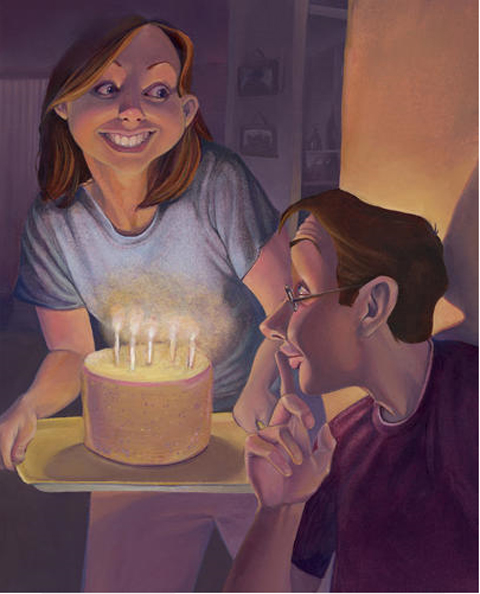
What types of things do you personally do to get your work seen by publishing professionals?
I still send out postcards myself every now again but that is mostly for editorial work. I try my best to stay active on social media because you never know who might end up on your page. I have a Facebook page and a twitter account. I have to admit I don’t think I have quite grasped the world of Twitter but I still tweet out new images just in case! I also try to keep my website and blog up to date with my most recent work. I am always bummed myself when I go to artists blogs that I like and it has not been updated in a few years so I try my best to keep on top of it.
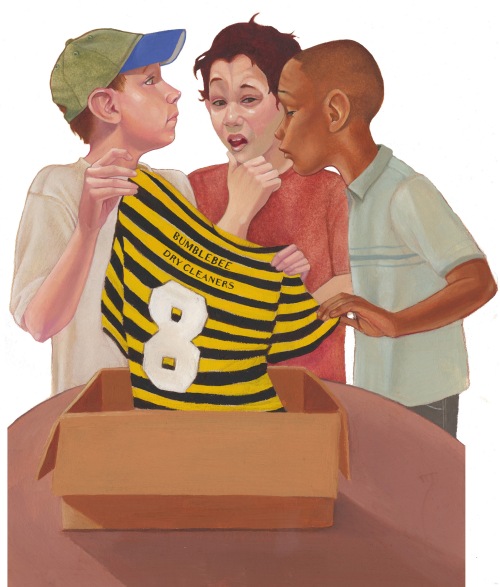
Have you ever tried to write and illustrate your own story?
This is definitely something that I am interested in. I have a few ideas floating around my head that I have to get on paper. I used to write stories and illustrate them all the time when I was a kid. It is hilarious to find them and read them now. I remember in elementary school we would get to write a story every year that would be published in the “publishing center” (ie a cardboard cover wrapped in wallpaper). It was the best time of the school year. One of my masterpieces was called The Princess and the Unicorn. You can’t get any more girly than that!
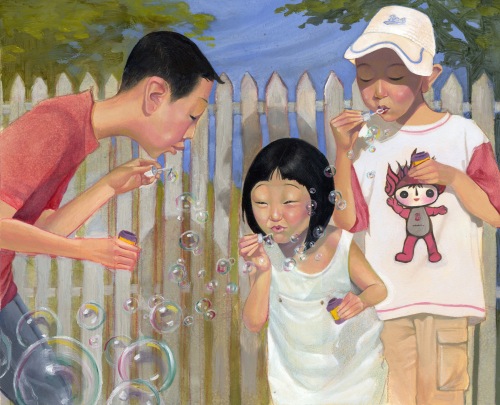
What is your favorite medium to use?
These days I have been working digitally. I got a Wacom cintiq a couple of years ago and fell in love with it. I live in a little NYC apartment so it is more practical for me to sit down at the computer instead of setting out all the paints.
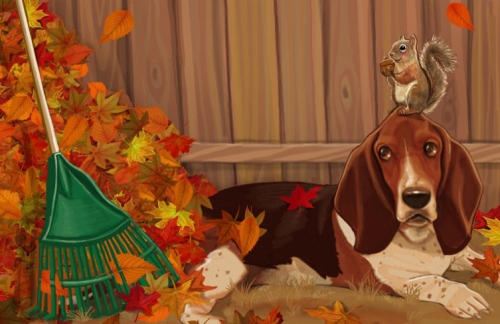
Have you seen your style change since you first started illustrating?
I think my style has changed a lot. I learn with every project that I do and I am always trying to do better than my last assignment. I think someone would probably be able to tell that the images were drawn by the same person but I think my work looks a little more polished and consistent now.
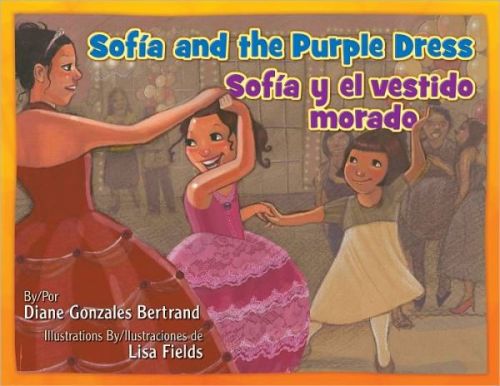
How many picture books have you illustrated?
I am currently working on my 4th book with Pinata books. I have illustrated two books for Pelican Publishing and one for Tricyle Press which was an imprint at Random House.
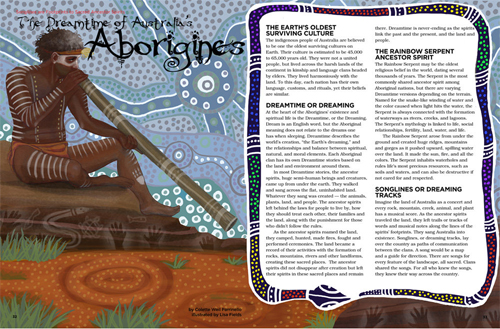
How did you get the contract with Pinata Books to illustrate GRADMA’S CHOCOLATE?
I had already illustrated The Triple Banana Split boy with Pinata Books. I think the art director I worked with thought that Grandma’s chocolate would be a good fit for me as well.
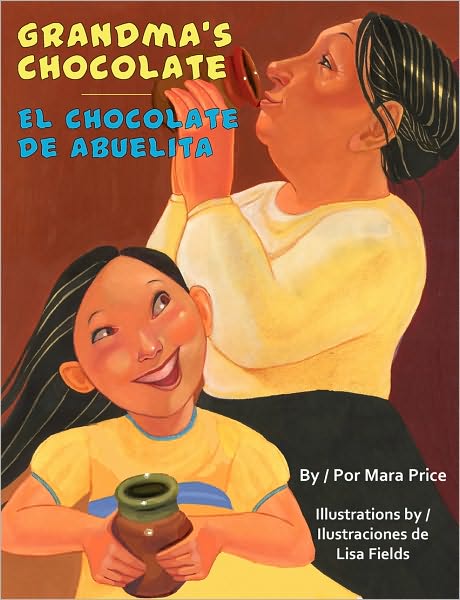
I see you, also illustrated TRIPLE BANANA SPLIY BOY with Pinata Books, too. Was that a two book deal?
It was! It was the first book that I illustrated.

What is your biggest success story? The thing you are most proud of?
I am always proud if a client comes back and asks me to do more work for them. After leaving school you don’t really get critiques anymore which is something that you were so used to all the time. When a client comes back to you and asks you to do more work for them that’s how you really know they were happy with what you did for them in the past. There are so many artists out there to choose from so it means a lot!
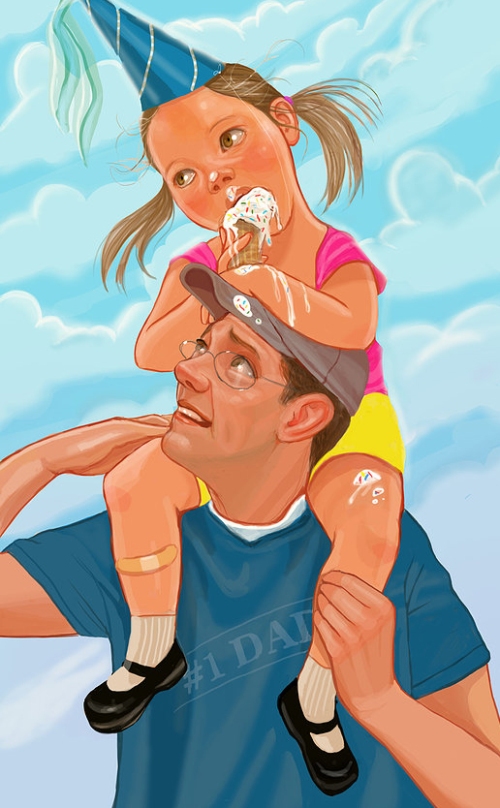
Are you open to working with self-published authors or is that something Christina would not let you do?
Typically I work with publishing houses but I might be open to it if it was a story that I really liked as well.
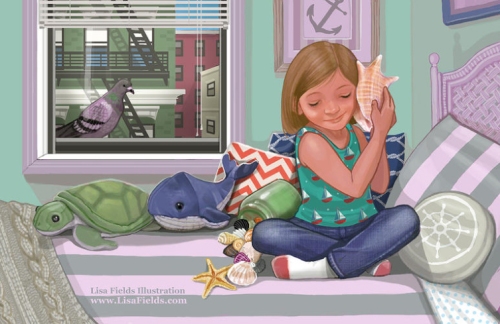
Have you thought about writing and illustrating your own books?

Is Lewis Tewanima: Born to Run your latest picture book? How did Christine get that contract for you?
Lewis Tewanima: Born to Run was the second book that I did for Pelican Publishing. I already had a contact at Pelican before I was represented by Chris. Again, I got the first book from a postcard mailing. The art director told me she had been keeping my postcards for years so you shouldn’t give up hope if you do not hear back from people right away.

Have you done any work for educational publishers?
Yes, I have done a lot of work in the past year for educational publishers through jobs that Chris has gotten me. I am currently working on my 4th reader for Heinemann Books at Houghton Mifflin. These types of jobs I think would be very hard to find without an agent so it has been really great working with Chris.
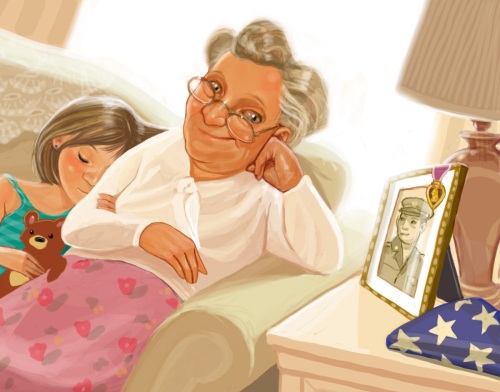
Do you use Photoshop in your work?
I do use Photoshop on my wacom cintiq.
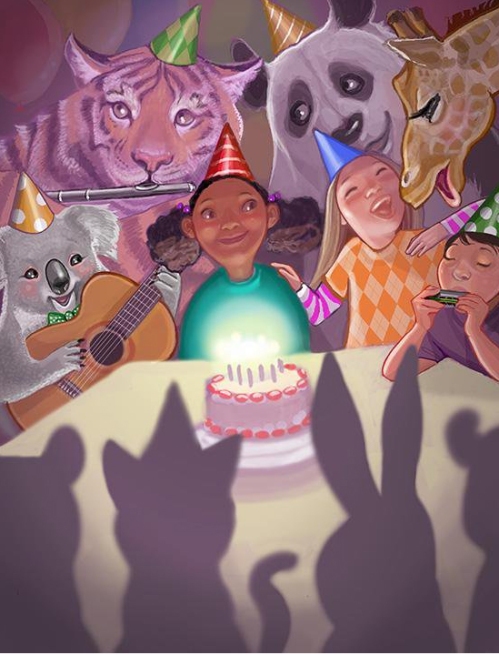
Do you own a graphic tablet?
I have a big wacom cintiq at my desk and also a portable one so I can take my illustrations on the go with me (or sometimes it is nice to just sit on the couch and work in a differnet room). I am able to sync my files between the two devices with Adobe’s cloud service.
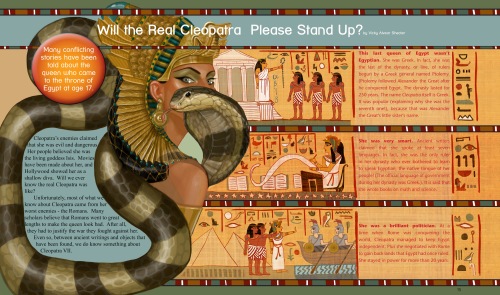
How much time do you spend illustrating?
I draw every day. If I don’t have an assignment to work on I work on some of my own stuff.
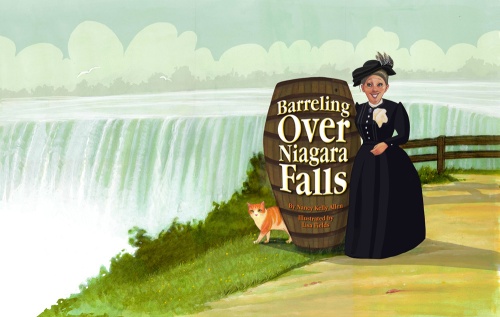
Do you have a studio set up in your house?
I have a studio area does that count?…NYC apartment living. One day I will have a house with a studio! J
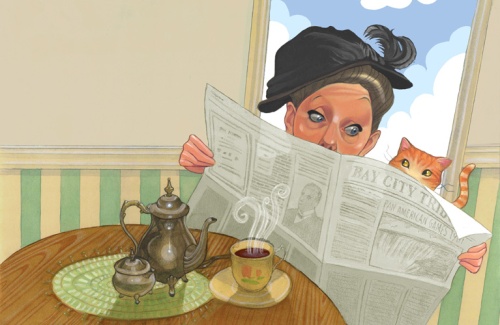
Is there anything in your studio, other than paint and brushes, that you couldn’t live without?
I have a rather large collection of children’s books and art books. I often look at them for inspiration. The children’s books have a wide range of styles. It is fun to see how different artist approach illustrating a book. My all time favorite is probably Kadir Nelson and I am loving Peter Brown and LeUyen Pham books these days as well.
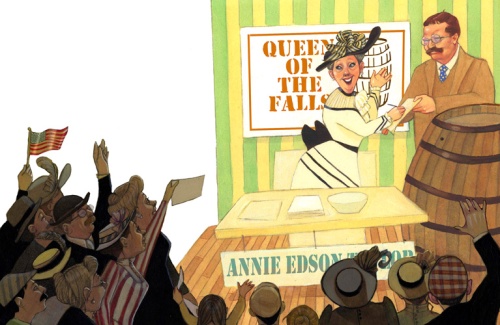
Do you take pictures or any other type of research before you start a project?
Yes, reference pictures are important for me. I usually find photos online or I take photo reference myself. The internet is an amazing tool. I don’t know what I would do without it. It would be nice to take reference pictures myself all the time but often projects call for different ages and ethnicities and the chances of knowing a model that fits the bill is not very likely in most cases.
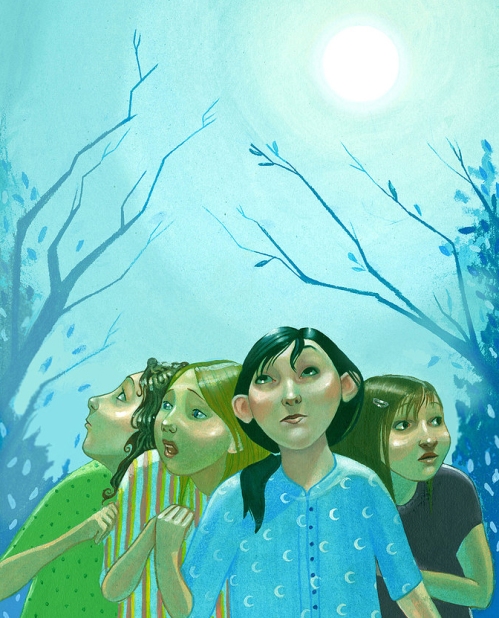
Do you think the Internet has opened doors for you?
The internet has definitely opened doors. Being able to have your portfolio online, up to date and accessible at all times is important.

Do you have any career dreams that you want to fulfill?
I would like to write and illustrate a book.
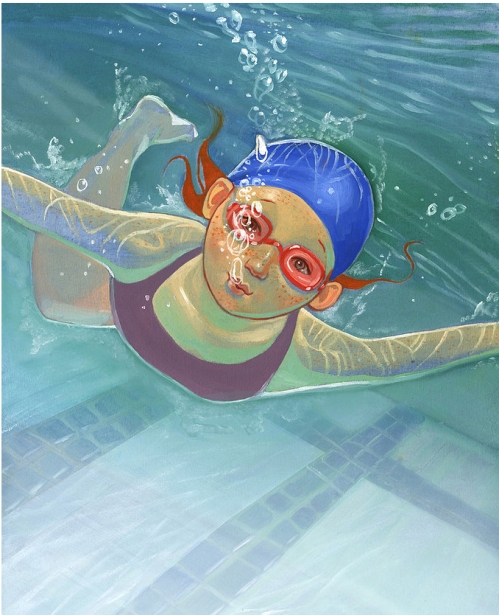
What are you working on now?
Right now I am working on some pirates for an article in Appleseeds magazine. The art director would like the pirates to be a bit menecing…which is not something that I typically do. It is a challenge and I am having a lot of fun with it! I am trying my best to make sure they are not cute, menecing pirates. I am also working on sketches for a reader for Heinemann and sketches for a book for Pinata.
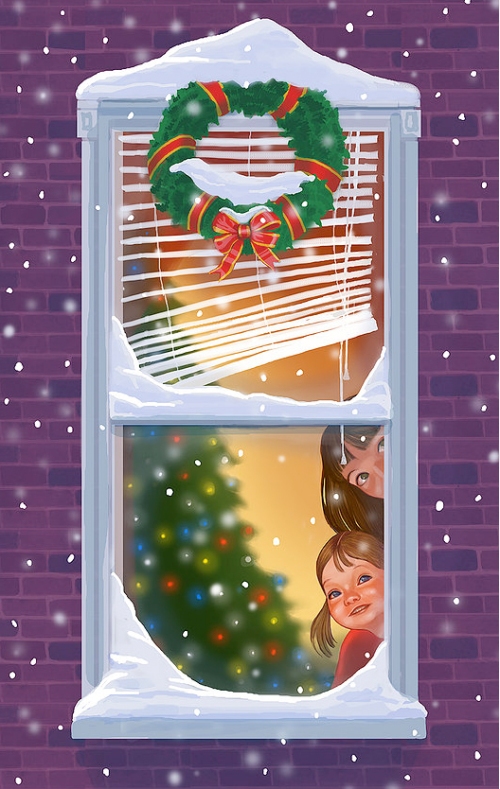
Are there any painting tips (materials, paper, etc.) you can share that work well for you? Technique tips?
I know that I have mentioned it a couple of times already but I love my Wacom cintiq. If you work digitally you should definitely look into it. It is expensive…but it is so worth it!
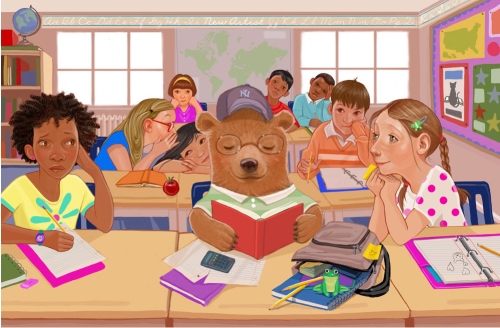
Any words of wisdom you can share with the illustrators who are trying to develop their career?
One of my favorite things to do is go to the bookstore and check out what is on the shelves. You will be inspired and will also see what art directors are looking for. If there are books that look like something your work would be a good fit for write down the name of the publisher/imprint and add them to your mailing list. I have had multiple people tell me that they saved my postcards until a project comes along that I would be a good fit for so stick with it and don’t get discouraged if you don’t hear back from people right away.
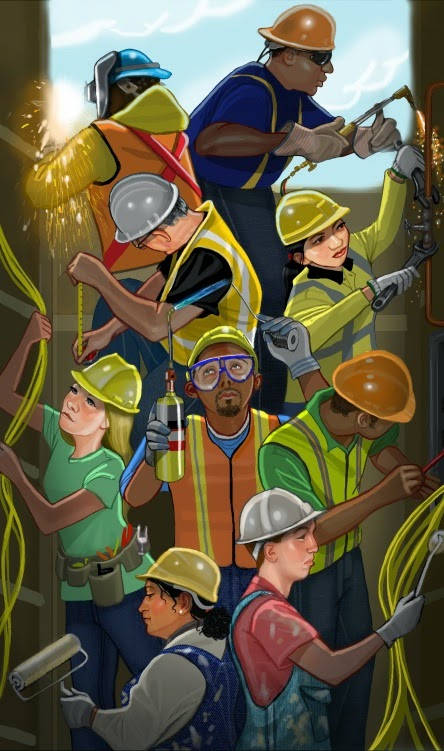
 Dilys Evans has been providing advice to young artists since 1978, when she founded Dilys Evans Fine Illustration.
Dilys Evans has been providing advice to young artists since 1978, when she founded Dilys Evans Fine Illustration.
Below is a summary of that advice—10 characteristics that she believes all outstanding picture books have in common.
Use it as a guide as you evaluate the picture books in your collection.
1. In the Beginning Was the Word
The pictures must be truly inspired by the story.
2. Preparation Is Paramount
The artist knows his or her characters, subject, and the setting inside and out.
3. A Great Cover Is a Great Start
If the cover art is compelling, it will make the viewer pick up the book and turn the pages.
4. The Artist Sets the Scene before the Story Begins
The inside flap offers a great opportunity to set the stage for the story or introduce a character.
5. The Endpapers Involve the Reader
Endpapers are another opportunity to add to the story or overall design of the book.
6. The Medium Is the Message
The perfect choice of medium to illustrate the text should convey every mood and nuance.
7. Every Picture Tells the Story
Every image is central to the story and moves it forward to the next page.
8. The Book Is a Form of Dramatic Art
Every scene must be carefully chosen to dully illustrate the drama and excitement of the story as it unfolds.
9. Art and Type Should Be a Perfect Marriage
The typeface should seem to be almost an extension of the art itself.
10. White Space Rules!
White space is a compositional element and not just a background to present the art.
Printed by the School Library Journal, September 2005
Talk tomorrow,
Kathy
 One Bite at a Time: How Writing a Novel is Like Eating a T-Rex and Other Things That Bite Back
One Bite at a Time: How Writing a Novel is Like Eating a T-Rex and Other Things That Bite Back Kami Kinard and Rebecca Petruck
The idea of writing an entire novel can be intimidating, but it doesn’t have to be when you learn how to move in stages. Children’s authors Kami Kinard and Rebecca Petruck break down the elements of solid novel writing, beginning with the hook and on through pitch, character development, plot structure, and practical tools for writing through to the end. Though the focus will be on middle grade and young adult writing, the tools are useful for anyone who wants to complete a publishable work.
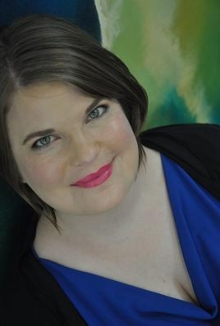 NaNoWriMos! This class will organize your approach so you launch into November with a plan that will result in a novel-like construction and not simply 50,000 words.
NaNoWriMos! This class will organize your approach so you launch into November with a plan that will result in a novel-like construction and not simply 50,000 words.
Bonus Critique: Register before September 20, 2014 and receive a free five-page critique and 20-minute Skype session with Kami Kinard, redeemable within six months of the course’s completion.
In addition, you will be entered to receive a free written critique of the first chapter of your novel (up to 5 pages) from Agent Rachael Orr of Prospect Agency.
You have the option of registering for the four-week class for $250 or the class PLUS a 25 page critique with a 60 minute telephone or Skype conversation for $350.
Click this link to register and read more: http://www.kidlitwritingschool.com/crafting-the-kidlit-novel.html
Talk tomorrow,
Kathy
 Bonus Critique: Register before September 20, 2014 and receive a free picture book manuscript review and 20-minute Skype session with Sudipta Bardhan-Quallen, redeemable within six months of the course’s completion.
Bonus Critique: Register before September 20, 2014 and receive a free picture book manuscript review and 20-minute Skype session with Sudipta Bardhan-Quallen, redeemable within six months of the course’s completion.
Author Sudipta Bardhan-Quallen is proud to offer the first in this series, a course on Plotting in Picture Books.
The Picture Book A to Z series is designed to be a collection of master level classes that cover all of the fundamentals of picture book craft. While each class is complete on its own, taken together, the series will teach you everything you ever wanted to now about picture books — and a lot more!
What You Will Learn
The ability to craft a strong picture book plot is one of the factors that separates unpublished writers from those who consistently sign publishing contracts to see their work in print. This course will teach you the essentials of creating compelling plots, starting with Arcs, Beginnings, and Climaxes — then literally taking you through the alphabet. Each topic will be explored in depth, both in the lessons and in the discussion forums and webinars. The writing exercises that are a part of the course are designed to help you apply the lessons to your own writing seamlessly and immediately. By the end of the course, you will never look at plotting the same way again!
How the course is structured:
Optional Add on Critique: Add an in-depth picture book manuscript critique with an hour-long Skype session with Sudipta Bardhan-Quallen at a special class-only discounted rate.
Click this link to register: http://www.kidlitwritingschool.com/picture-book-a-to-zs–plotting.html
Talk tomorrow,
Kathy
For my next manuscript I plan to write a thriller, so I bought
How to Write a Damn Good Thriller: A Step-by-Step Guide for Novelists and Screenwriters by James N. Frey to study.
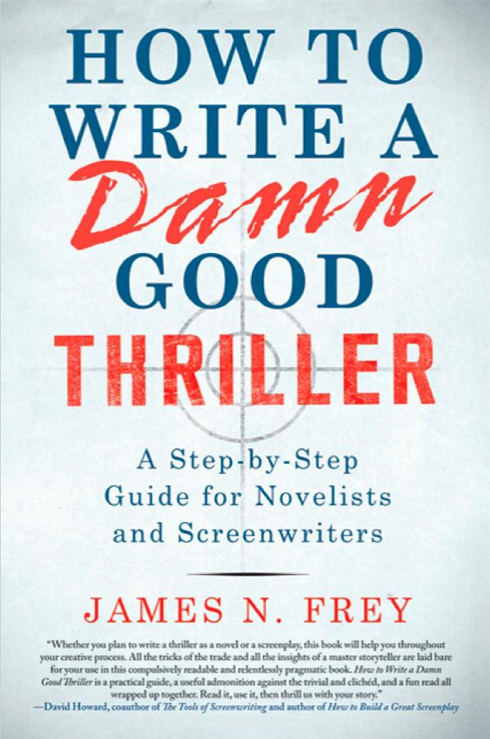
I thought you might be interested in James Frey’s list of what to pledge before starting your novel.
A thriller is a pulse-pounding supsense. In the US, mysteries are not considered thriller, though they share some common elements.
In a mystery, the hero has a mission to find a killer.
In a thriller, the hero has a mission to foil evil.
To write a damn good thriller, you need a killer attitude. Pledge to yourself to do the following:
Talk tomorrow,
Kathy
For my next manuscript I plan to write a thriller, so I bought
How to Write a Damn Good Thriller: A Step-by-Step Guide for Novelists and Screenwriters by James N. Frey to study.

I thought you might be interested in James Frey’s list of what to pledge before starting your novel.
A thriller is a pulse-pounding supsense. In the US, mysteries are not considered thriller, though they share some common elements.
In a mystery, the hero has a mission to find a killer.
In a thriller, the hero has a mission to foil evil.
To write a damn good thriller, you need a killer attitude. Pledge to yourself to do the following:
Talk tomorrow,
Kathy

Do you have an idea for a children’s book? Would you like to share your story with children around the world? Well, Laurie Wallmark is teaching
WRITING BOOKS FOR CHILDREN at Princeton Adult School.
 Thurs 7:00-9:00pm
Thurs 7:00-9:00pm
October 2 – November 6
In this course you’ll explore: the many joys of writing for children; types of children’s books; elements of a great story; tips to make your writing sparkle; traditional vs. self-publishing; printed books and e-books; avoiding scams, and much more.
Share it with your friends who may be starting out on their path to publishing.
Most of you already know Laurie, she was a wonderful Assistant Regional Advisor while I was Regional Advisor for the New Jersey SCBWI.
Here is a little bit about Laurie you might not know:
Laurie is pursuing an MFA in Writing for Children and Young Adults at Vermont College of Fine Arts. She has written numerous articles and stories in children’s magazines (Highlights, Spider, Cricket, and others). Her debut picture book, Ada, will be published by Creston Books in 2016.
Visit Laurie’s blog entitled “All News, No Schmooze: News and Notes for Busy Children’s Book Writers” at http://www.lauriewallmark.blogspot.com.
Talk tomorrow,
Kathy
Most writers know every story needs a protagonist with a problem, but your MC also needs to be interesting, compelling, and sympathetic to keep the readers wanting more. We want our characters to jump off the page and grab our readers by the throat. Plus, we want our readers to remember and think about our characters and our story long after they close our book.
1. MC has a problem that needs to be solved
Make sure your protagonist is the one with the problem and no one else can solve this problem (or solve it as well as he or she can. The MC has to be central to the entire issue.
2. MC has the ability to act
Don’t let your protagonists go around just reacting to things when they happen. Your MC should make things happen and move the story along through his or her choices and actions. A protagonist who knows what she wants and makes the story happen is a far more compelling character than one who sits around and waits for the story to happen. Make sure your protagonist is more than just someone in the middle of a mess.
If this is not happening in your book, you need to adjust your story in order to get your protagonist in a position where they can affect the change.
3. MC needs reasons to act
You can always give your MC something to do, but they need to have good reasons for their actions or your story will start to stretch credibility as to why they would get involved in something that clearly don’t care about. If you want to have your protagonist risk their life or happiness, make sure it’s for a reason readers will understand. NOTE: This is where a critique group comes in handy.
4. MC needs a compelling quality
Like I said in the beginning, we want to make our MC interesting. Maybe they’re funny, smart or twisted. Maybe your MC has an unusual talent, skill, or quark. Whatever you choose, there needs to be a quality that makes a reader want to know more. Most times the thing that is compelling is also contradictory, making the reader want to know how these two things work together, thus hooking the reader.
5. MC has something to lose
Just having a reason to act isn’t enough, so think about having your MC lose something that matters. This is a powerful motivating tool that will enable you to force your protagonist to do what he normally wouldn’t. You can have them take risks they would never take if there are consequences hanging over their head. This will make readers worry that your MC might suffer those consequences and lose what matters most to him.
6. MC should have something to gain
An important aspect of the story’s stakes that’s sometimes forgotten or not thought through well enough is giving the MC something to gain. Readers want to see a protagonist rewarded for all their hard work and sacrifice, and a reason for your protagonist to keep going when everything says give up.
7. Give Your MC the capacity to change
The sole of the story is character growth. It’s what turns it from a series of plot scenes to a tale worth writing. Giving your protagonist the ability to learn from his experiences and become a better (though not always) person will deepen your story. Your MC shouldn’t be the same person as they were when the story began.
8. MC needs an interesting flaw
It is the flaws that make your MC interesting. Flaws let you show character growth and give your protagonist a way to improve themselves. Maybe your MC knows about this flaw and is actively trying to fix it, or perhaps he or she hasn’t a clue and change is being forced upon them. This flaw could be the very thing that allows your MC to survive and overcome the problems. Of course, it could also be the cause of the entire mess.
9. MC has a secret
You don’t want your MC to be predictable – boring. A good way to keep your protagonist interesting is to have your MC hide something. Readers will wonder what that secret is and how it affects the story. Having your protagonist be a little cryptic, will keep your readers dying to find out.
10. MC needs someone or something interesting trying to stop him
Don’t forget that your protagonist needs an antagonist standing against him. The stronger the antagonist is that goes up against your MC, the more tension, suspense and victory you will provide for the reader. Give the reader a villain they will love to hate. The payoff will be keeping your readers turning the pages and reading into the wee hours of the morning.
Do you have another tips for juicing up your characters? We’d love to hear it.
Talk tomorrow,
Kathy
HAPPY LABOR DAY!
Since it is now September, I figured I would post this opportunity for those children’s writers and Illustrators who live within driving distance in Michigan, New Jersey , PA, and New York to met David Small and Holly McGhee.
The third poster down: Studio B in Maplewood, NJ is bringing together five children’s author/illustrators to discuss the process of writing a children’s book.
You can see all the details in the posters below:
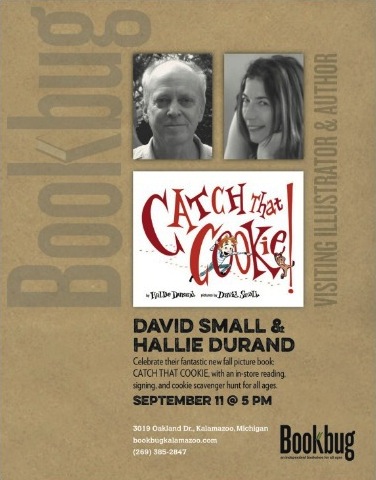
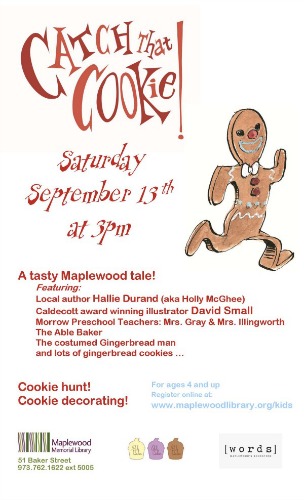
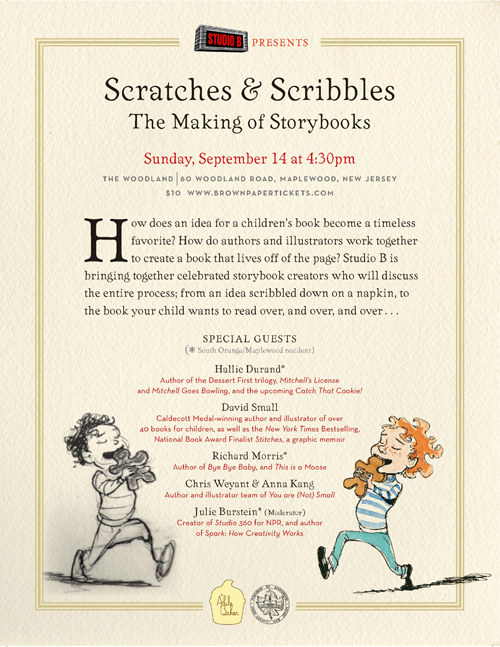
A COMPLETE LIST OF APPEARENCES:
Wednesday, September 10, 2014, 6 P.M., Kalamazoo Public Library
A Conversation with David Small & Hallie Durand
315 South Rose Street , Kalamazoo, MI 49007
Thursday, September 11, 2014, 5:00 P.M., Bookbug, Kalamazoo
Cookie hunt & Book signing
3019 Oakland Dr, Kalamazoo, MI 49008
And here’s the link for that one.
Saturday, September 13 2014, 3:00 P.M., Maplewood Library
Scavenger hunt & Cookie decorating, with a live rogue cookie!
51 Baker Street, Maplewood, NJ 07040
http://www.maplewoodlibrary.org/kids-events/
Sunday, September 14, 2014, 12:00 P.M., Paramus Public Library
Scavenger hunt & Reading, with a live rogue cookie!
E116 Century Road, Paramus, NJ 07652
RSVP 201-599-1309
Sunday, September 14, 2014, Studio B Honcho
Scratches & Scribbles Event for aspiring or already arrived Writers & Artists
60 Woodland Road, Maplewood, NJ 07040
http://www.brownpapertickets.com/event/830322
Monday, September 15, 4:00 P.M., WordsMaplewood Bookstore
Hallie Durand & David Small
Quick Drawing Lesson, Shapes & Contours, & Book Signing
179 Maplewood Avenue, Maplewood, NJ 07040
Talk tomorrow,
Kathy
I would like to introduce you to illustrator Rebecca Caridad. I think you will enjoy reading the interview I had with her and getting to know her through her playful artwork. Here is Rebecca:
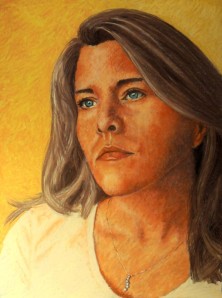 For me, illustration is the key to my secret garden, my golden ticket, my looking glass, my glass slipper. I draw and paint as a way to free my mind and escape into the many worlds of the written word. Whether it be for the pages of children’s books, greeting cards, gifts, or decor; I incorporate children, adults, animals, fantasy creatures, and landscapes in a unique and imaginative way in order to tell the story. I work digitally to bring my characters and environments to life and transport the viewer to a place of dreams.
For me, illustration is the key to my secret garden, my golden ticket, my looking glass, my glass slipper. I draw and paint as a way to free my mind and escape into the many worlds of the written word. Whether it be for the pages of children’s books, greeting cards, gifts, or decor; I incorporate children, adults, animals, fantasy creatures, and landscapes in a unique and imaginative way in order to tell the story. I work digitally to bring my characters and environments to life and transport the viewer to a place of dreams.
Sep 1997 – May 2001, University of Delaware, Bachelor of Fine Arts; concentration: Photography
Jan 2002 – May 2003, William Paterson University, Initial Certification Program; K-12 Teacher of Art
Jun 2010 – May 2014, Academy of Art University (AAU), Master of Fine Arts; Traditional Illustration Program: Children’s Book Illustration
2014 MFA Illustration Spring Show
Here is Rebecca discussing her process:
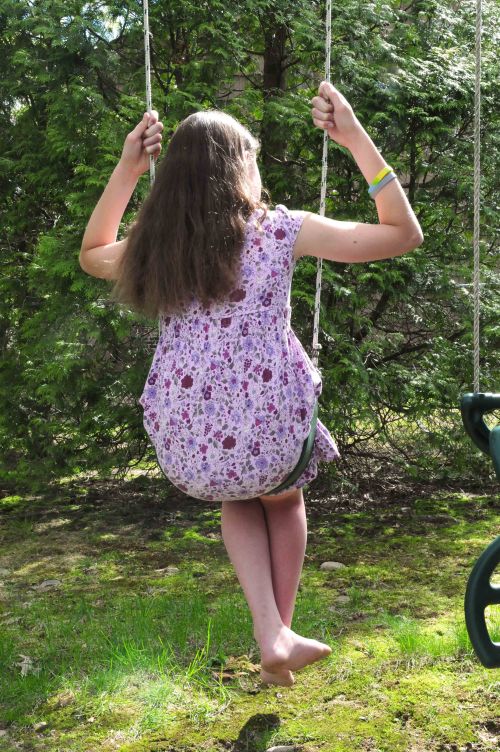
I shot a reference photo for the girl (this is a picture of my cousin’s daughter) and used this to draw out the pose. I found other references for the animals using Pinterest.

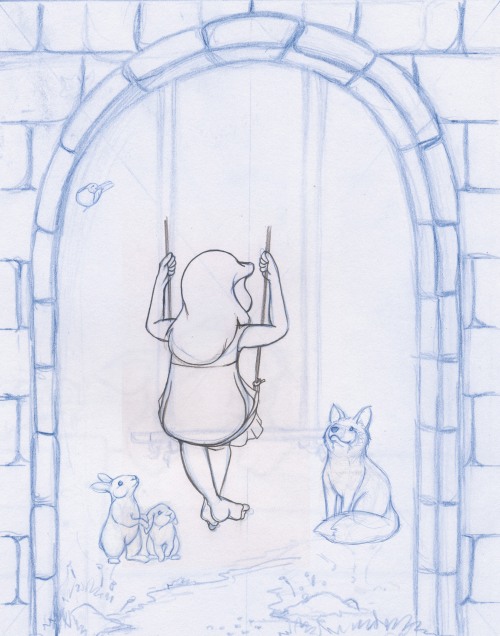
Then I began sketching. I had an idea of the composition, but I drew out my characters separately first so that I could scan them and make the arrangement and adjustments in PhotoShop.

I change my sketch layers to blending mode: multiply so that I can see through them and I start to build my layers of color. I start with my background color and a few background elements.
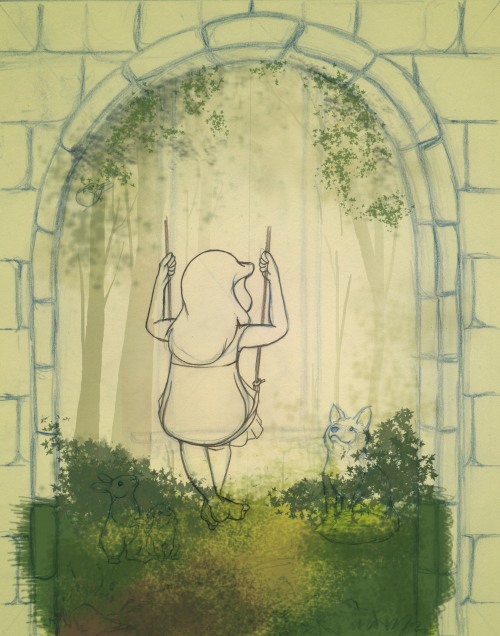
I then start to build up some of the surroundings – adding layers of textures.
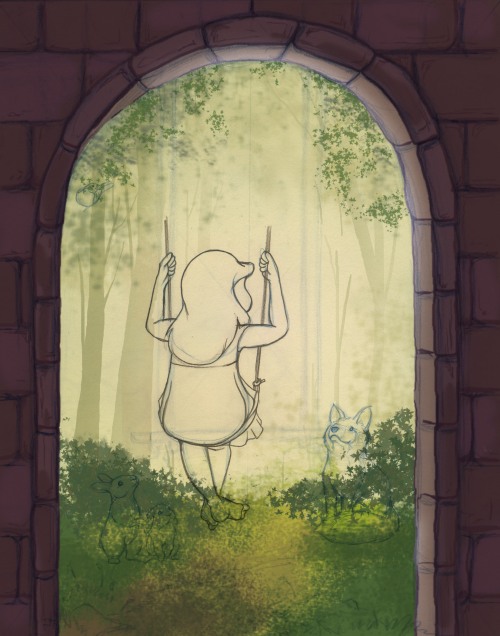
In this particular image, I added the archway next, this provided the frame for the composition.
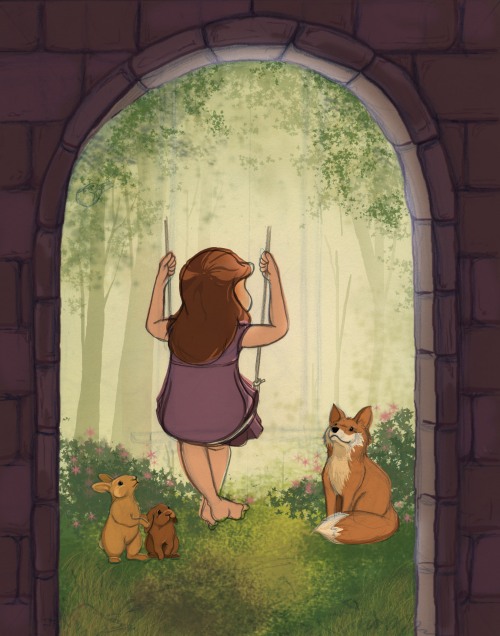
I painted in my characters with their basic colors and shapes.
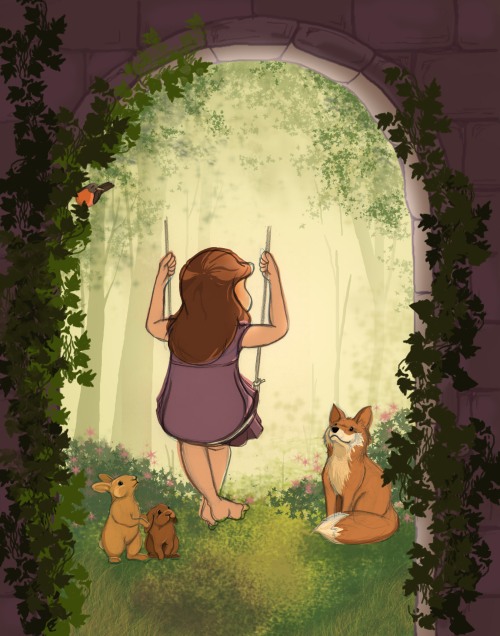
I then turned off the visibility of the arch sketch and added in the detail and the layers of ivy.
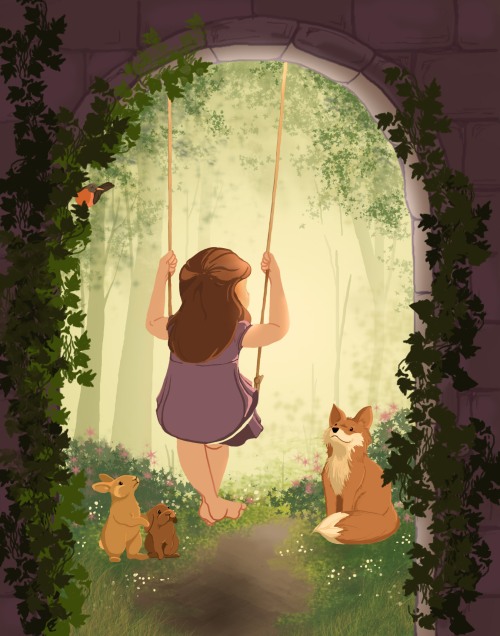
I turn off the visibility of the sketch layers and put in highlights, shadows, and details of the characters.
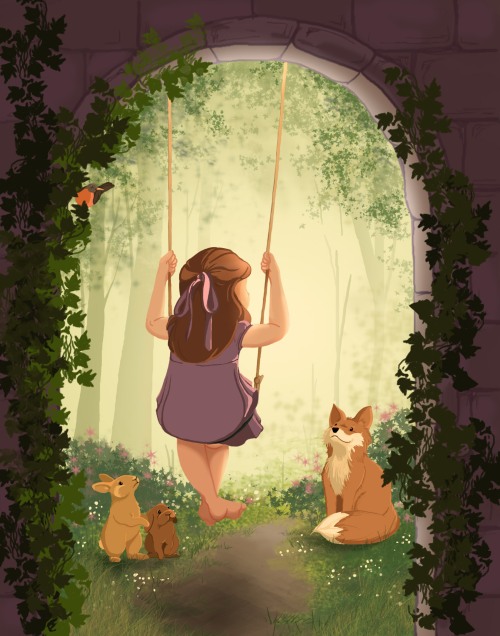
Work to finish the highlights, shadows, and details.

View of screen and layers in Photoshop.
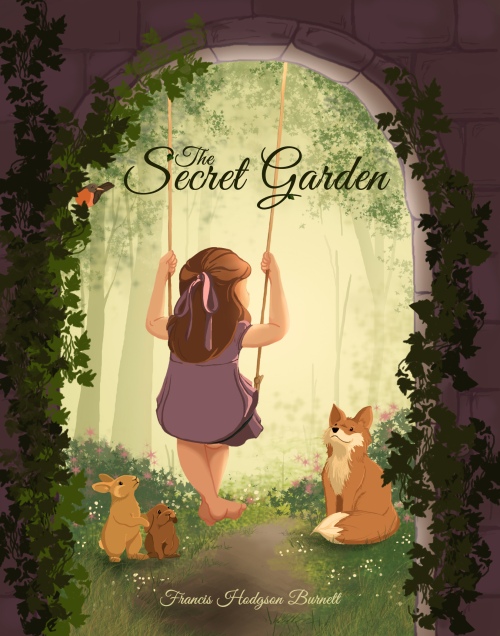
Final illustration.
How long have you been illustrating?
I haven’t been illustrating long. I just finished my MFA program in May and I have just started to promote myself as an illustrator.
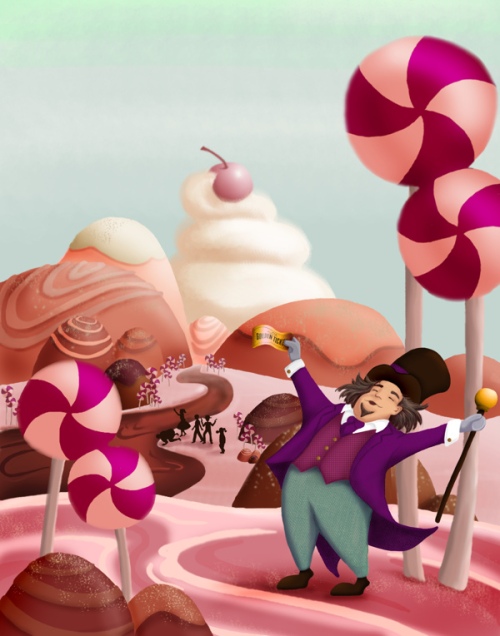
I see that you got your BA at the University of Delaware; concentration: Photography, what made you choose to get an MFA in Illustration from Academy of Art University in San Francisco?
I actually started as a painting major at the University of Delaware. I always knew that I wanted to do something that involved art, I just didn’t know what exactly. It wasn’t until I took a photography class as one of my BFA requirements that I fell in love. I loved capturing an image and then watching it emerge on paper in the darkroom. I decided to pursue photography after that experience and was even able to do a study abroad trip to New Zealand during my time as an undergraduate. Soon after graduating I realized that I wanted to be able to share my passion for the arts, so I went back to school for my teacher’s certification. I have been teaching ever since. I truly love sharing through my artwork, and I thought what better way to do that then through illustration. I still remember the artwork and stories that I read as a child and how they shaped me. I wanted to be a part of that experience and help express the words of a written page into a world that any child could enjoy. I chose the Academy of Art University to pursue these dreams because of its excellent reputation and the convenience of taking my classes online while I continued to teach full time.
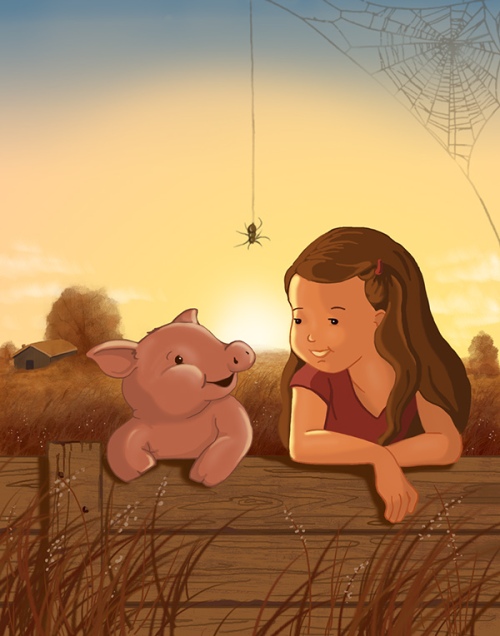
Since you live in New Jersey did you do most of your studies online? If so, can you tell us a little bit about that experience?
At first I was a bit hesitant about pursuing an art degree online, but the way that AAU runs its classes is pretty incredible. I didn’t miss trucking my supplies to different classrooms and I was able to enjoy being part of a University with peer feedback and discussions and professors that were extremely helpful and available! Artwork is submitted digitally, whether you work traditionally or not. If you are working on an oil painting, you shoot photographs of your work, if you are drawing, you can scan it, and if you are using Photoshop you just save it. Classmates and professors review your work and make comments. Many of the professors would mark up the files using what they called a “whiteboard” and even left audio files of their comments. Demonstrations could be viewed as videos, so that they could be reviewed whenever you wanted. I thought the experience was fantastic and I am so glad that I was able to do it.
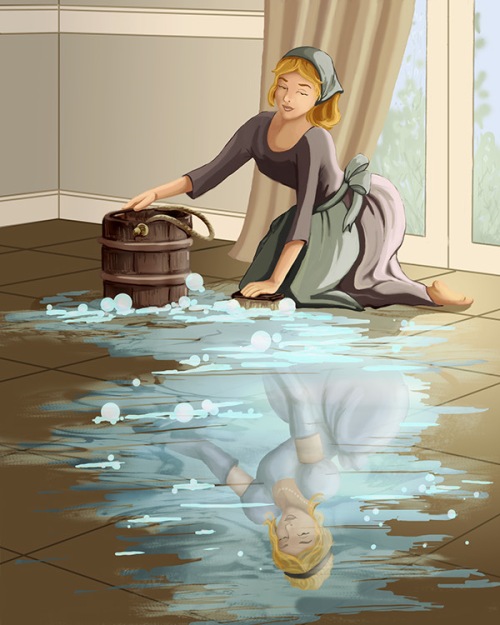
Does getting your MFA online, help to cut the cost of getting your degree?
The MFA program was not any less expensive then taking traditional classes. You still pay tuition and buy the supplies that are needed. What was better about the online degree was that I was able to attend a university across the country and work on my artwork and lessons when I had the time… evenings and weekends.
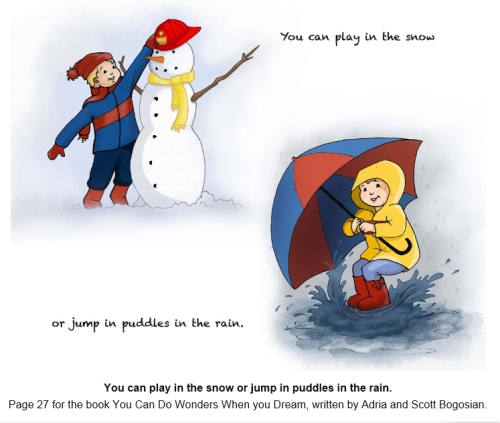
Does the school promise to give you help in getting established with work?
They didn’t promise an established career, but they certainly prepared me to head out into the world. All of the professors were working professionals and their expectations for us during our classes were to prepare us for working in the industry. Previous to graduation we were required to take a Professional Practices course that shared valuable resources and pushed us to do research that would get us started on our path to be recognized by art directors and agents. During that class I was able to create my first promotional postcard and business card, as well as a list of 50 contacts in order to start my promotional mailings.

What was the first painting or illustration that you did where someone paid you for your artwork?
The very first artwork that earned me money was in high school. I painted a fantasy garden mural for a baby’s nursery that included a frog prince and fairies of my own design. I babysat for many years and it helped me pay for my teacher certification program after undergrad, but creating artwork for the families to decorate their children’s spaces helped me earn even more.
What type of work did you do after you graduated with your BA?
I have been teaching high school art, photography, and graphic design now for 11 years and in that time have designed, built, and painted the scenery for the dramas and musicals, designed t-shirts and posters for the school, and have even been the head yearbook adviser. I have continually found ways to share my artwork no matter what I was doing. I have even done event photography, event décor, and face painting for an event planning and rental company on the side.
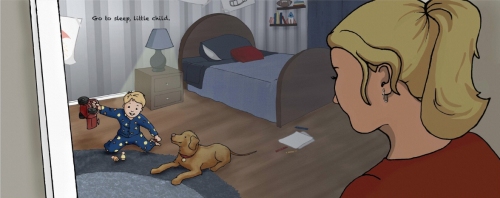
Do you think the classes you took in college influenced your style?
The classes that I have taken have definitely influenced my style. I feel that with each course I took I was able to learn more and develop more through the experiences and expertise of those that taught each class. At first I had a hard time keeping my characters consistent, but after taking a Character Design course with the Animation department I was able to start to develop set character traits that could be used in multiple poses and more dynamic gestures. And, of course my medium of choice changed as well… I was able to try everything from oil, to watercolor, markers, collage, and digital painting. After several classes where we were able to choose our medium, I really started to pick up digital painting and I thoroughly enjoy it now.
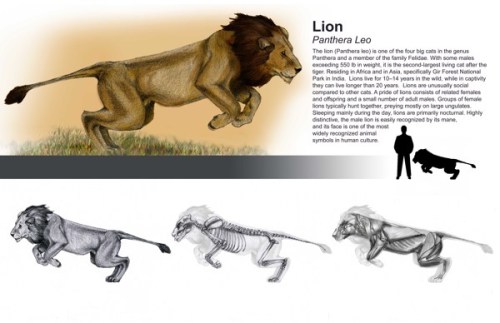
When did you do your the first illustration for children? 10. How did that come about?
My illustrations for children started back while I was babysitting. I was inspired by the kids that I saw everyday and I would draw and paint things that I knew they would enjoy. Not all of it was for profit, but it made me happy because it brought smiles to their faces.
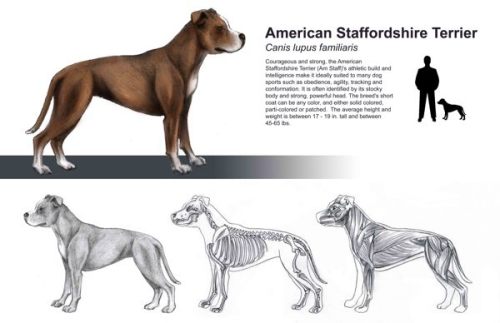
When did you decide you wanted to illustrate books?
I decided I wanted to illustrate books during my years of teaching. I have been an avid reader all of my life. I love all forms of books… the children’s book section is a place of wonder and inspiration, YA books are fun to read with the fantasy worlds they evoke, whether reality based or imagined, and I wanted to be a part of it! I have been teaching book cover design in my graphic design classes for years and it is one of my favorite units. I thought it would be incredible to be able to create books for real!
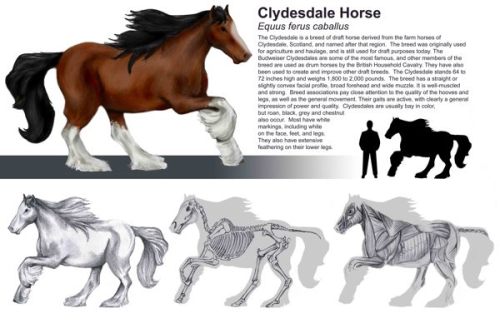
Have you worked with educational publishers?
I am just getting started as a professional illustrator and have not been published yet.
Have you done any illustrating for children’s magazines?
No, but I would like to.
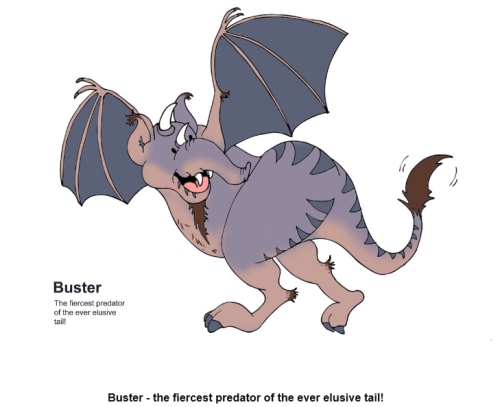
Are you open to illustrating a self-published picture book for an author?
I am in the process of self-promotion so I am examining all options. I’d have to make sure that the author was serious about their venture, but I believe it would be an excellent opportunity for me.
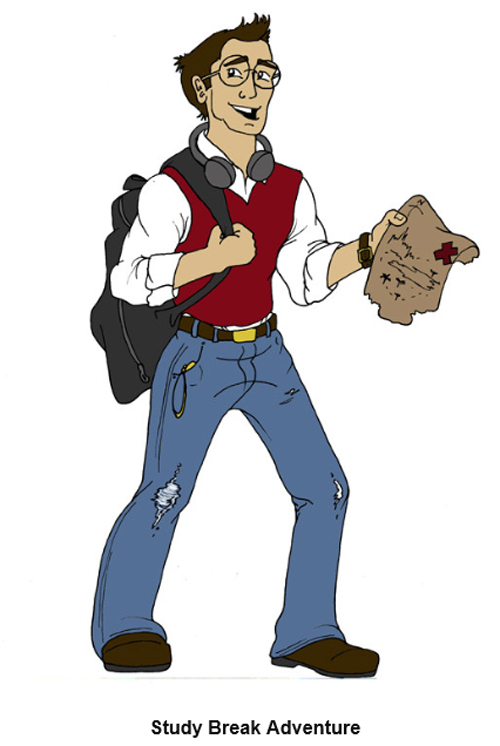
Do you have any desire to write and illustrate your own books?
I have tried writing in the past and although I want to illustrate picture books, my words and stories always seem more suitable to chapter books. After attending the NJSCBWI conference this past June, I was re-inspired to try it again. Maybe one day I’ll go for it, but in the meantime I would love to be able to illustrate for the stories of others.
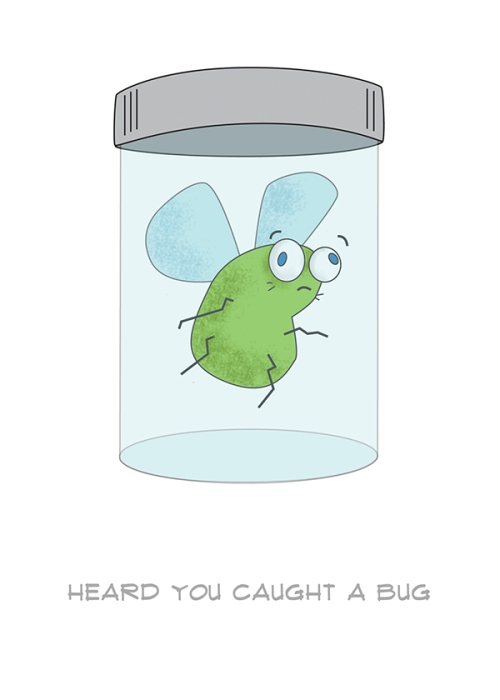
Do you have an artist rep.? If so, who? And how did you connect with them?
If not, would you like to have one?
I do not have an artist rep., but I think it’s an excellent idea to get one. It is one of my goals to try to connect with a rep. through my promotional mailings or even online.
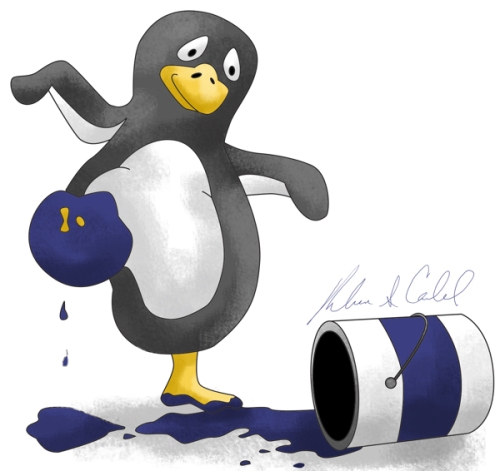
What types of things did you do to market yourself and get your work seen?
So far, I have designed promotional cards, a business card, and updated my resume. I have a website, a Facebook page dedicated to my illustration, a Twitter account, a Behance portfolio account, and a Linked In profile. I have been submitting my work to contests and shows in hopes of getting recognized for my art. So far I was honored to be a part of the Academy of Art’s MFA Spring Show, an honorable mention from 3×3 The Magazine of Contemporary Illustration in their International Show (both for my Charlie and the Chocolate Factory cover design concept), and I am submitting work to Creative Quarterly’s competition this month. I also think attending the recent NJSCBWI conference was a great start to the process of getting my work seen, because I took part in the Juried Art Show and the Portfolio display. I was also able to meet many new people in the industry that have been incredibly helpful and friendly!

What is your favorite medium to use?
I love to dabble in just about everything, but my medium of choice is definitely digital.
Has that changed over time?
The reason I prefer digital painting is the easy clean up. There really isn’t any, plus it is safe, odor-free, and I am able to make corrections fairly easily without having to start over, like I might with watercolor paints. I was terrible at digital painting in the beginning, but I have grown and learned so much through my MFA courses and I think I have really developed a style through it.
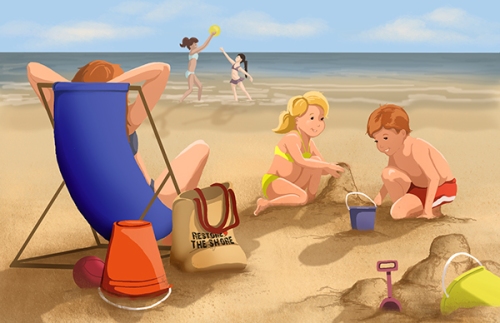
Do you have a studio in your house?
I have a room dedicated to my work and art. It has everything I need in it for my digital painting process. I have a drawing table, a light box, a bookshelf with inspirations and supplies, a computer, a scanner, a printer, and my wacom tablet.
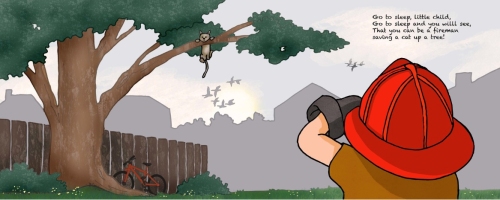
What is the one thing in your studio that you could not live without?
I could not live without my Wacom Drawing Tablet. I love to be able to paint using what feels like a brush or a pencil, instead of my laptop’s track pad mouse. It has controls right on it, so I can easily zoom in, or change my brush size, or even pick up new colors. Eventually I would love to trade up to a Wacom Cintiq tablet. That would allow me to “paint” on the actual surface of my artwork, instead of next to it. I think it would feel more like the natural painting process and I look forward to that – someday….
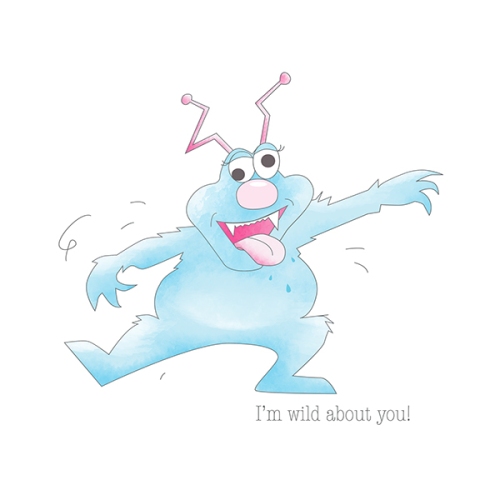
Do you try to spend a specific amount of time working on your craft?
I dedicate a bit of each day to my artwork. Sometimes it’s actually working on a painting and other times I am sketching ideas, either way it helps me realize my ideas.
Do you take pictures or do any types of research before you start a project?
I like to shoot references for my drawings/paintings, but if that opportunity isn’t available look at myself for expressions and poses, or use the Internet (google images or Pinterest).
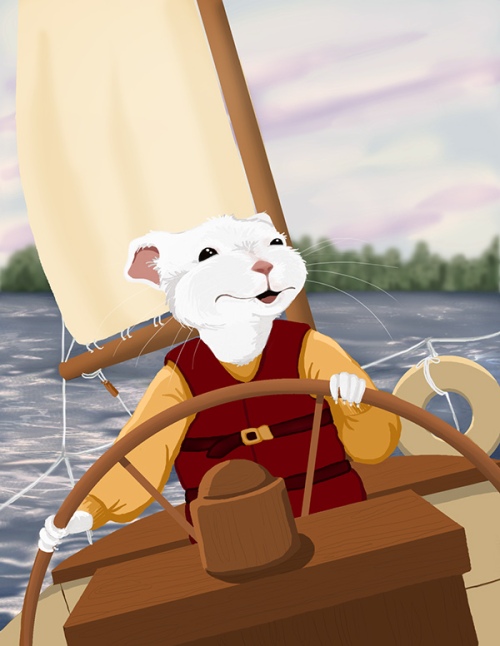
Do you think the Internet has opened doors for you?
The Internet has definitely opened doors for me after all I was able to earn an entire degree online. It is a great resource for references (although I prefer to shoot my own) or inspirations. Most of all, I think it has provided me with many opportunities to share my work with people that I may not ever have the chance to meet in person, or even know about. Social networking has brought about many more chances to network.

What do you feel was your biggest success?
So far my biggest success was earning my MFA. It has allowed me to realize my dreams and create a body of work that really reflects my style.
Do you use Photoshop and/or Painter with your illustrations?
I mostly use Adobe Photoshop, but sometimes I will bring my illustrations into Corel Painter to enhance some of the textures. Sometimes, I will even use Adobe Illustrator to draw or even refine my sketches.
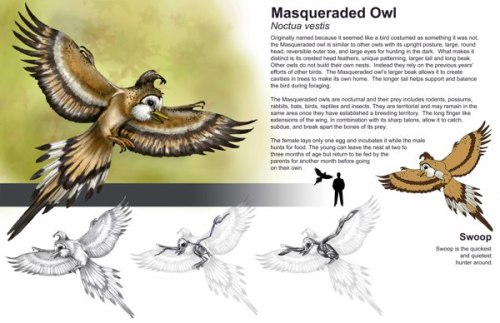
Do you own or have you used a Graphic Drawing Tablet in your illustrating?
Yes, as I mentioned before, it has really made the painting process so much more natural. I love it!
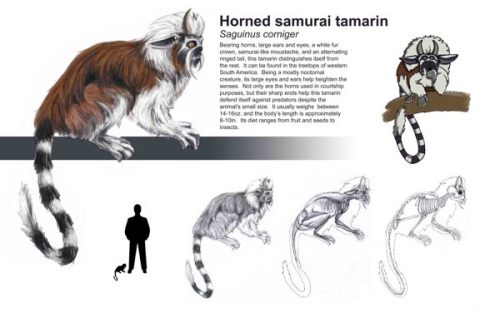 Do you have any career dreams that you want to fulfill?
Do you have any career dreams that you want to fulfill?
I would love to illustrate a children’s picture book and have it published. I know that many of your reader’s have already achieved this goal, but I’m so excited and passionate about reaching it!
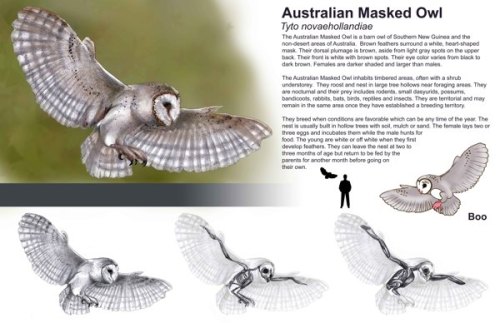
What are you working on now?
Right now my goal is to develop more portfolio pieces and character designs. Much of what I took away from the workshops at the NJSCBWI conference was that the ability to develop a strong character (and show him/her in multiple ways) could get you noticed by an art director or agent. Strong characters mean the possibilities for additional stories or even merchandise. So I am continuing to draw and paint, and of course trying to promote my work and get it seen.
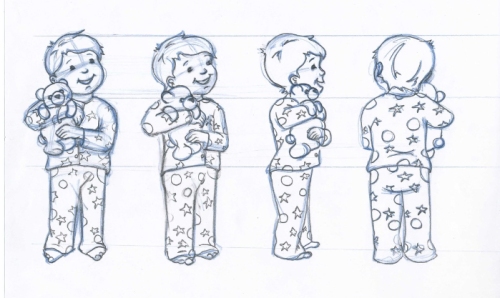
Do you have any material type tips you can share with us? Example: Paint or paper that you love – the best place to buy – a new product that you’ve tried – A how to tip, etc.
I like to use Non-Photo Blue pencils as I begin to sketch. It allows me to rough out gestures and poses and make mistakes and corrections without interfering with the final result. The great thing about them is they will not copy. So, I can go over the lines I want to keep with a graphite pencil and only see them when copied. If I scan my drawings, I can easily remove the rough blue lines in Photoshop and just keep what I need to get started in my painting. I like the quality of line and movement that you get when you are first drawing a subject. If you have to trace the lines later, I often feel like they stiffen up.
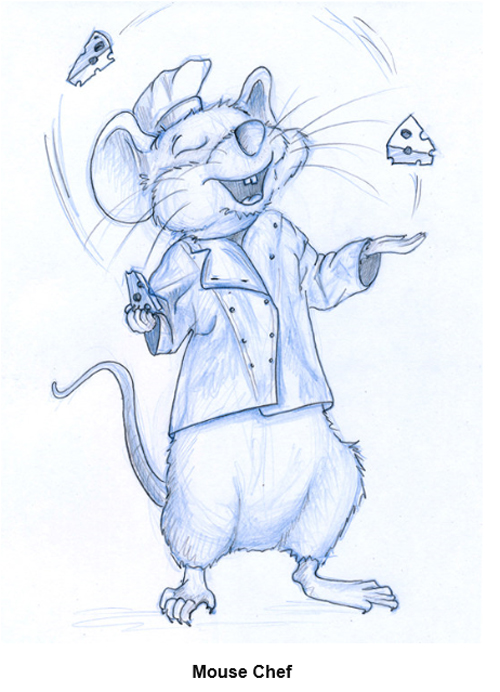
Any words of wisdom on how to become a successful writer or illustrator?
Since I am just starting out I don’t feel like I can properly impart any words of wisdom, but I know one thing… enjoy what you do and never lose your passion. It is what has gotten me where I am so far and I’m hoping it leads me to fulfilling my dreams.
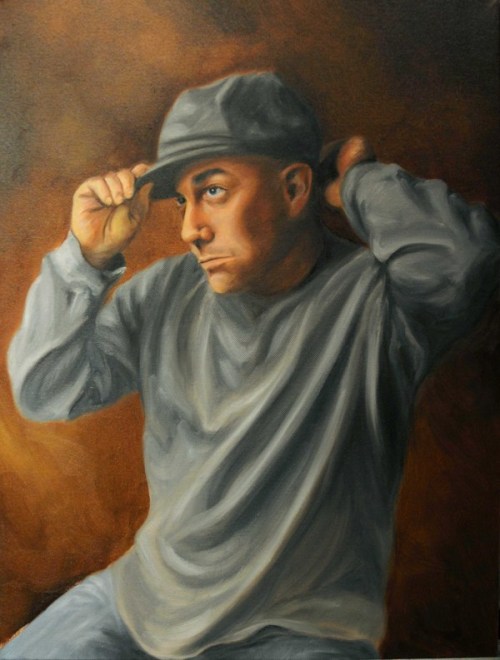
Above: One of Rebecca’s oil paintings.
Thank you Rebecca for taking the time to share your process and journey with us. We look forward to hearing about your future successes.
To see more of Rebecca’s illustrations you can visit her at:
Website: http://www.rebeccacaridad.crevado.com
Please take a minute to leave a comment for Rebecca, I know she would love to heard from you and I always appreciate it. Thanks!
Talk tomorrow,
Kathy

Talk tomorrow,
Kathy
This week we will look at a few strategies you can use to increase the sales of your books.

If you buy any books on Amazon, you may have noticed they list the Best Selling Books. You should give these categories some thought. It may help you get on one of their lists and getting on one of the lists will greatly improve your chances to get noticed and bought.
1. Try to choose a niche category on Amazon. There are less books, so you will have a better chance to be listed at the top.
2. By clicking the book ranked #100 in any given category, you can consult the Rank to Sales Estimator to see how many sales you need to qualify for that categories Best Seller List.
3. Self Published authors get to choose two categories.
Traditional publishers get to choose up to five categories. Make sure your publisher knows how the system works and how they can use it to their advantage. Choosing “Fiction” might not be the best category due to so many books. (over a million)
4. Example: Kindle Store> Kindle ebooks > Fiction> Mystery, Thriller & Suspense> Thrillers> Political. Your books will still show in all the categories above the one you chose.
A few scenarios:
Fault in Our Stars [Kindle Edition]
Amazon Best Sellers Rank: #6 Paid in Kindle Store (See Top 100 Paid in Kindle Store) This a list of all books (no categories)
#1 in Kindle Store > Kindle eBooks > Teen & Young Adult > Romance > Contemporary
#1 in Books > Teens > Love & Romance
Isla and the Happily Ever After [Kindle Edition]
Amazon Best Sellers Rank: #11,151 Paid in Kindle Store
#100 in Kindle Store > Kindle eBooks > Teen & Young Adult > Romance > Contemporary
The First Third [Kindle Edition]
Amazon Best Sellers Rank: #172,765 Paid in Kindle Store (See how this book was able to make the Top 100 List by picking Social Issues? That’s because there is less competition. This helps give the book a chance to be seen.)
#100 in Kindle Store > Kindle eBooks > Teen & Young Adult > Social Issues
The Year We Disappeared: A Father – Daughter Memoir [Kindle Edition]
Amazon Best Sellers Rank: #9,006 Paid in Kindle Store (See Top 100 Paid in Kindle Store)
#1 in Kindle Store > Kindle eBooks > Teen & Young Adult > Social Issues
#5 in Kindle Store > Kindle eBooks > Teen & Young Adult > Biography
#33 in Kindle Store > Kindle eBooks > Nonfiction > Children’s Nonfiction
Neverwhere [Kindle Edition]
Amazon Best Sellers Rank: #2,867 Paid in Kindle Store (See Top 100 Paid in Kindle Store)
#10 in Kindle Store > Kindle eBooks > Science Fiction & Fantasy > Fantasy > Classics
#11 in Kindle Store > Kindle eBooks > Literature & Fiction > Contemporary Fiction > Fantasy
#79 in Books > Literature & Fiction > Genre Fiction > Horror
5. Make sure you check to make sure the category you pick is on both the book side and the kindle side if you have a print book. Some of the categories do not match up.
6. If you are self-published you will need to do this for yourself, but don’t assume your publisher is choosing the best categories. Do your homework and discuss what you have found with them. But make sure you do this before they list it on Amazon.
Talk tomorrow,
Kathy
In this series, Tu Books Publisher Stacy Whitman shares advice for aspiring authors, especially those considering submitting to our New Visions Award.
Last week on the blog, I talked about the importance of following submission guidelines and basic manuscript format. This week, I wanted to go into more detail about why a reader might stop reading if they’re not hooked right away. Here are some comments I’ve heard our readers make about manuscripts that didn’t hook them:
How do you get your writing to have that “zing” that captivates from the very beginning? This is a little tougher than just following the directions—this is much more personal to each reader and each writer.
Is your writing boring readers?
There are a couple different issues in the list above. Some readers lost interest simply because they were bored. If you find yourself telling readers of your book, “Don’t worry! It gets really good in chapter five!” consider whether you’re starting your book at the right moment in time. The phrase “late in, early out” is one to remember—perhaps you don’t need all the information that leads to the “really good” part. Or perhaps you need to revise to make that information more interesting and faster paced.
I don’t recommend simply dumping this information into a prologue. Many young readers skip prologues entirely, and many more readers will lose interest if your prologue is long and boring—it’s the same principle as saying “just wait till chapter five!”
If the information in your first few chapters are crucial, yet readers are getting bored by it, consider spooling that information out little by little over the course of the book. You need to find the balance between giving enough information for the reader to be intrigued and wanting to know more, without overburdening the reader with so much information that they become overwhelmed or bored.
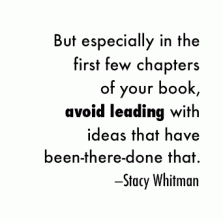 For example, take the first few pages of Laini Taylor’s Daughter of Smoke and Bone. On page 1, Taylor sets up the scene: it’s an ordinary day in Prague (interesting point number one: how many books are set in Prague?) and Karou is walking down the street toward school, minding her own business. It’s an active scene—something is happening—but it’s more about Karou’s internal mundane thoughts. However, it doesn’t stay mundane for long. By page 2, she’s been attacked.
For example, take the first few pages of Laini Taylor’s Daughter of Smoke and Bone. On page 1, Taylor sets up the scene: it’s an ordinary day in Prague (interesting point number one: how many books are set in Prague?) and Karou is walking down the street toward school, minding her own business. It’s an active scene—something is happening—but it’s more about Karou’s internal mundane thoughts. However, it doesn’t stay mundane for long. By page 2, she’s been attacked.
But it’s not your average “you have to have an action scene in the first scene!” attack. The author plays with expectations, intriguing the reader and making you want to know what happens next. We get some ex-boyfriend banter (also against expectations) and the promise of interesting, embarrassing things to come by the end of the chapter.
It helps that the book is well written. But it’s more than good prose that hooks the reader here—she spools out just enough to let you know that this is a unique book, and that you want to know more. The next two chapters do the same thing, and bit by bit, the reader comes to know Karou’s intriguing magical background.
What she doesn’t do is infodump in a prologue or the first few chapters about Karou’s history, the history of the world, and the history of the strange beings who raised her. Save those details for when they matter.
Look at your favorite books and read like a writer. For hooking a reader, look in particular at excellent examples of the first five pages of a wide variety of books. There are many ways to effectively open a book, and you need to find the way that works for your story. Reading other books like a writer will help you to zoom in on ways to perfect your craft.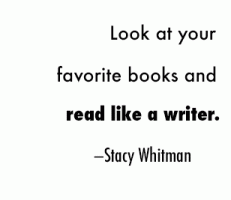
Another great resource for writers trying to figure out how to hook readers is editor Cheryl Klein’s essay “The Rules of Engagement” in her book Second Sight. It’s no longer available online (and I don’t believe the book is in e-book form), but it’s worth the price of the book for her discussion of various ways to hook readers via character, insight, action, and other methods. (Bonus: you also then get access to all her other thoughts on writing and revision.)
Over-reliance on common tropes
Several readers commented that several books relied too much upon Western European fantasy tropes (elves, fairies, etc.). There are ways of hooking readers with familiar story elements, but often most high fantasy tales boil down to “my elves are better than yours.”
 Look for new inspiration. (We’ll cover worldbuilding more in full in a few weeks.) But especially in the first few chapters of your book, avoid leading with ideas that have been-there-done that.
Look for new inspiration. (We’ll cover worldbuilding more in full in a few weeks.) But especially in the first few chapters of your book, avoid leading with ideas that have been-there-done that.
If your story concept relies on tried-and-true tropes, it’s not the end of the world. Take a look at books coming out now that are successfully changing the mold—books like The Coldest Girl in Coldtown by Holly Black, who has revamped (haha) the vampire genre, for example. The Coldest Girl in Coldtown updates the genre, makes vampires scary again. In what ways can you update and revamp the concepts in your book to hook readers?
The solution to your writing being “not strong enough”: practice
The number one complaint as to why a reader wasn’t hooked was that the writing wasn’t good. Once you get past obvious grammar and punctuation mistakes, this comes down to a greater need to practice your craft. Write regularly—it doesn’t have to be every day, but do it consistently. If your problem is time, you might find useful this advice from New Voices Award winner Pamela Tuck on how to carve out time to write on a regular basis. She has ELEVEN children, who require a lot of time and attention, especially because she home-schools them.
The more you practice, the better you’ll get. And next week, we’ll begin to drill down on elements that you can work on in the whole book, such as voice.
 Stacy Whitman is Editorial Director and Publisher of Tu Books, an imprint of LEE & LOW BOOKS that publishes diverse science fiction and fantasy for middle grade and young adult readers.
Stacy Whitman is Editorial Director and Publisher of Tu Books, an imprint of LEE & LOW BOOKS that publishes diverse science fiction and fantasy for middle grade and young adult readers.
Thought you might be interested in the information I presented at the “How to Sell More Books” Workshop I gave at the NJSCBWI Conference in June. You might want to use it as a general rule of thumb when checking out your book (on other books) on Amazon.

Talk tomorrow,
Kathy
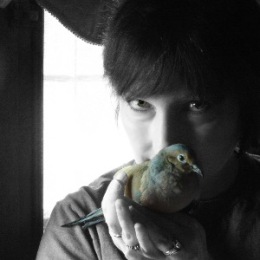 Colleen Rowan Kosinski has always been involved in creative projects. She is an alumna of Moore College of Art and graduated from Rutgers University with a BA in Visual Arts. While in college, Colleen worked with The Robert Wood Johnson Hospital as part of her curriculum. She developed, designed and constructed step-by-step instruction booklets to be used by nursing staff. After graduation, Colleen worked as a jewelry designer. While working as a designer she won a scholarship to the Gemological Institute of America and earned a certificate in Colored Stones. Colleen, having a great interest in science, volunteered at the Academy of Natural Sciences in Philadelphia, PA. She worked with Dr. John Gelhaus in the entomology department rendering illustrations of insects for scientific publications. She also worked at the Franklin Institute in Philadelphia, PA, were she designed illustrations for a cookbook featuring Ben Franklin’s favorite dishes.
Colleen Rowan Kosinski has always been involved in creative projects. She is an alumna of Moore College of Art and graduated from Rutgers University with a BA in Visual Arts. While in college, Colleen worked with The Robert Wood Johnson Hospital as part of her curriculum. She developed, designed and constructed step-by-step instruction booklets to be used by nursing staff. After graduation, Colleen worked as a jewelry designer. While working as a designer she won a scholarship to the Gemological Institute of America and earned a certificate in Colored Stones. Colleen, having a great interest in science, volunteered at the Academy of Natural Sciences in Philadelphia, PA. She worked with Dr. John Gelhaus in the entomology department rendering illustrations of insects for scientific publications. She also worked at the Franklin Institute in Philadelphia, PA, were she designed illustrations for a cookbook featuring Ben Franklin’s favorite dishes.
After the birth of her first child, Colleen opened her studio and virtual gallery. She has been working as a visual artist, with clients all over the United States, for the past eighteen years. You can visit her site at http://www.myartsite.com. She specializes in pet portraiture and still life. Her mediums of choice are oil or pastel.
Colleen resides in Cherry Hill, NJ with her husband, three sons, doberman pinscher, rottweiler, and miniature dachshund and volunteers at the local animal shelter. During the summer you can usually find her nursing a sick squirrel or robin back to health.
Here is Colleen explaining her process:
This painting example was created for the NJSCBWI 2014 Conference. I knew I wanted a dreamy, fairytale-ish feel. I wanted the viewer to wonder what would happen next. I also wanted to include the theme of the Jersey shore.
First I researched elements I needed for this particular piece of work, ex. I needed to research old-fashioned bathing suit attire, seagulls, and Victorian style homes in Cape May for this piece.
Next, I drew (in pencil) each element that was to be included in the artwork. I scanned in the early sketches and placed everything in the space to see if worked. I’d drawn a lifeguard chair and the Cape May lifeguard boat but they didn’t fit in the composition, so they were cut.
Then, I went back and shadowed each drawing in pencil.
I scanned each shadowed piece into the computer and placed them on the page.
All the shadowed pieces were built as their own layers. I then painted in colors, using varying opacities and brushes.
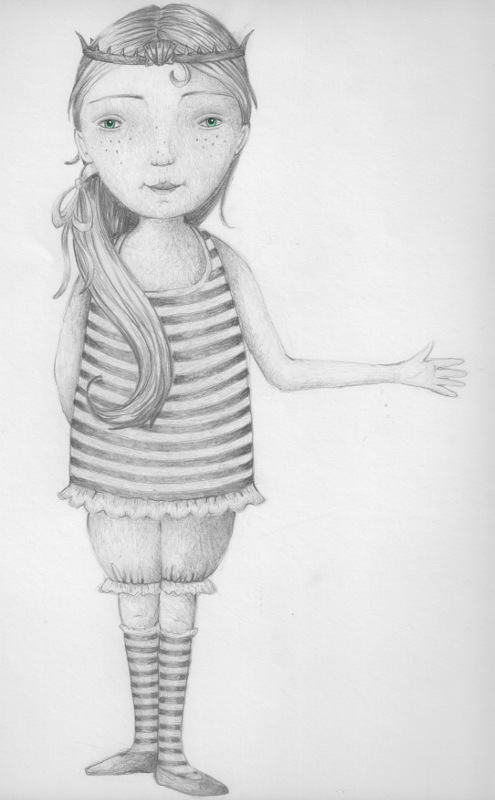 Original pencil sketch
Original pencil sketch
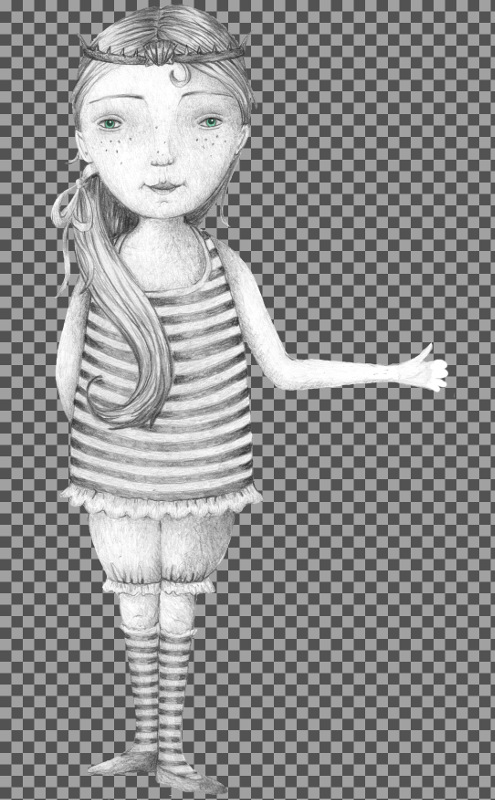
Scanned image, cut out, cleaned up and contrast adjusted.
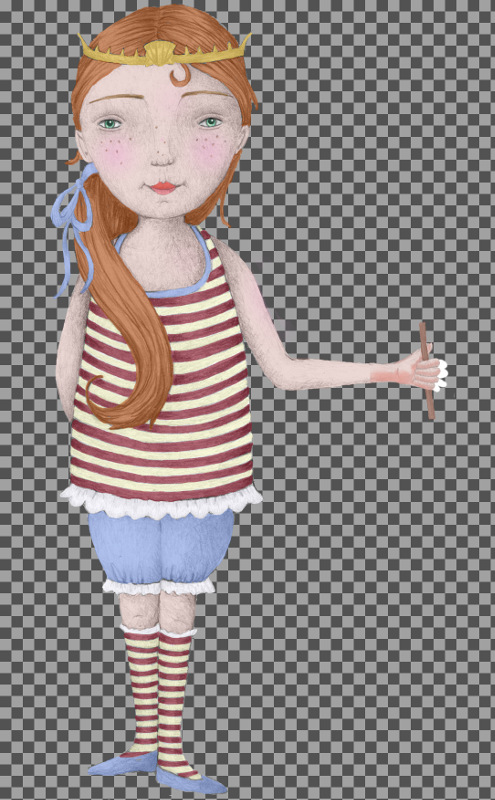
Colored layers built up.
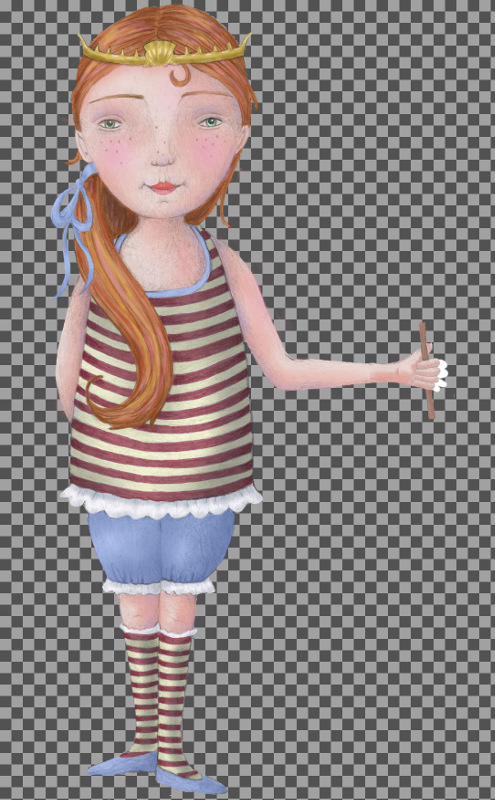
Shadows and highlights are added last.
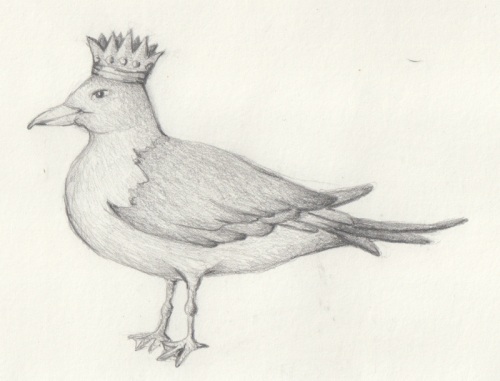
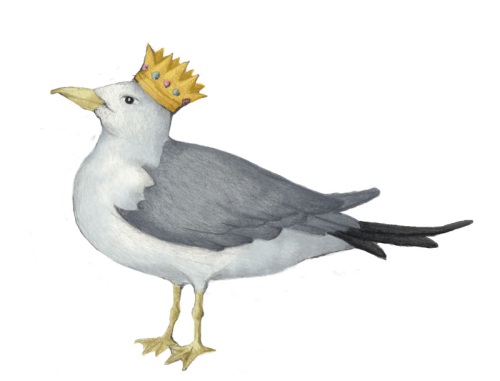 I brought the colored drawings back into the original composition.
I brought the colored drawings back into the original composition.
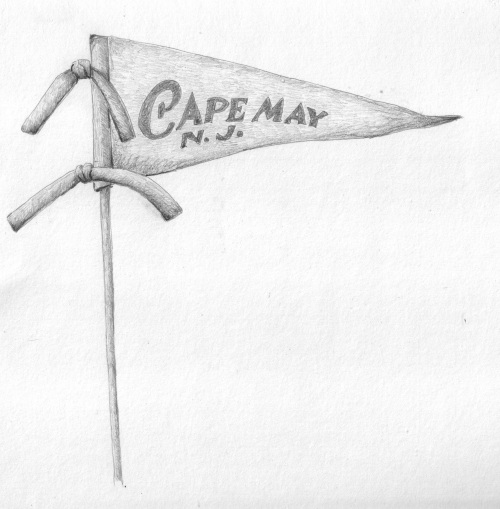
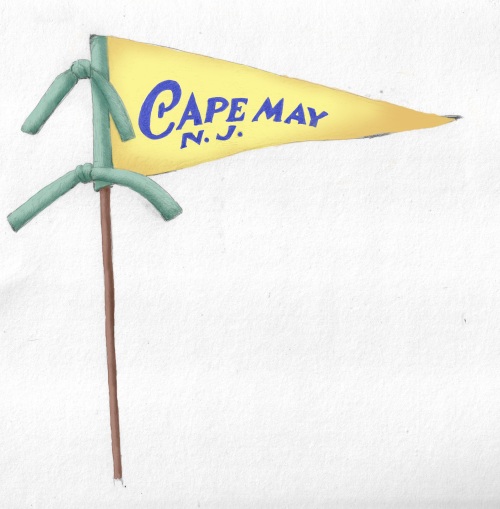 I adjusted scale and brightness.
I adjusted scale and brightness.

I then layer in shadows into the final composition and sometimes I add various textures into the composition.
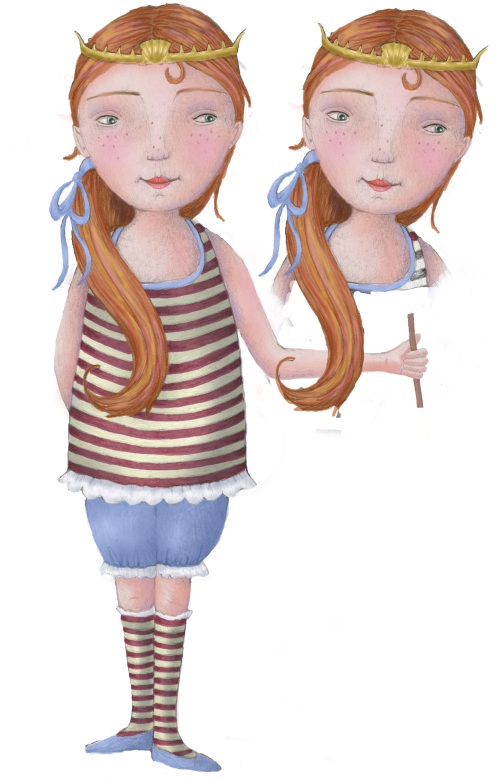
Finally, when the painting looks finished to me, I put a bump map of a watercolor texture over the entire painting. This makes the work look less “computer-like”. Copyright ©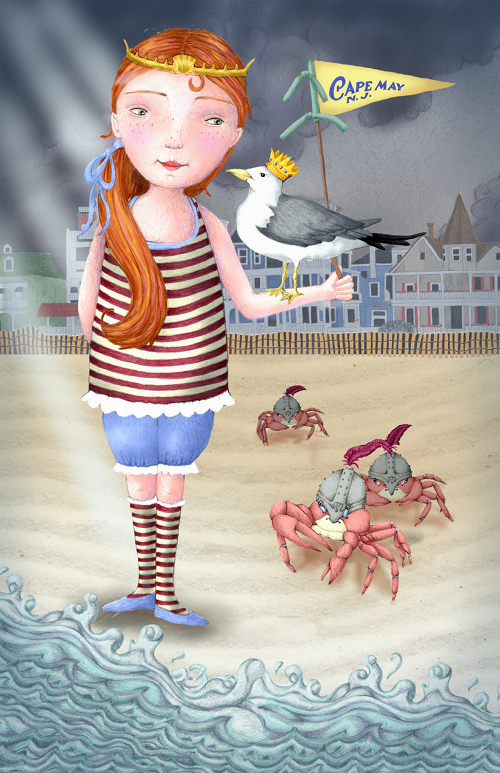
After critiques by my trusted artist friends, I add my finished piece to my portfolio. For example, they suggested her head should be tilted toward the bird so I made the adjustment as seen here.
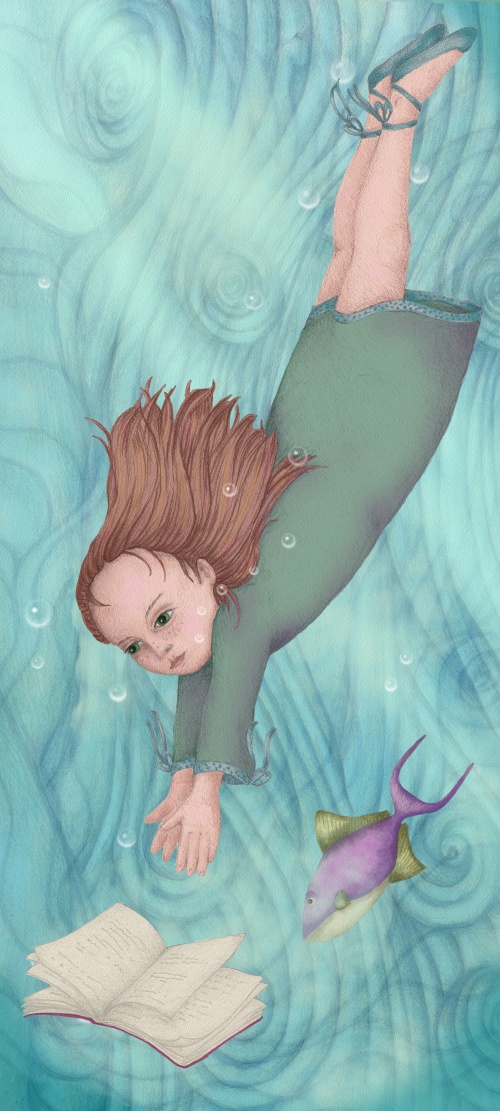
How long have you been illustrating?
I’ve been drawing forever. I participated in my first “show” when I was thirteen (and won first place.) I’ve been seriously working on illustrating for children for the past three years.
What made you choose to get your degree in visual Arts at Rutgers University?
I was originally granted a full scholarship to Moore College of Art when I happened upon a portfolio day after a Saturday class at the Philadelphia College of Art. I attended my freshman year, but then transferred to Rutgers to follow my boyfriend. I know. I know. But we’ve been married now for 27 years. : )
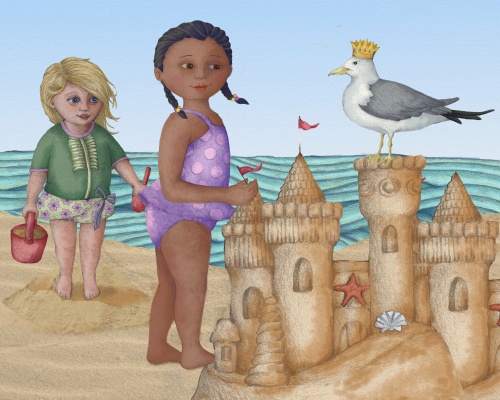
What were you favorite classes?
I loved figure drawing, creative writing, and anthropology. I’d always try to convince my professors to hold class outside on beautiful days. All except figure drawing. Naked models posing outside in the middle of campus would have been frowned upon—but would probably have drawn quite a crowd.
Did the School help you get work?
Actually, Moore College of Art helped me get my first internship as a scientific illustrator for the entomology department of the Academy of Natural Sciences in Philadelphia.
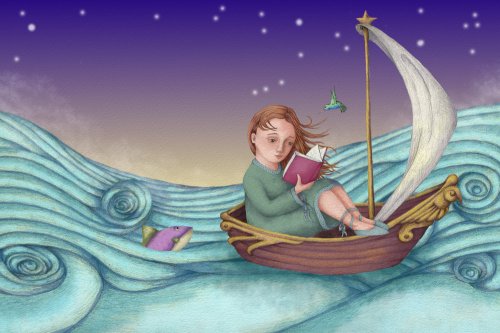
What was the first painting or illustration that you did where someone paid you for your artwork?
In high school the teachers would commission me for artwork.
What type of job did you do right after you graduated?
After college I worked in a jewelry store and did some jewelry design. I was fascinated with gemstones and won a scholarship to study colored stones with The Gemological Institute of America.
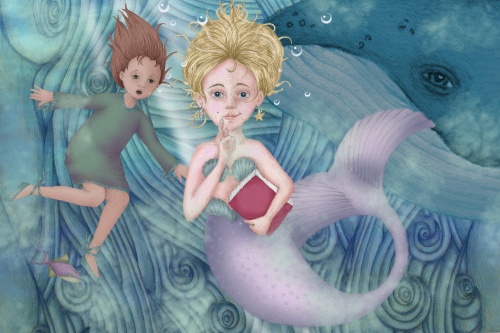 Do you think the classes you took in college influenced your style?
Do you think the classes you took in college influenced your style?
The figure drawing classes may have helped a bit but my style has organically evolved over the years.
When did you do your first illustration for children?
I started working on children’s books illustrations about three years ago.
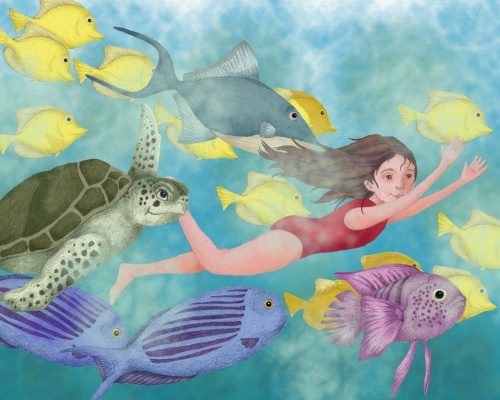
How did that come about?
I had worked as a fine artist for many years, but stopped drawing to seriously study writing. I’ve written screenplays, YA novels, and MG novels, along with picture books. NJSCBWI was holding their first illustrators showcase three years ago and I decided to participate and developed a character, which then became a story.
When did you decide you wanted to illustrate books?
After all the positive feedback at the NJSCBWI conference.
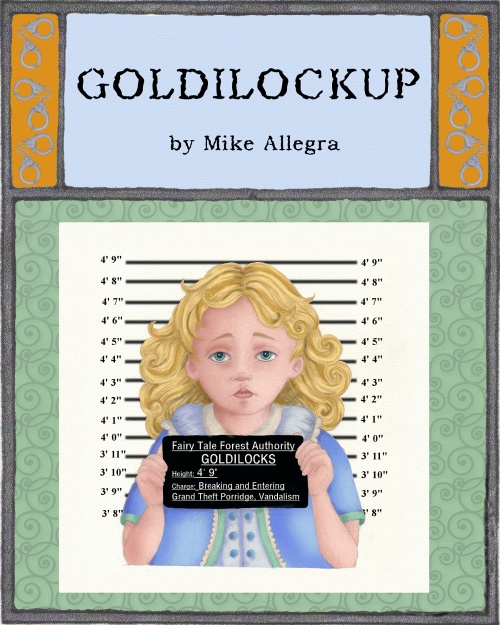
How did you get interested in writing novels and when did that happen?
I had a friend who worked in the SAG office in Philadelphia. I had an idea for a movie and asked her how I could try to sell my idea. She told me I’d need to write a screenplay. I bought books on the mechanics of writing screenplays and started networking with other screenwriters. I decided to try to convert one of my screenplays into a novel. Then I wrote bad novel after not as bad novel until I finally had one that I thought was good enough to submit. But it really wasn’t. So I kept writing more and more. I think my eighth book was the charm and is now being read by several editors.
Are you open to illustrating a picture book for a writer who would like to self-publish?
I think I’d rather work on my own books or be paired with an author from a traditional publisher.
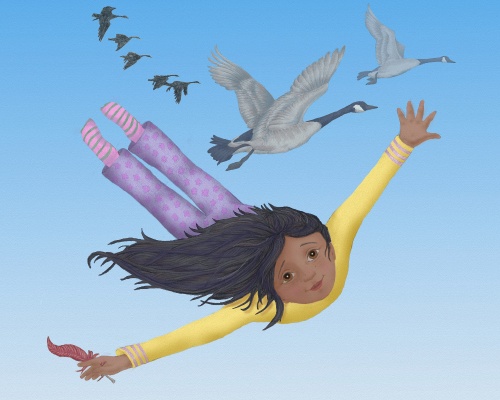
Have you worked on illustrating a book dummy to help market your illustrating skills?
Yes.
Since you already are writing novels, have you thought about writing and illustrating you own picture book?
I’ve written quite a few PBs and I have one finished dummy and one in process.
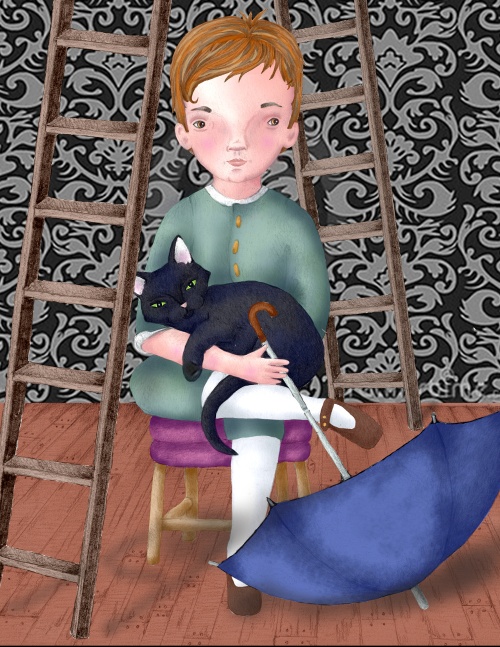
Do you have an artist rep.? If not, would you like to have one?
I’m presently not represented, but would love to work with an agent interested in an author/illustrator. I’m a hard worker and not afraid of revisions.
What types of things do you do to market your work?
I show at conferences, tweet, network on FB, display my work on the SCBWI illustrator showcase, and I have a website—ColleenRowanKosinski.com
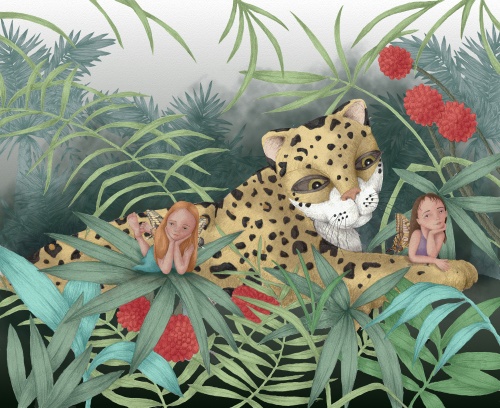 What is your favorite medium to use?
What is your favorite medium to use?
I’m currently working with a combination of pencil sketching and digital painting. I also love oils, and soft pastel.
Has that changed over time?
Many years ago I worked primarily in pen and ink and watercolor. I did a lot of hand-numbing stippling with a rapidograph pen. I transitioned to pastel. Sold quite a few, then fell in love with oil painting. Oil painting is a long process because of the practice of building layers of colors and the drying times involved. That’s why I love digital so much now. I approach color the same way I did in my oil painting but have zero drying time!
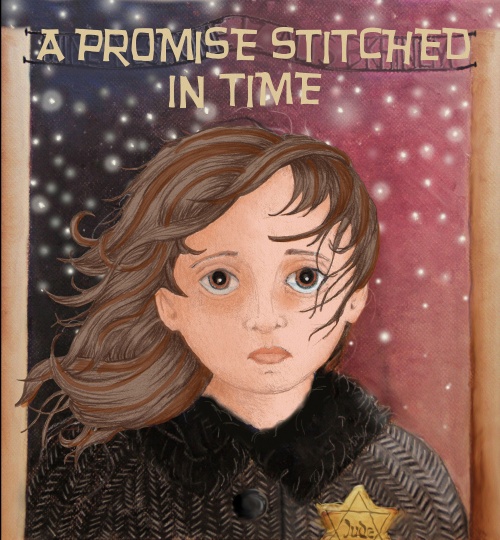
Do you have a studio in your house?
I don’t have a designated studio. Because of very bad back issues I have trouble sitting for long periods of time in a regular chair, but I’ve found a recliner takes the stress off of my lower back so you can usually find my there, either writing, sketching or working digitally. I do have an office with my supplies, a desk, computer, scanner, printer and bookshelves from floor to ceiling.
What is the one thing in your studio that you could not live without?
My laptop computer.
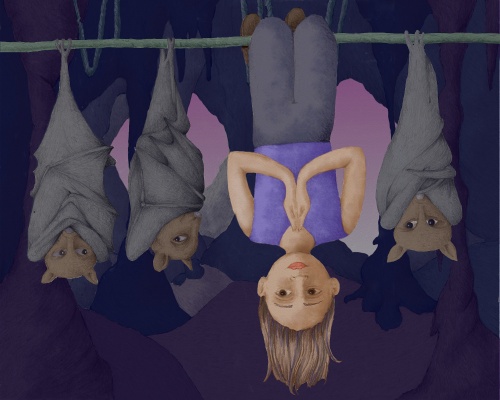
Do you try to spend a specific amount of time working on your craft?
I work every day for at least eight hours or more. I try to attend at least one SCBWI conference a year and as many other workshops that I can fit into my budget and schedule.
Do you take pictures or do any types of research before you start a project?
Yes, I take pictures and research reference images online.
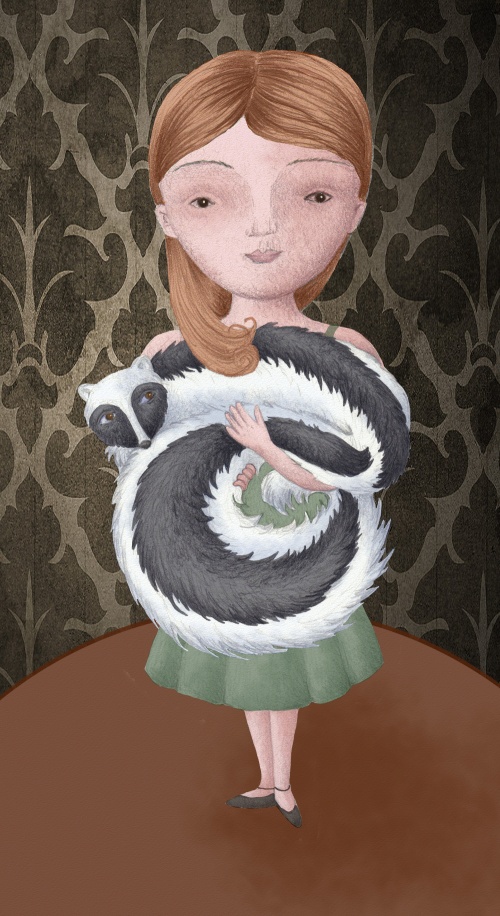
Do you think the Internet has opened doors for you?
Definitely. I used to have to find reference photos by paging through books and magazines for hours. The Internet also helps me network with other writers, illustrators, agents, and editors.
What do you feel was your biggest success?
I don’t know if I’ve experienced a “big” success yet. I just keep doing what I’m doing while constantly trying to improve.
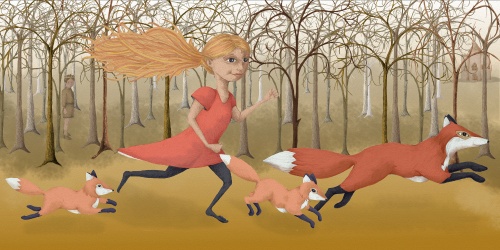 Do you use Photoshop with your illustrations?
Do you use Photoshop with your illustrations?
I actually use GIMP, which is a free version of Photoshop. I did finally bite the bullet and start subscribing to Photoshop (you can’t buy it outright anymore, you must pay a monthly fee.) I’m experimenting with it but feel more comfortable with GIMP.
Do you own or have you used a Graphic Drawing Tablet in your illustrating?
Yes, I use a Wacom pad when creating my artwork.

Do you have any career dreams that you want to fulfill?
I dream of finding an agent who knows the craft and market, and being traditionally published. I guess if I want to dream big, I’d love to win a Newberry or Caldecott.
What are you working on now?
I’m working on a story called Lydia Light Takes Flight. The character I created for the 2014 NJSCBWI Conference Art Competition inspired the story. The text is finished and I’m currently working on the dummy. It’s a lyrical story with a fairytale’ish feel. I also have a couple PB biographies ready to go, and two other lyrical PB texts. Editors are reading my older MG novel and I’m hoping one of them will make an offer soon.
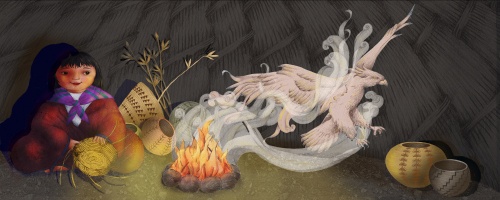
Any words of wisdom on how to become a successful writer or illustrator?
I don’t know if I can really speak to being successful, but I can say that you have to be a fighter. Don’t wallow in rejection and keep moving forward. Be open to critique and learn from it. Lastly, be involved in the kidlit scene. It’s a wonderful, supportive community.
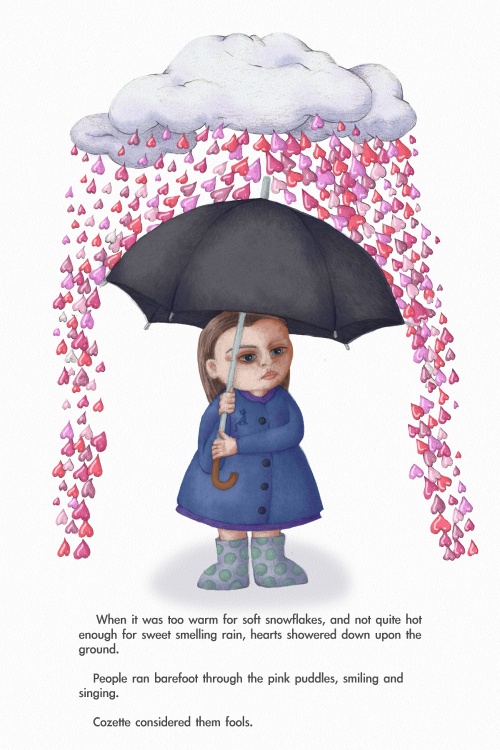
Thank you Colleen for taking the time to share your process and journey with us. We look forward to hearing about your future successes.
To see more of Colleen’s illustrations you can visit her at: www.ColleenRowanKosinski.com Twitter: @writergirlrowan
Facebook: Colleen Rowan Kosinski
Please take a minute to leave a comment for Colleen, I know she would love to heard from you and I always appreciate it. Thanks!
Talk tomorrow,
Kathy
here: http://nyti.ms/1not0iV
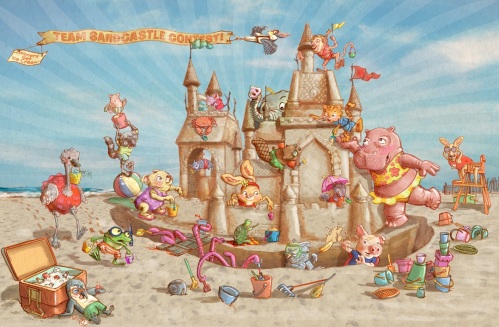
This Team Sand Castle Contest was illustrated by Jason Kirschner and won Honorable Mention Unpublished Illustrator Award at the NJSCBWI Artist Showcase. http://www.jasonkirschner.com/jasonkirschner.com/Home.html
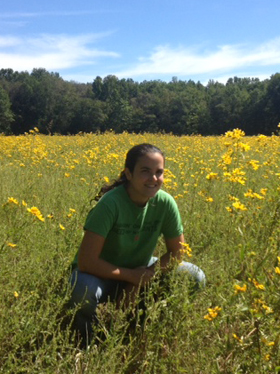 Hello all! Jersey Farm Scribe here. Last time we talked I was giving you my take away on how to Attack a Conference. I promised I’d tell you some of the specific, tangible things I learned at the NJ SCBWI.
Hello all! Jersey Farm Scribe here. Last time we talked I was giving you my take away on how to Attack a Conference. I promised I’d tell you some of the specific, tangible things I learned at the NJ SCBWI.
So here is one of the biggest:
Pitch/Concept
It seems so simple. But I hadn’t thought of it like this before.
Pitch IS Concept.
I took Jill Corcoran’s workshop on concept and selling through to readers. I wasn’t sure what I expected, but I knew Jill is revered for her grasp of plot and revisions. I’ve been over her website A Path to Publishing, quite a few times, and gotten invaluable information from her blog, so I was ready to see what she had to say in person.
One of the first things that struck me was how interchangeably she seemed to use the words “pitch” and “concept.”
To me, pitch was what you practice saying over and over to be prepared to present my idea to one of the editors and agents walking around. It was what I put in the beginning of my query letter. That elevator, two or three sentence wrap of what my book was.
Concept was…. actually, to be honest I hadn’t really thought about it.
As Jill said in the workshop, and as she explains in the beginning of her free video on PlotWriMo (Revise your novel in a month), the CONCEPT is how you’d convince someone to read your book.
Okay, so that means it’s what’s the book about, right?
Well… yes and no.
If I want to go see a movie, and I have to convince other people to want to go see it, what would I say? What makes it special? What draws me to want to see it? Why should someone else want to see it?
That’s more than going over the plot. It’s more than what happens, or who the main characters are. It’s what gives the movie meaning, substance, interest and originality.
And that’s not easy to do in a few sentences!! As Kathy has said, write it all out first. go back to cut and condense.
But how do we know if we’re cutting the right things?
In the workshop, a few of us read our “pitch” to Jill. And a common theme in her response was, “You’re not really TELLING me anything. I know you think you are. But you’re not.”
A lot of it came down to specifics. The pitch has a reader. That reader needs to know what’s going on. It’s a book about heroism! Great. But how so? The kids are going to save the world? Excellent. But WHY? What’s wrong with the world in the first place? Shelby finds herself confused and alone. Okay. But why? And who isn’t? So what’s so special about her confusion?
So how to attack punching up the concept/pitch? I learned to do three things:
1) How will a publisher SELL the book? I hadn’t really thought about this before either. At all. It was especially meaningful for me, because I have a chapter book with a surprise ending. Sure, a surprise can be great. But TOO much surprise makes for a pretty weak back flap on the back of book! How do you sell that?
I don’t want a publisher sitting there thinking. “Yeah, it’s great. But I can’t TELL potential readers why it’s so great or else it’ll ruin the whole thing!”
You’re looking for a pretty serious commitment from someone, whether it’s an agent, editor, publisher, or even the final buyer of the book. Whatever is going to make them go: THIS IS IT! This is the next book I want to my devote time and money to! That’s your concept. That’s your pitch.
Then it’s time to examine it closer:
2) One line at a time:
I read each sentence of my pitch at a time. Then ask myself, WHY?
Four fearless friends save a town from despair.
Okay. There is some element of plot in there. But honestly, the fact is, there is probably millions of stories this could be describing. So let’s see… why? Why do they do it?
What drives them to do it? How much despair are we talking about? Can I express that level of despair in just a few more words?
3) One WORD at a time:
Once I have the sentences I want to say on paper and I’m confident with WHAT they say, it’s time to look at HOW they say it. Am I using the right words?
We only have so many words we get to use in a pitch. And let’s be honest, as someone brought up in the comments of my last pitch, being specific leads to a longer pitch. It’s just a fact. So every word is even more important. Let’s look at the beginning of that same line:
Four fearless friends…….
Four: Does it really matter that there are four of them? Probably not. Maybe I can replace it with something more meaningful.
Fearless: Really? I couldn’t have done better than that? How did I ever think that sounded good?
Etc….
Every single word gets analyzed, condensed, replaced, sometimes even re-envisioned entirely, which ends up leading me back to step one and starting all over again.
Pitch.
…….Sigh. It’s definitely not my favorite part of the process.
But Jill’s workshop really made me feel like now, I have a plan of attack, a process, specific, tangible things to look for, to look at and to strikethrough.
And again, you know I’m a big believer that, well…. our manuscripts are worth it!
Thank you Erika for another great article to help all of us improve our skills.
Talk tomorrow,
Kathy
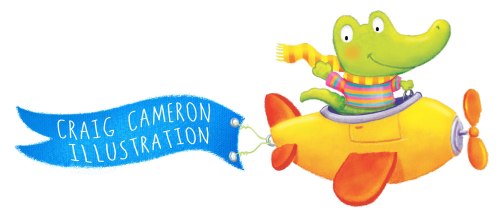
 Craig Cameron is originally from Carrickfergus, Northern Ireland. He graduated from the University of Ulster, Belfast in 1995 with a First Class(hons) degree in Visual Communication.
Craig Cameron is originally from Carrickfergus, Northern Ireland. He graduated from the University of Ulster, Belfast in 1995 with a First Class(hons) degree in Visual Communication.
After graduating, armed with paintbrushes and guitar, he travelled across to the north of England to pursue a career as an illustrator, working initially as a graphic designer in advertising and Children’s Book Publishing, and since 2002 as a freelance artist.
Over the last decade Craig worked on many exciting projects – with book publishers in the UK and US, also creating illustrations for licensed characters, magazines, greetings cards, and product packaging.
He currently lives in Manchester, UK, with my wife Annette and 3 children, Ellie, Lewis and Joe.
Here is Craig Explaining his process:
The steps I take in my process of creating an illustration
Client – NetJets – International Children’s Day Card / promotional item.
This brief was to create a colorful illustration to celebrate International Children’s Day, which would be handed out to passengers on 2nd June 2014.
I generally start with very small sketchy thumbnails in my sketchbook, thinking about the general concept, layout and composition. From this I then work up more detailed sketches in Photoshop using a Wacom tablet and pen. I enjoy both sketching with pencils and directly into Photoshop. The benefit of Photoshop is that you can rotate, enlarge and move items around easily.
I submitted 3 concept ideas to the client as sketches. I think my sketches tend to be fairly detailed, probably due to my personality and wanting to get them resolved in terms of tone and composition so I have a clear idea of how they will look when I go to final color artwork.

Rough concept sketch
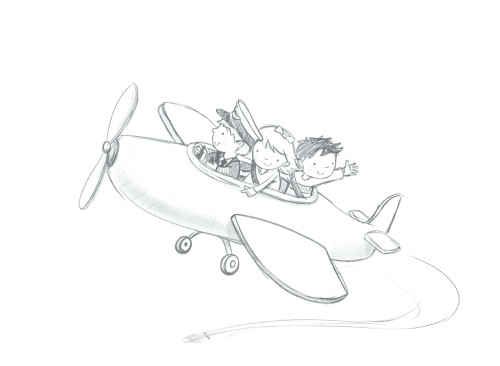
Refining sketch
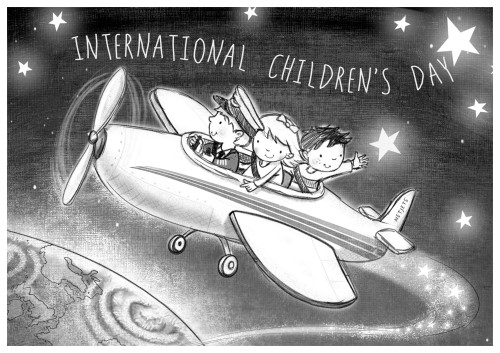
First concept sketch sent to client.

Second concept sketch for client.
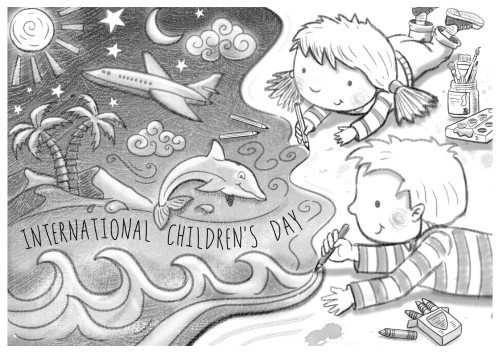
Third concept sketch for client. The client liked options one and three best but decided to go with option 1. There were pleased with the design and asked for a few small changes including adding the livery /stripes on the plane and NetJets branding.
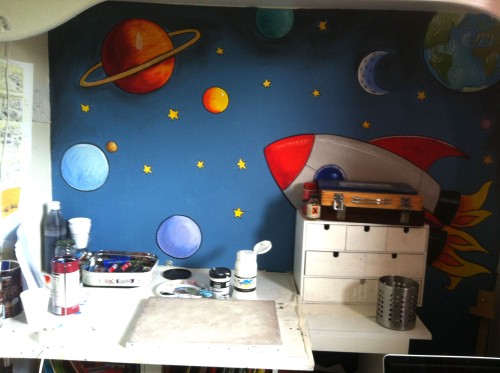
Although I work digitally primarily, I often like to use painted textures and backgrounds. In a small messy corner of my office I like to create these textures, using canvas boards, acrylic paints, gesso and dry brushing techniques until I get a texture which looks suitable.
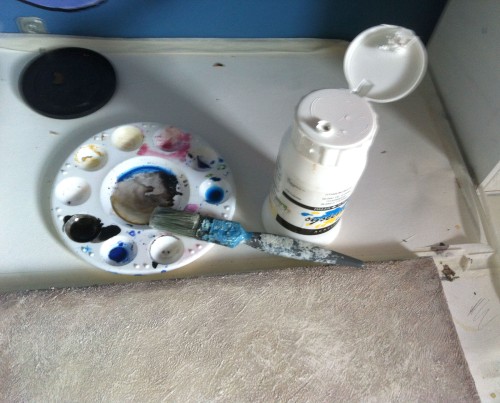
I’ve built up a library of these which can also be used with the photoshop brushes to give a more hand tooled effect. I scan the texture as a grayscale tiff file, using an Epson A3 scanner at a fairly hi-res (approx 400dpi).
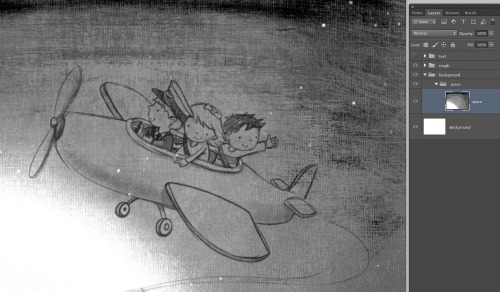
Once scanned I import into Photoshop and position the sketch on top as a positional guide.
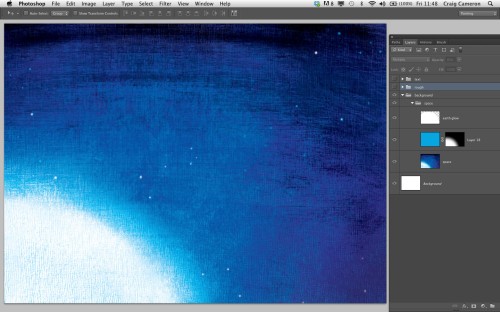
I color the background, often using layer options and adjustment layers, allowing the texture of the canvas effect to show through.


I tend to use a lot of layers, grouping the various items into folders. I paint using the airbrush and lasso tools, blocking out the general shapes before adding shading, details and highlights.


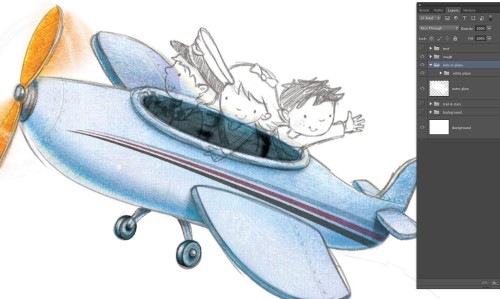
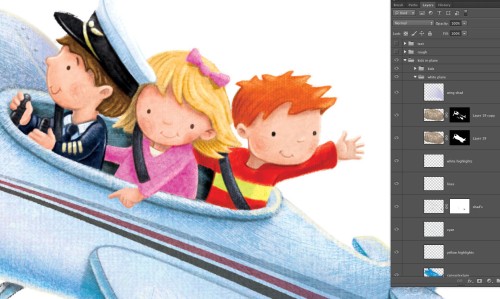
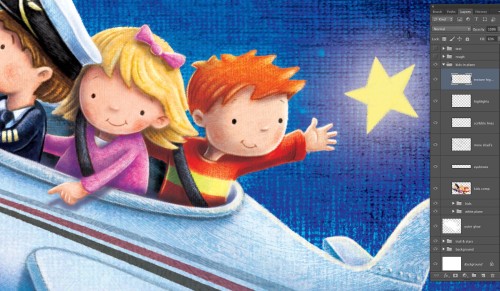
The final stages often take the longest time – adding highlights and extra texture until I’m happy with the overall look and feel.
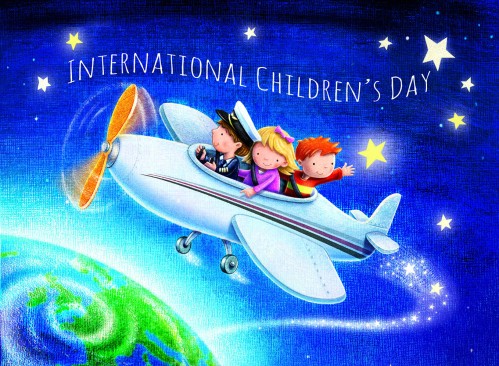
Recently I have enjoyed trying out new brushes in Photoshop which can give more natural, painted or hand tooled effect. The client was really pleased with the final artwork and asked for one small change which was to make the clouds on earth look less scribbly and more like soft swirls.
 The Rough Sketch
The Rough Sketch
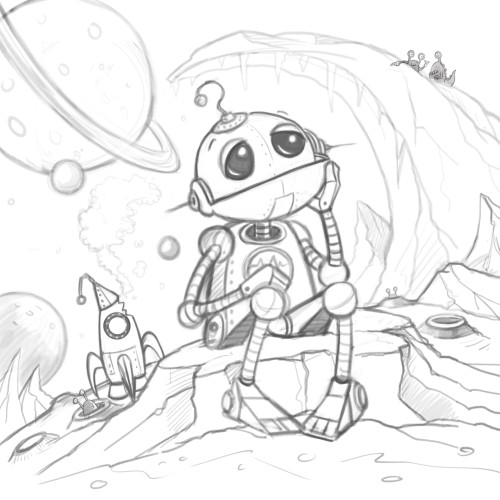 The Final Sketch
The Final Sketch
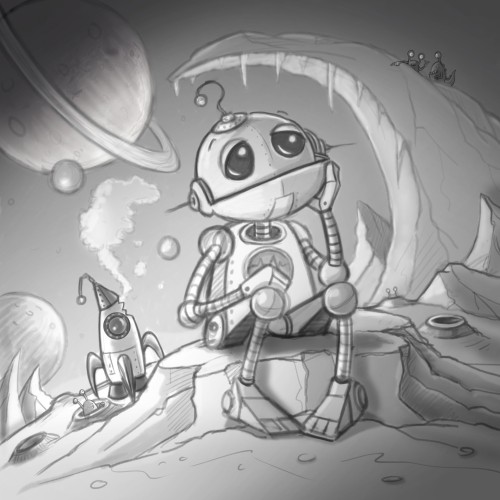
Working on tones.

The final illustration.
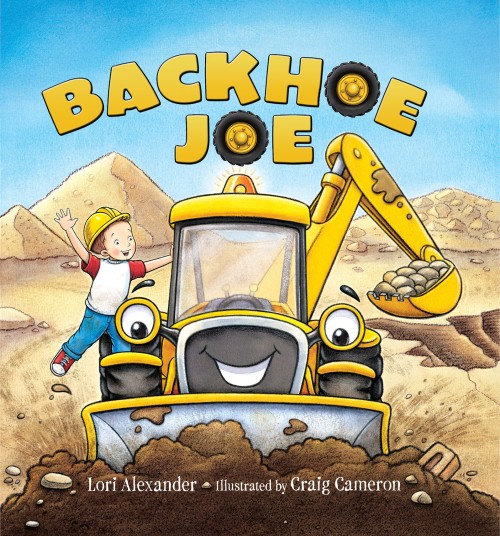
Backhoe Joe, written by Lori Alexander and Illustrated by Craig Cameron will be released on 16th September by Harper Collins US.
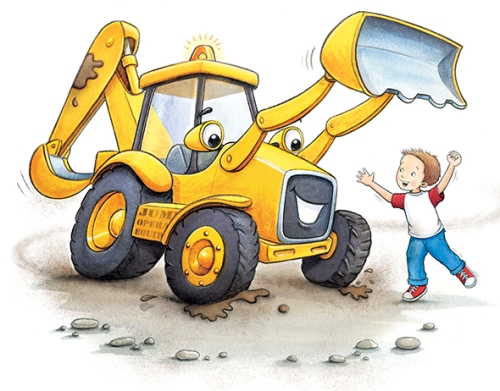
Above is some interior art from Craig’s Debut Picture Book.
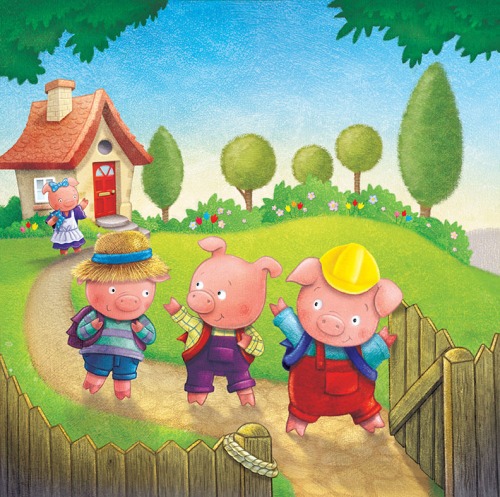
When did you first know you wanted to make a living doing art?
I went to Art College after A Levels, knowing that drawing/art was definitely the direction I wanted to go as a career after school. I attended a place on a Foundation Studies course in Art & Design at Belfast. At that stage I hadn’t made up my mind that I wanted to be an illustrator but my interest has always been in picture books and children’s brighlty coloured artwork. I then went on to an Illustration HND course at NEWI (North Wales). It was during those 2 years that the idea of actually working as an illustrator became more of a reality.
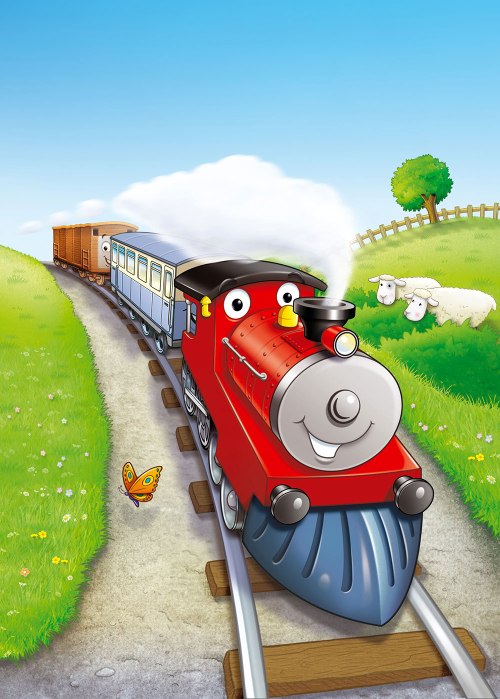
How long have you been illustrating?
I was fortunate to get my first commercial illustration commissions when I was at University, so have been illustrating for just over 20 years. After leaving University I initially worked in a design agency for 3 years and then for another 3 years as a book designer for a UK publishing house before going freelance in 2002 as a full time illustrator.

What was the first thing you did where someone paid you for your artwork?
At school I had 2 brilliant art teachers. I can honestly say that if it weren’t for them I probably wouldn’t be an illustrator today. They were very supportive, inspiring and encouraging and I loved working in the environment of the art studio. They both commissioned me to paint their portraits!
My first commercial commission was for Alton Towers theme park here in the UK. It was for a promotional page in a national newspaper and came through an illustration agent who had seen my work as part of my graduate exhibition. I think this was the turning point where I realized that having a career as an illustrator could really happen!
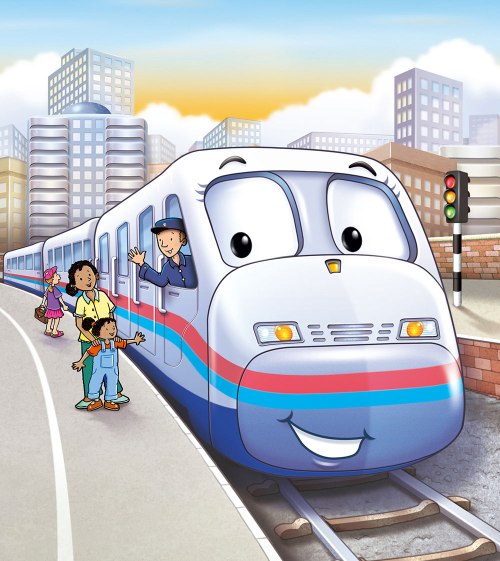

I see you graduated from the University of Ulster, Belfast in 1995 with a First Class(hons) degree in Visual Communication. What made you choose Ulster and Visual Communication?
I am from Nothern Ireland and grew up in a town called Carrickfergus, 15 miles outside of Belfast. I had previously studied for 1 year on an Art&Design Foundation course and I liked the University and of course it was close to home, friends and family. The Visual Communication course offered lots of flexibility to try different disciplines, photography, graphic design, art history, film making etc, which appealed me me as I was trying to figure out my possible career direction. Other famous children’s picture book artists have graduated from the same course at Belfast, including the wonderful Oliver Jeffers and Alison Brown.
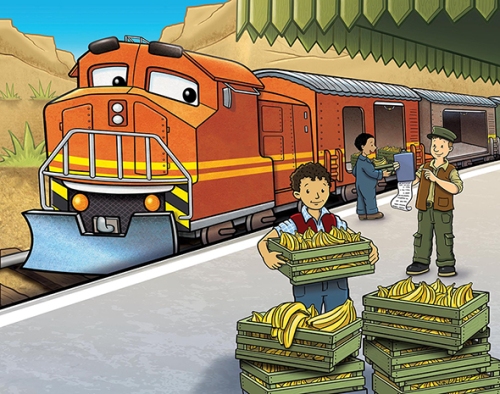
What types of things do you study with Visual Communication? What makes it different from getting a BFA?
The course offered a grounding across a range of diciplines in Art & Design but then the opportunity to specialise in the final years, so it was ideal for students who were initially unsure of their specialist subject or who wanted a more general Art & design qualification which might be suited to education or similar.
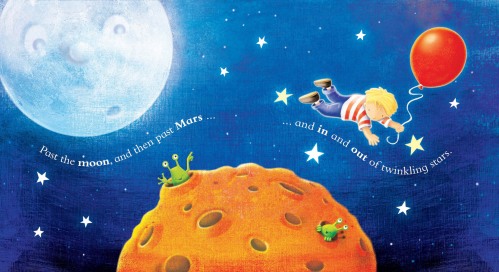
Did the School help you get work?
Prior to my degree at Belfast I did a 2 year illustration HND course in North Wales. (NEWI). This course was extremely practical and designed to help graduates find relevant commercial experience and contacts within the industry. During these years I was very fortunate to do a work placement with Penguin Books in London. Also, our final exhibition was moderated by an illustration agent based in Manchester, UK. She liked my work and asked me to meet her for an interview which lead subsequently to my first commercial commissions and having a artists rep whilst still at University.

Do you feel that the classes you took in college have influenced your style?
I’m not sure that the colleges really pushed my work in any particular direction, but certainly the working environment and seeing the work of other students helped to inspire and encourage me to constantly develop and improve my work. The biggest influence came through the illustration rep. The agency I joined was called The Art Collection and there was a studio with about 8-10 in house professional illustrators. I was completely blown away by their talent, humour and professionalism.

Was your after graduating trip with your guitar just for fun or were you on a quest to find a job?
After graduating I moved from N.Ireland over to Manchester, England to work with the Art Collection. I have always loved music and have played guitar in college bands, but never really considered following music as a career – maybe in the future, who knows…!
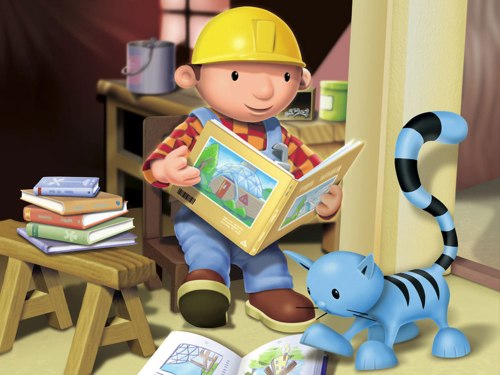
How did you find your first job doing advertising graphic design?
Again I was quite fortunate. An illustrator friend of mine had been renting space from a design agency in Manchester. They were looking for a junior designer with good drawing skills as they did lots of work for local restaurants and businessess. She gave them my name and I went for interview. The position was really good in that I spent about 50% of my time on illustrations and the other 50% on graphic design, logos, concepts etc. I really enjoyed my time although it was a bit hectic at times and often long hours. I learnt an awful lot in terms of producing artwork for print and using commercial DTP software such as Photoshop, illustrator etc.
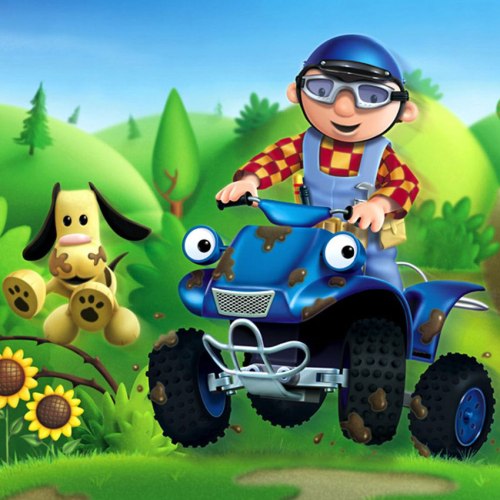
What children’s book publisher did you work for and how did that come about?
I have always loved children’s picture books so when I saw an advert for a book designer in Manchester for Egmont Books, I jumped at the chance! I was fortunate to pass the interview and worked there for 3 years, prior to going freelance full time.
It was a small design team, friendly, fun and a great environment to work in, surrounded by toys and books. I worked mostly on educational, licensed character and novelty books.
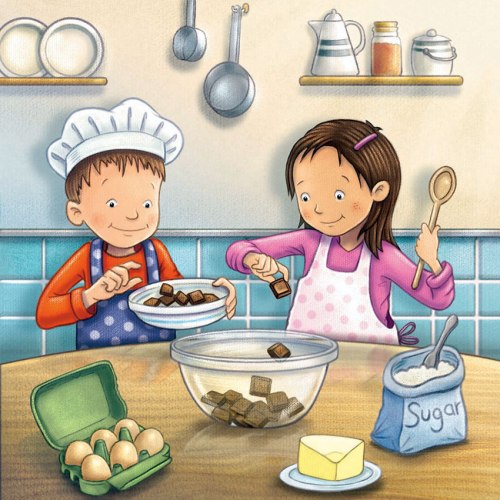
Was that job the reason you got into illustrating for children?
It certainly didn’t put me off, but I think my love of illustration and books has been there since I was a child. It was a really good platform to start from as I learnt a lot about the business of publishing. I developed valuable skills in layout, design, typography and in producing artwork for print. Also I made good friends, many of whom I still keep in contact with now.

What was the first illustration work you did for children? How did that come about?
In the early illustration agency days, I received a number of jobs aimed at the children’s market, including the work for Alton Towers and a promotional Children’s Book for Boots the chemist. I think my illustration style always tended to fit the chidren’s market best as the colours are bright and playful.
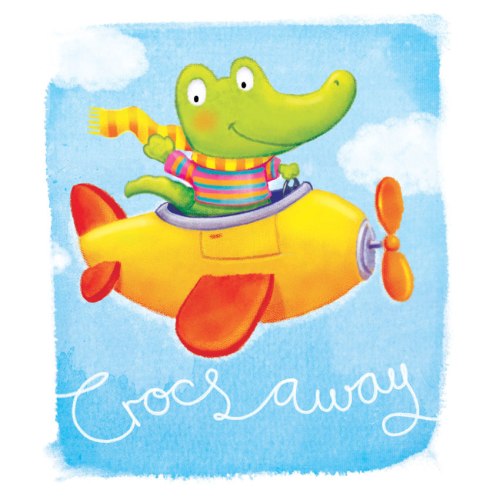
How did you get to do eight early readers books with Stone Arch Readers?
I have advertised my illustration work on the Children’s Illustrators website (www.ccillustration.com) and have received a number of really good commissions through this page over the last 4 years, particularly from the US. I was initially approached by Stone Arch Publishing, through this website in 2012 to do a series of 4 x Early Readers based on train characters. They followed this with a second set of 4 books in 2013.
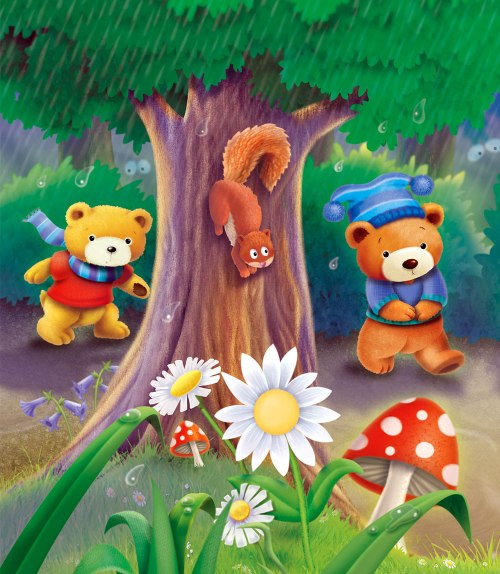
Illustrating seven books in one year must have been a lot of work? How long did it take you to illustrate each book?
The work fell into 2 sets of 4 books. Each project took around 4-6 months from start to finish with each book taking around 6 weeks to complete.
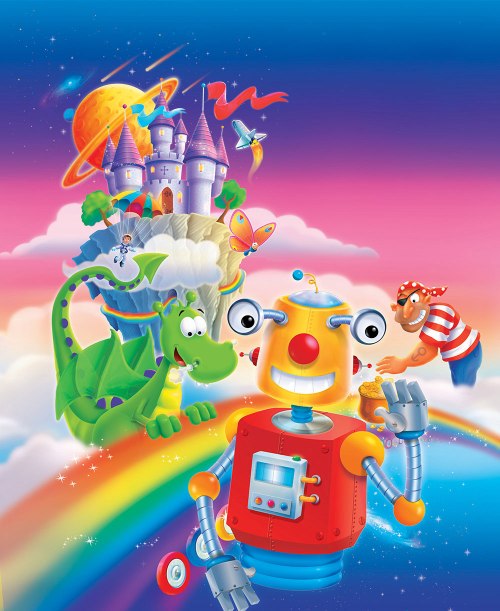
Are you under contract to illustrate more?
No.
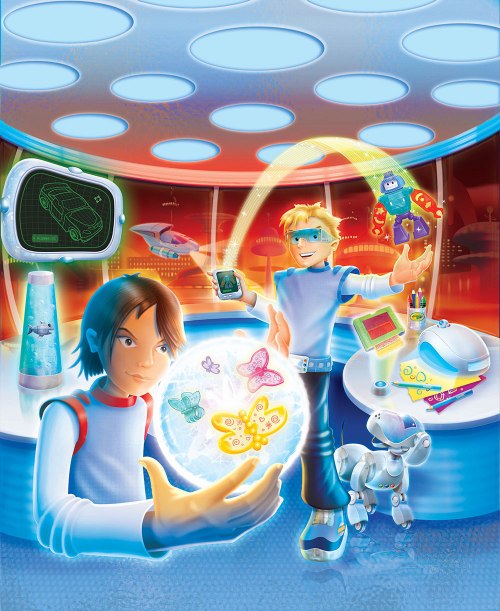
How did you land the contract with HarperCollins to do BACKHOE JOE?
Backhoe Joe came through my agent here in the UK, called Beehive Illustration. I think Harper had also seen my work on the children’s Illustrators website as I had a number of examples of diggers and construction vehicles on there which fitted the look they were going for.
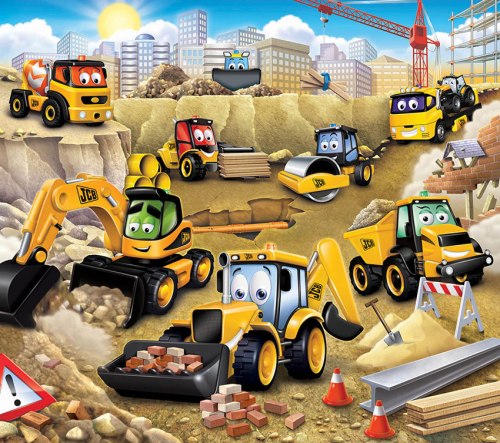
Was this your first book with a US publisher?
This is my first children’s picture book which is very exciting. It’s due to be released in August 2014 so I’m really looking forward to seeing a printed copy! I have worked with a number of US publishers before on early readers, magnet and sticker books and educational illustration.

Do you have an artist rep.? If so, who? If not, would you like to have one?
I am currently represented in the UK by Beehive Illustration and also a local agent in Manchester called Monkey Feet Illustration. Some really great projects have come through these in recent years, including a style guide for My First JCB and publishing projects.
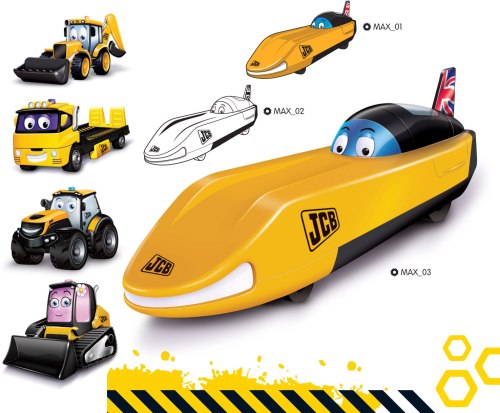
Do you think you will ever try to write and illustrate a picture book?
I would love to!… and have a number of ideas that I have been recently working on.
I’ve always particuarly loved children’s picture books and this is an area I would really love to develop and focus on in the future.
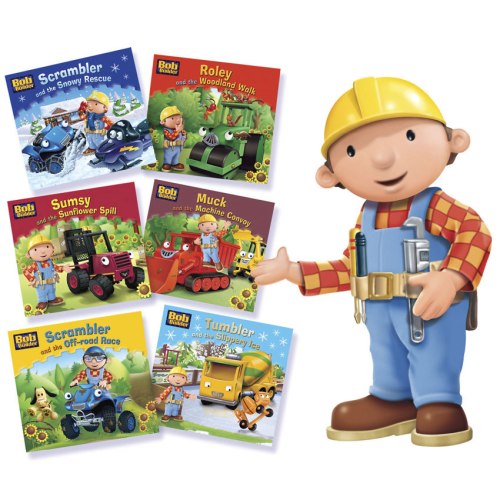
How did you get to illustrate Bob the Builder books?
I have worked on licensed character illustration since my days at Egmont Books as a designer. I worked on a set of Bob the Builder Story Library books and have illustrated Bob for BBC magazines on a monthly basis for almost 10 years.
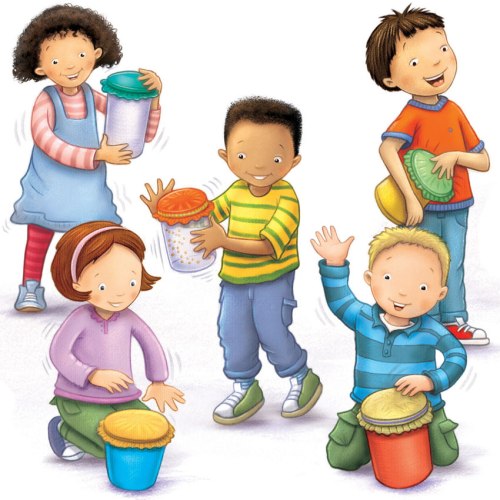
How many picture books have you illustrated?
Only one so far, although Harper collins have mentioned the possibility of a second follow up title to Backhoe Joe – to be confirmed.
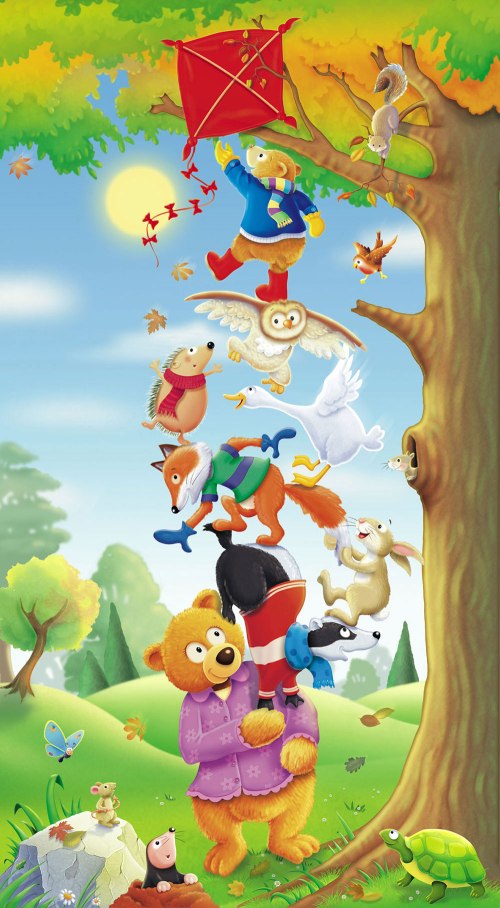
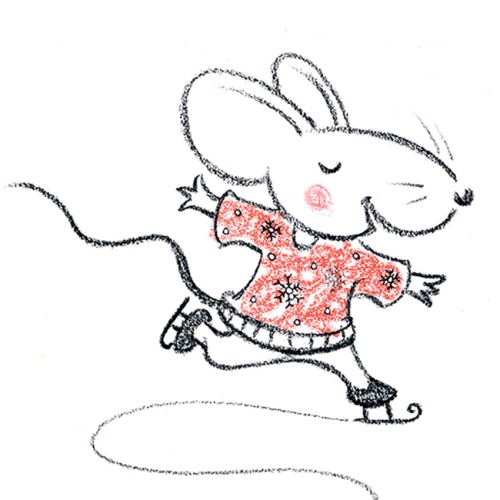
Do you sell a lot of your black and white illustrations?
I have been commissioned to create B&W illustrations for publishing editorial and for the my 1st JCB licensed character style guide. I was approached recently to work on a young fiction title with B&W interior illustrations, which is something I would enjoy doing more of.
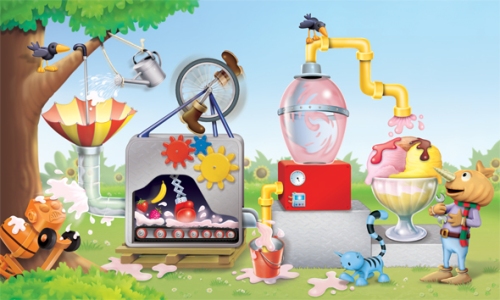
Have you done any illustrating for children’s magazines?
Yes – lots! I have worked for a number of BBC magazines here in the UK, including Bob the Builder, Cbeebies , Thomas the Tank Engine and The Magic Key magazines. I have been commissioned also for a few editorials including Practical Parenting and Woman’s Weekly!
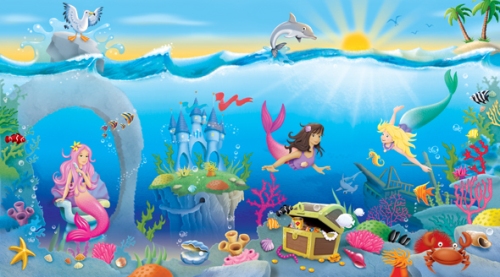
What is your favorite medium to use?
I almost always work digitally now, mostly in photoshop or illustrator, although I love to include painted textures and patterns in the artwork if possible. Working digitally allows so much flexibilty in colouring, designing and making alterations when required – and it’s not as messy! Although I do still really enjoy sketching in my sketchbook.

Has that changed over time?
It used to be that all my work was drawn or hand painted – but over the last few years almost everything is done directly on my Apple Mac. I use a Wacom pen and tablet to draw with. I now also do the pencil roughs on the mac using a style/brush effect that has a sort of pencil look to it.
Over recent years I have intentionally tried to create artwork with a more painted, textured feel.
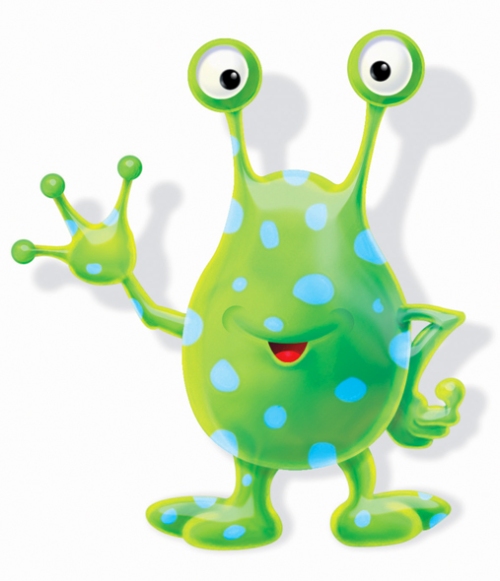
What is the one thing in your studio that you could not live without?
My Wacom drawing pen and tablet.
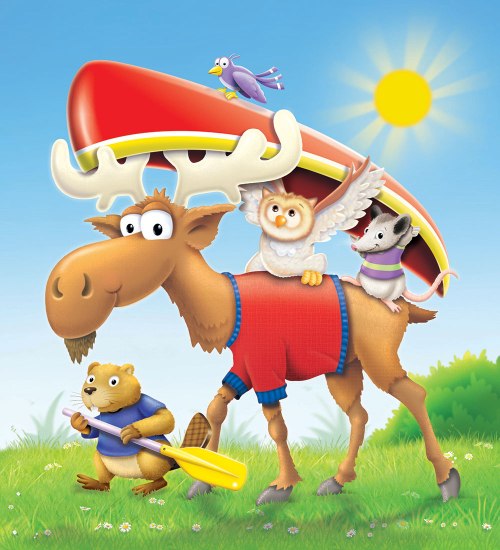
Do you try to spend a specific amount of time working on your craft?
I’m typically busy with commissioned work during the day. We have three children and I drop them off at school at 9am – I then have the remainder of the day to work on commissioned projects.
The challenge I find difficult is to find time to work on personal projects or sketchbook time. I tend to put client work first, especially if there’s an urgent deadline to work to. However, I do really want to focus on some personal projects and development over the next few years.
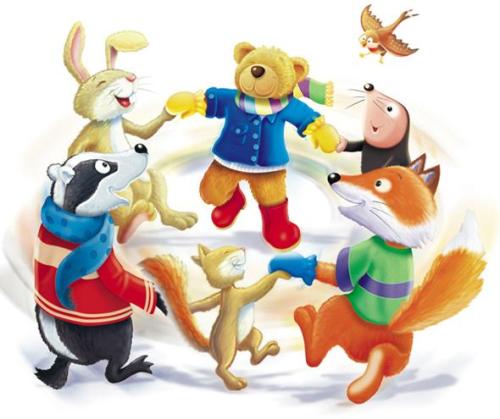
Are you open to working with self-published authors?
I am contacted quite regularly through the Children’s Illustrators website by self-published authors. I tend to say no, as the work is speculative and I have personal projects I want to concentrate on. That said, I did agree to work with one unpublished author a few years ago, called Giles Paley Phillips, on a project called Balloon and Me. I really liked his writing and we went as far as to collaborate and complete a picture book dummy and colour cover and spreads, which we sent out to a number of publishers in the UK. We received an offer and some advance payments but unfortunately the project fell through shortly after. Giles went on to have a number of successful books published including The Fearsome Beastie, which won The People’s Book Prize 2012 and is currently being made into a CG Short Animation.

Do you take pictures or do any types of research before you start a project?
Yes – I generally take reference photos and also spend a considerable amount of time online finding reference as the first stage in my process. I also often create a mood board, which might include colours and textures and reference which I find helps me to develop a clearer idea in my mind of the general feel and direction of the illustrations.
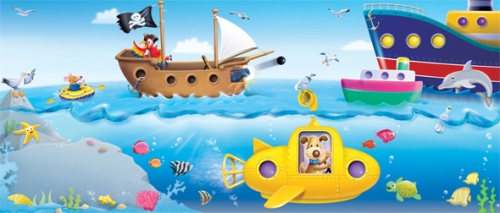
Do you think the Internet has opened doors for you?
Absolutely! 10 years ago all my work was coming from UK clients, whereas in the last 5 years that has changed and I am receiving more interest and commissioned work from the US and Europe. Also It has become so much easier to network and publicise our work through personal websites, the internet and social media. It’s easier to source reference materials and there are fantastic resources available such as podcasts and online tutorials. It’s probably never been easier or cheaper to promote yourself, but with that is increased competition, Global competition! and the challenge of competing in an extremely competitive market.
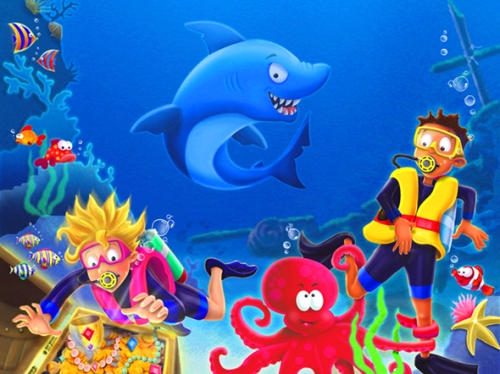
Do you use Photoshop with your illustrations?
Yes – Photoshop is my preferred software for creating illustrations. If I’m putting a book together I would tend to use InDesign and sometimes use Illustrator for logos and flat colour or black and white illustrations.
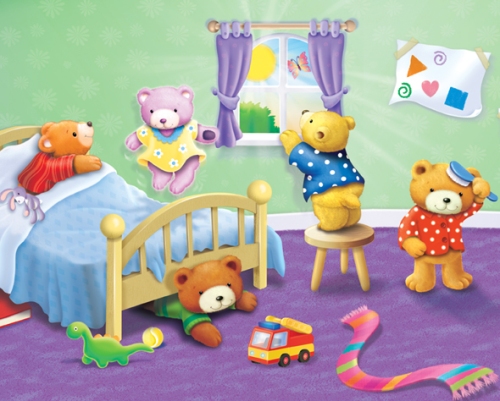
Do you own or have you used a Graphic Drawing Tablet in your illustrating?
Yes – I currently have a Wacom Intuos 3 tablet which I love, although I have been looking at the Cintiq’s and am considering splashing out on one of those – They look fantastic but are expensive!
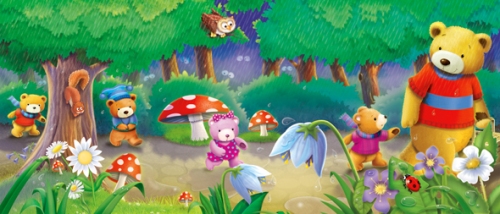
Do you have any career dreams that you want to fulfill?
As I mentioned previously my first love is children’s picture books and I would really like to create my own. I have a few ideas – so watch this space!
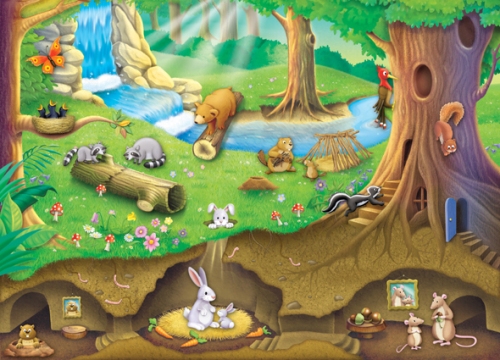
What are you working on now?
I’m currently working on a fairly large educational project for a UK publisher and also a set of editorial illustrations for Thomas the Tank engine magazine.

Do you have any material type tips you can share with us? Example: Paint or paper that you love – the best place to buy – a new product that you’ve tried – A how to tip, etc.
I have really enjoyed working with painted textures in Photoshop. There are lots of really interesting brushes available or you can make your own. That’s an area I’m exploring and enjoying personally. Also listen to podcasts from other practicing illustrators. I tend to listen while I work and it can be very inspiring and encouraging to hear about the experiences of other professionals as they discuss their methods and share advice and expertise.
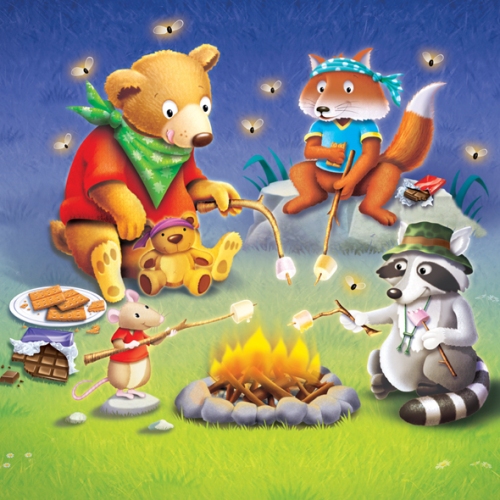
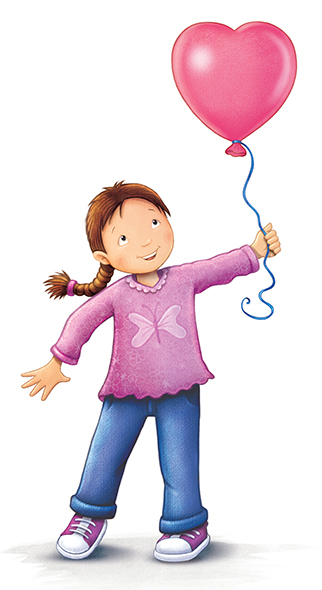
Any words of wisdom on how to become a successful writer or illustrator?
Draw a lot! When I was at college/university the tutors always stressed keeping a sketchbook and drawing constantly. I didn’t do it enough to be honest. But certainly I appreciate the value of drawing now… it will make life a lot easier!
Also experiment and don’t bogged down too quickly with one particular style. It’s good to be versatile and to be able to work in different ways, mediums. Try some photography, graphic design and computer software too… When you’re working as an illustrator it’s very easy to get recognized for one particular style. That can be good but it can also be restricting. My feeling is that you should constantly be developing and pushing yourself to be the best you possibly can.
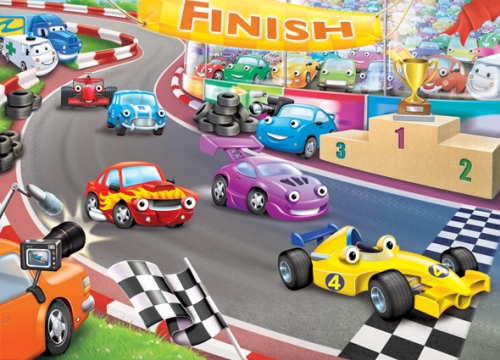
Thank you Craig for sharing your process, journey, and expertise with us. I know you will have many more successes in the future and we’d love to hear about all of them, so please keep in touch.
To see more of Craig’s illustrations you can visit him at: http://www.craigcameronart.com/
Please take a minute to leave a comment for Craig, I know he would love to heard from you and I always appreciate it. Thanks!
Talk tomorrow,
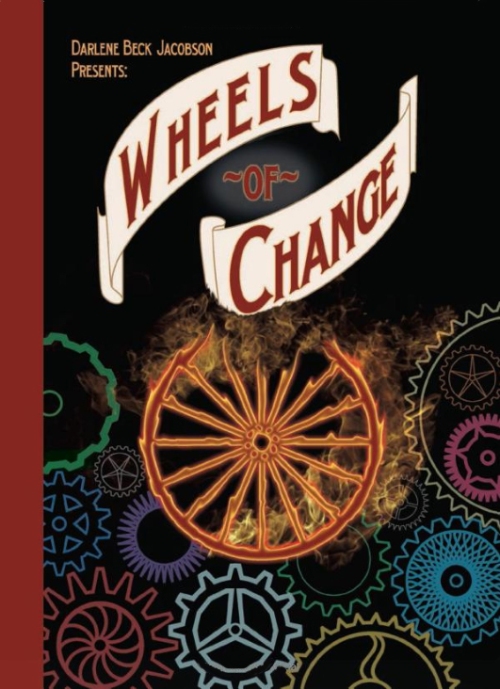
WHEELS OF CHANGE STUDY GUIDE
Hope this gives you some ideas of how proceed when you publish your book.
Talk tomorrow,
Kathy
I recently finished reading the classic book "Wrinkle in Time" with my eight-year-old. It begins with the famous—and much maligned—line, "It was a dark and stormy night ..."
Writers look down on this opening phrase as being "obvious" and "too moody." It has been the butt of jokes from "Throw Momma from the Train" to Peanuts comics. But I'd like to write a brief defense of Madelaine L'Engle's linguistic choice as well as take a look at what makes descriptions work ... or not work.
L'Engle's phrase, at its most basic, does, indeed, set a tone for the book. And it describes the intensity that the character Meg feels. It also foreshadows the "dark"/sinister beings the characters will encounter, as well as the darkness through which the characters travel during their cross-planetary adventure. So I think that mentioning a "dark night" is thematic and relevant to L'Engle's whole book; she writes it as a fight between love and "the dark."
So what about the complaint that to describe night as dark is too obvious? I would argue that there are all kinds of nights. There are nights that seem like a faint orange hue hangs between the greenness of piled snow and heavy-set clouds. There are purple nights. There are also cold bright nights when the sky is clear and the moon shines like a shadeless pendant bulb.
And yes, there are stormy nights when the darkness seems to swallow up every detail out of reach, as though a cocoon of black velvet envelopes you: a dark and stormy night.
But these days, readers want more than that. We expect writers to paint with words in a more extraordinary way.
On the other hand, overly long or beatific descriptions are considered passé: Flip to almost any page in the classic "Anne of Green Gables" series and you'll find paragraphs of detail like: "a veritable apple-bearing tree, here in the very midst of pines and beeches ... all white with blossom. It's loaded [with apples]—tawny as russets but with a dusky red cheek. Most wild seedlings are green and uninviting."
While most of us still appreciate (and even love) L.M. Montgomery's lengthy stylistic descriptions for its time, these days such florid language is considered "purple prose."
Needless to say, descriptions can make or break even the best concepts and plots. Writers need not only to be gifted storytellers, but word makers and image creators of a new bent.
One author who excels in this is Mark Zusack. Consider some of these images from "The Book Thief":
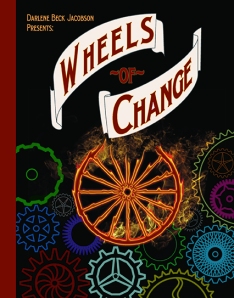 A few weeks ago I was out with Darlene Beck Jacobson and she started talking about the work she was doing to develop a curriculum and study guide for her debut book that is coming out in September.
A few weeks ago I was out with Darlene Beck Jacobson and she started talking about the work she was doing to develop a curriculum and study guide for her debut book that is coming out in September.
I asked her to share what she was doing with all of you, since we can all learn from each other. Here is part one of the three part series.
TYING YOUR NOVEL INTO THE CORE CURRICULUM By Darlene Beck Jacobson
Schools are changing. So are the curriculum requirements. With teachers being squeezed for time and tight budgets limiting purchases of “frivolous” things like fiction for the classroom, what can we writers do to give our books a fighting chance on classroom reading lists?
You can develop a CURRICULM GUIDE and STUDY QUESTIONS to tie into the Core Curriculum Content Standards. For my historical middle grade novel WHEELS OF CHANGE, which takes place in 1908 Washington DC, I developed a curriculum guide on the second wave of the Industrial Revolution. (see attached)
I also did a separate set of Study Questions that tie into Reading and Literature objectives. (see attached) You can do the same thing for your novel…even if it isn’t historical. Begin by generating questions that fit the Reading and Literature sections of the standards. Then look for the universal theme or ideas that would generate good classroom discussions on topics that cover important issues such as war, homelessness, divorce, illness, poverty, prejudice, etc. These topics can be part of Science, Health, and Social Studies units. Fellow writers have even tied their books into art and music areas as well.
You can also develop worksheets, puzzles, games or other reproducible activity sheets that teachers can use in the classroom. Everything you can do to make life easier for a teacher, will help make your book stand out from all the others that cry for attention in the curriculum.
To learn more about Common Core Standards visit: www.commoncorestandards.org
PART II: Curriculum Guide tomorrow
Darlene Beck Jacobson has loved writing since she was a girl. She also loves bringing the past to life in stories such as WHEELS OF CHANGE (Creston Books), her debut novel. Her stories have appeared in CICADA, CRICKET, and other magazines. Her blog features recipes, activities, crafts and interviews with children’s book authors and illustrators. She still loves writing and getting letters. Check out her website at: http://www.darlenebeckjacobson.com
WHEELS OF CHANGE is due out on September 22, 2014.
Talk tomorrow,
Kathy
Hi Kathy – this sounds like a great opportunity for new writers, but it’s Lauren Oliver, not Lin.
Patti,
Thanks for pointing out my mistake. It is easy to make after being Regional Advisor of the SCBWI for ten year and being connected to Lin. I’m quickly correcting this.
Kathy